David Fyfe
The former Synergy CEO says collaboration will pave the road to net zero
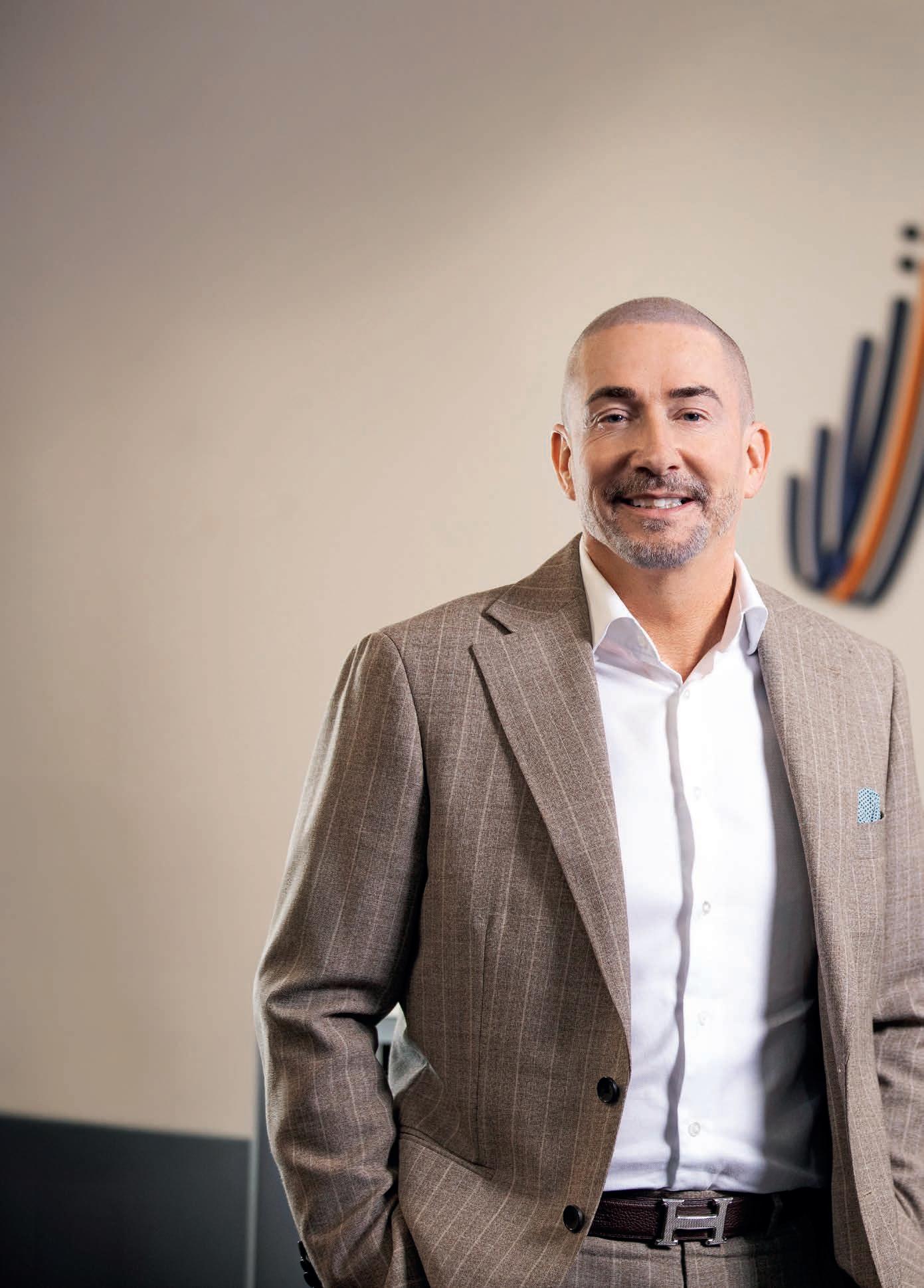
A STATE TO CALL HOME
Laying the foundation for South Australia’s future
WATER DELIVERED
A thriving SEQ flows from new Fitzroy to Gladstone pipeline

The former Synergy CEO says collaboration will pave the road to net zero

Laying the foundation for South Australia’s future
WATER DELIVERED
A thriving SEQ flows from new Fitzroy to Gladstone pipeline
As a global leader in IoT and connected transportation, Geotab processes and analyses data from over 4 million connected vehicles, generating over 75 billion data points per day. It’s a huge amount of data, and it is most powerful when we have the right tools to securely and efficiently manage it. That’s why we have partnered with Google to leverage Google Cloud’s data analytics and machine learning solutions.

Geotab has been awarded two Google Cloud Customer Awards for its achievements in the transportation sector. Recognition in both the Cross Industry and Sustainability categories underscore Geotab’s successful use of Google Cloud’s analytics to innovate and drive sustainable practices in fleet management.
Kirsten Kliphouse, the President of Google Cloud Americas says that the Awards are an opportunity to recognise the most innovative, technically advanced, and transformative cloud deployments across industries globally built on their platform.
In her congratulatory message to Geotab, she acknowledged Geotab’s role in “serving as an innovator for the industry”, which also highlights Geotab’s innovative integration of data to revolutionise the transportation sector, leading to transformative impacts across organisations and customers around the world.

As the world’s premier EV telematics provider, Geotab has demonstrated its commitment to reducing emissions through its Electric Vehicle Self-Assessment (EVSA) tool, which won Google Cloud’s Award for Sustainability.
The tool provides tailored EV recommendations to support businesses and governments in transitioning to electrified fleets. For two consecutive years, Geotab was also identified as a Cross-Industry winner impactful transformation facilitated by Google Cloud. The award also acknowledges the launch of the Intelligent Transportation Systems (ITS) and its flagship transportation analytics platform Altitude.
Altitude has been pivotal in supporting government agencies by offering actionable, privacyconscious data insights for city planning and transportation network enhancements.
Strong synergy of Geotab and Google Cloud show great potential
As a valued partner in the Google Cloud Ready - Sustainability validation program, Geotab plays a crucial role in accelerating sustainability programs and informing strategic decisions for future developments.
Geotab’s collaboration with Google Cloud delivers significant benefits, including real-time improvements in driver safety and behavior, advancement of sustainability goals, enhanced productivity and significant cost savings.
This partnership not only redefines fleet management standards but also illustrates the impactful role of technology in fostering a more sustainable and efficient transportation industry.
An industry-leading solution
Geotab’s partnership with Google demonstrates the company is at the forefront of leveraging data analytics and machine learning to enhance fleet management, drive sustainability and create safer transportation systems worldwide.
By integrating Google Cloud’s advanced analytics with its telematics expertise, Geotab is confident of continuing its lead in the development of sustainable transportation solutions, demonstrating the profound impact that innovative technology can have on the transportation system today.
Australia now has its emissions-reduction targets locked in at a federal policy level, and with that certainty comes a sharper focus on the role our utilities must play. e government has set a national target to reduce emissions by 62–70 per cent below 2005 levels by 2035. It argues the target is “ambitious, achievable, and in Australia’s national interests”.
While it has not set a renewable energy target beyond the 82 per cent of 2030, few industries will have to take on as much responsibility in the nation’s decarbonisation journey as energy producers, networks and the broader utilities sector. Transforming an entire energy system is nothing short of monumental, yet the progress already made continues to impress.
In just the past year, energy policy has become central to this transition and shaping Australia’s future. And it is the utilities who are the ones preparing to deliver this future. With renewed momentum established by clear goals, federal and state budgets have laid out extensive investment in the critical infrastructure needed to support a cleaner, more resilient nation. e transformation isn’t limited to energy. e water sector has ushered in major updates to the Australian Drinking Water Guidelines, strengthening public health protections. Meanwhile, amendments to the Security of Critical Infrastructure Act 2024 have elevated and expanded cybersecurity obligations for telecommunications providers, recognising the crucial role communication networks play in national resilience.
Across water, energy and communications, Australia is moving con dently toward a more sustainable and secure future—though not without navigating increasingly complex risks and unknowns. What remains constant, however, is the extraordinary work of the leaders, innovators and frontline teams steering this transition. eir expertise and dedication shape the insights, solutions and breakthroughs that de ne the modern utilities landscape. In energy alone, distribution networks are working to balance a ordability, electri cation and grid stability as demand patterns shi .
We are living through one of the most signi cant periods of change the sector has ever seen. Yet despite the pressure, Australia’s essential service providers continue to rise to the challenge—delivering reliability, a ordability and sustainability in equal measure. Our nation would look very di erent without their work, and it remains a privilege to help share the knowledge that allows utilities across all sectors to learn, adapt and thrive together.

Drop Katie a line at katherine.livingston@primecreative.com.au or feel free to call on 03 9690 8766 to let us know what you think.
Don’t forget to follow Utility on social media – find us on LinkedIn, X and YouTube.
Rima Munafo rima.munafo@primecreative.com.au 0413 475 078
CLIENT
Scan to subscribe to Utility’s weekly newsletter –delivered to your inbox every Thursday morning.



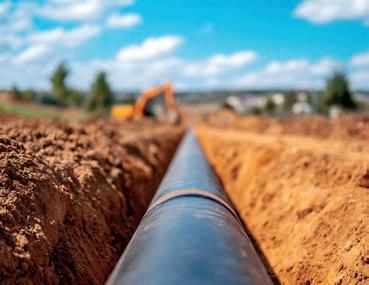



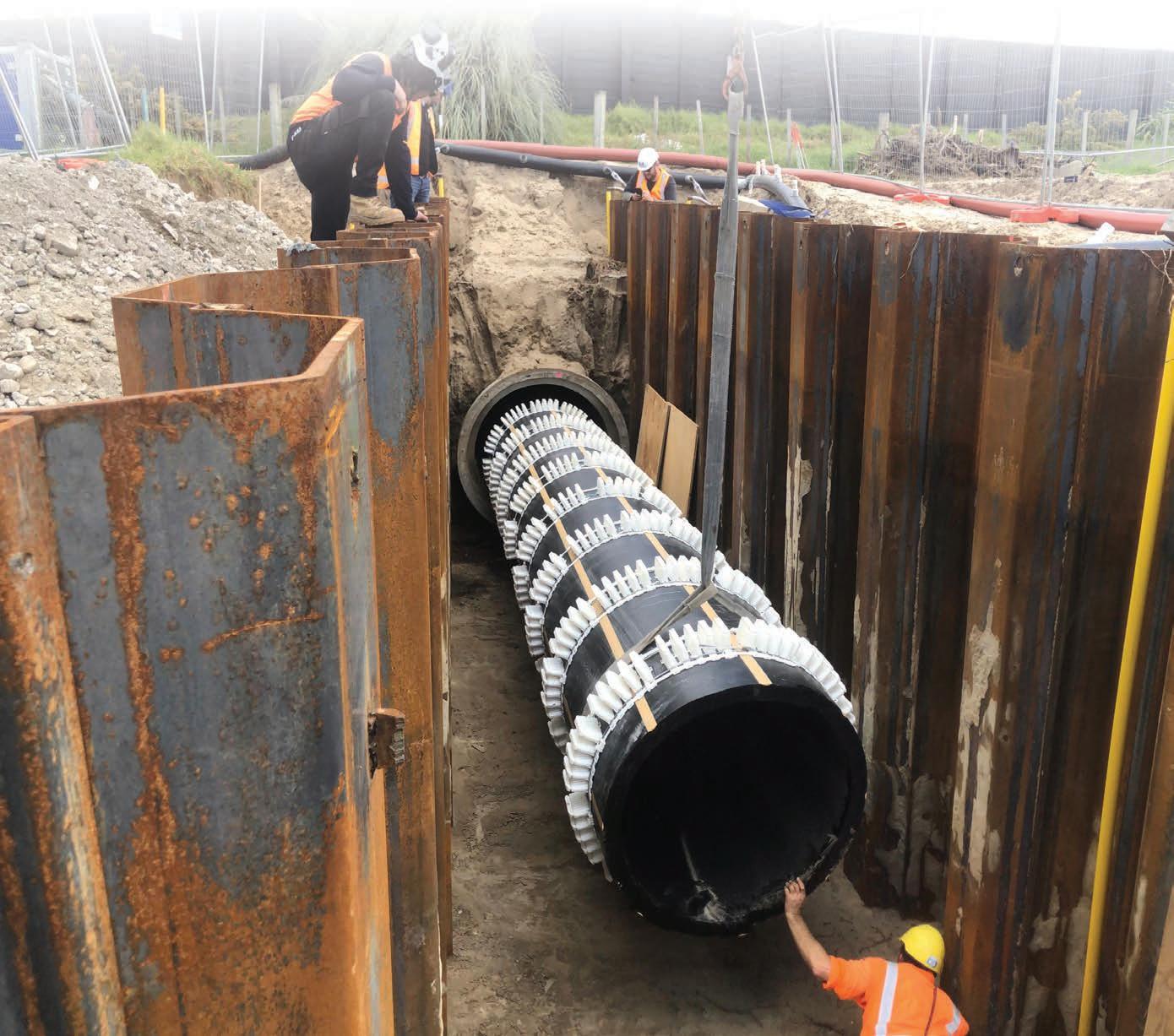

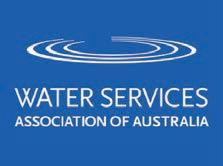
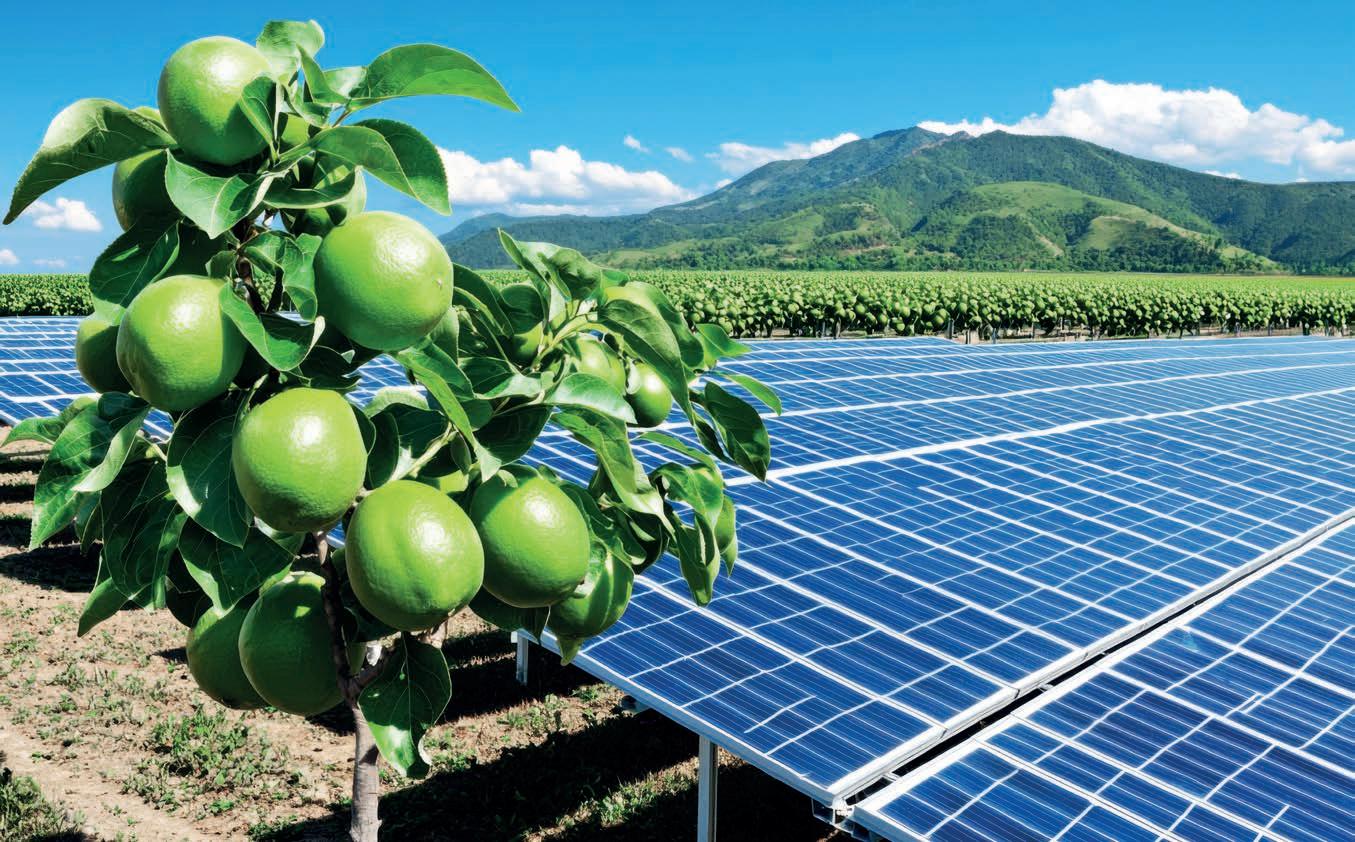

A sector in transition pauses to honour the people and projects shaping its future.
In a year de ned by market volatility, rapid electri cation, and the steady rise of distributed energy resources, the Energy Networks Awards served as a rare moment to gather, re ect and recognise the people and programs li ing standards across the sector. Presented in Melbourne at the Energy Networks Dinner, the awards honour excellence across four core areas—consumer engagement, industry innovation, women in networks and individual contribution—with an additional Chair’s Recognition acknowledging foundational work in digital trust.
Energy Networks Australia Chief Executive Dominique van den Berg framed the evening succinctly; “Our awards celebrate the people and projects that are shaping the future of Australia’s energy networks; these winners exemplify the commitment and talent driving our sector forward.”
No small claim. Yet the stories behind each award show how networks are converting ambition into capability— bringing communities with them, and building systems that can carry the weight of Australia’s energy transition.
Western Power’s Carla Basden received the Women in Networks Award for leadership in major customer decarbonisation—work that translates the high-level
goals of clean energy into real projects and measurable capacity on the grid. Basden’s team engages large-scale generators and load customers, navigates infrastructure relocations, and collaborates to sequence investment underpinning the Clean Energy Link transmission expansion. is is not just connection management; it is the practical choreography of grid transformation across one of the world’s largest islanded electricity systems. Western Power has said this program is “having a transformative impact on the decarbonisation of Western Australia,” with the Clean Energy Link – North project alone unlocking more than 1GW of additional renewable generation capacity in the Mid West region—a datapoint that grounds leadership in outcomes customers can feel.
If the transition demands new levers, Essential Energy’s Industry Innovation Award shows one: Australia’s rst ready-to-use vehicle-to-grid (V2G) solution. Built with partners CSIRO, Sigenergy and AUSEV®, and tested at Essential’s Innovation Hub in Port Macquarie, the project gives households a path to use their EVs as exible energy assets—powering homes, supporting the grid, and, potentially, exporting energy back into the market.
Essential Energy’s media materials emphasise the system bene ts—grid stability, customer control and new value streams—as well as the process improvements behind the scenes, from power modelling to streamlined connection processes with AEMO and EnergyCo. It is a reminder that innovation is not only a technology story; it is a delivery story that aligns design, regulation and customer experience.
Consumer engagement: community energy by, and for, community
Ausgrid took home the Consumer Engagement Award for Empowering and energising community: e Wanaruah/Wonnarua Community Energy Strategy—a program that demonstrates how respectful, community-led approaches can guide development and earn social licence. e recognition signals that technical excellence alone is not enough; networks must design with people, not simply for them, particularly when infrastructure is installed close to where communities live and work.
ere’s a broader lesson here. As local energy strategies proliferate, engagement becomes an operating discipline. Done well, it accelerates timelines, reduces con ict and builds durable trust. Done poorly, it stalls projects and erodes con dence. Ausgrid’s award points to the former.
Individual contribution: making complexity usable
Behind every system upgrade or new capability, there are practitioners who make complexity usable. Hadi Lomei of Essential Energy—specialising in power system modelling and renewable integration—won Individual Contribution, recognised for technical leadership that smooths the path for clean projects to connect and perform. Essential’s account highlights how modelling and process improvements reduce friction for developers, strengthen collaboration with market bodies, and build sector capability through education partnerships.
at dual thread—doing the work and teaching the work—is powerful. It raises the oor for everyone, which is precisely what the transition needs.
Chair’s recognition: trust, at grid scale
If distributed energy is to play its full role, it needs a security backbone. e rst-ever Chair’s Recognition Award acknowledged the National Energy Public Key Infrastructure (NEPKI) Team, credited with building the digital trust framework that will allow millions of consumer energy resources—from roo op solar to home batteries and EVs—to connect securely and seamlessly. e gesture is more than symbolic; it signals that governance and cybersecurity are now as foundational as steel and copper.
What the awards say about where networks are heading ree threads stand out across this year’s winners. First, innovation is moving from proofs to products. V2G is no longer a slide; it is a system tested on a network, with households and market interfaces in view. at evolution—from trial to deployment— will de ne the next ve years of distributed energy. Second, leadership looks like integration. Basden’s work sits at the junction of transmission expansion, customer strategy and long-term planning. Lomei’s contribution blends modelling, process redesign and capability building. In both cases, value emerges because the pieces come together.
ird, engagement is an engineering input. Ausgrid’s program is a case study in community- rst design. It treats respect and participation as conditions for delivery, not add-ons—an approach that o en proves faster, cheaper and more resilient over the life of an asset.
The cadence of an industry dinner
Events can feel ceremonial. Yet the Energy Networks Dinner also functions as a barometer of priorities. e category mix—innovation, consumer outcomes, individual practice, and inclusive leadership—signals where attention is turning. e addition of a Chair’s Recognition for digital trust underscores the sector’s understanding that cybersecurity and interoperability underpin customer-centred networks.
e ceremony also reveals how networks are reframing the word “infrastructure.” It is not only about assets in the ground; it is about processes that help communities participate, so ware that helps devices converse securely, and expertise that makes the complex work for ordinary users. Innovation, engagement, contribution: separate awards, shared purpose.
For utilities scanning the horizon, these winners o er practical signals. Transmission expansion needs customer pathways and diverse teams to carry it. Distributed energy needs trust frameworks—and everyday process improvements—to thrive at scale. Community energy needs careful listening and locally relevant design. None of this is abstract; the examples honoured in Melbourne are operating now, on networks with real customers.
As ENA’s Chief Executive put it, the awards “celebrate the people and projects that are shaping the future of Australia’s energy networks.” e sector will need exactly that blend—human skill, technical rigour and community partnership—to navigate the next chapter of the transition. U
WSAA is ensuring its codes are available in formats that meet diverse user needs.

Accessibility is one of WSAA’s commitments. To guarantee that everyone, including people with disabilities, can access WSAA Codes, WSAA o ers two formats: tekReader (a web-based reader) and PDF. Let’s explore how each compares to global standards and requirements.
Accessibility isn’t just a goal—it’s a commitment. For the Water Services Association of Australia (WSAA), that commitment means ensuring every member of the water sector, including people with disabilities, can access the codes that underpin safe and sustainable operations.
To achieve this, WSAA now o ers its codes in two formats: tekReader, a web-based reader designed for interactive use, and PDF, the traditional downloadable option. Both formats aim to make technical standards easier to navigate, but each serves a di erent purpose. TekReader provides a dynamic experience, allowing users to search, zoom and interact with content online, while PDFs remain the go-to for o ine access and printing.
Every member of the water sector, including people with disabilities, should be able to access the codes that underpin safe and sustainable operations.
Why does this matter? WSAA codes are the backbone of water industry best practice, guiding everything from design and construction to maintenance and compliance. If these documents aren’t accessible, critical knowledge stays out of reach—and that’s a risk no utility can a ord. By embracing inclusive formats, WSAA is removing barriers and reinforcing its role as a leader in equity and transparency.
e move also re ects a broader trend in professional standards: accessibility is becoming integral to governance. It’s not enough to publish codes; organisations must ensure they can be used by everyone, regardless of ability or circumstance. WSAA’s approach sets a benchmark for how technical information should be delivered in a modern, connected sector.
For utilities, consultants and contractors, this means easier access to the speci cations that shape projects and protect communities. For WSAA, it’s another step toward a future where knowledge is shared openly and universally—because safe water services depend on collaboration, and collaboration depends on access.



We go beyond installation to ensure your investment in digital metering translates into measurable outcomes.
Solving real operational challenges, from leak detection to billing accuracy, with right-sized, scalable solutions.
The complexity, so you stay focused on your community. Most importantly, we work with you to define success upfront and ensure benefits are realised, not just assumed. From day one to long after rollout, we’re your partner in outcome-driven digital metering.


SA Water’s largest metro network expansion in decades is well underway, and the utility has hit some key milestones that are laying the foundation for the state’s thriving future.
Water utilities across Australia are grappling with rapid housing growth, infrastructure catch-up, and the need to support new developments without compromising existing service standards.
Along with a signi cant upgrade at the utility’s
Bolivar Wastewater Treatment Plant, SA Water is laying the foundations to ensure South Australia’s growing communities and future generations have access to reliable services.
e utility has laid more than 25,000m of new water


and sewer pipes across Adelaide’s northern suburbs in just 12 months, marking a major milestone in the fasttracked delivery of critical infrastructure needed to unlock housing in key growth areas.
SA Water General Manager of Growth Amanda Lewry said the utility is standing at a critical in ection point.
“ is is not just about laying pipe, but about building the backbone of essential service systems to meet our state’s needs for the next 30 years with continued investment,” she said.
“ e entire industry is being tested, and I believe we are rising to the challenge. ere is a renewed sense of purpose across water utilities right now. We understand that the housing crisis requires a shared solution, and it needs infrastructure and leadership. at is what we are seeking to deliver.”
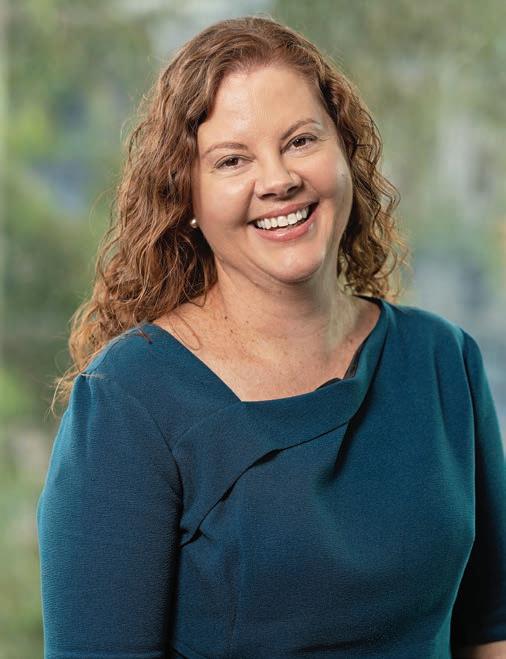
In South Australia, this challenge is being tackled headon as part of a $1.5 billion investment through the South Australian Government’s Housing Roadmap, launched in June 2024.
In what is the largest metropolitan network expansion for SA Water in decades, the signi cant investment will enable an estimated 40,000 new homes to be built across the state over four years.
“We are not just responding to growth, we are now actively enabling it,” Ms Lewry said.
is progress as of mid-October represents more than a quarter of the program’s anticipated total length of pipe to be delivered, with between 20 to 30 construction crews currently active across Adelaide’s north.
More than 100,000 hours of direct construction have been logged to achieve this, with installation spanning new water and sewer trunk mains, pump stations and other key assets.
e scale of work already completed is signi cant, with more than 13,000 metres of new trunk water mains installed to support new development areas including within Angle Vale and Riverlea.
In addition, 12,000m of sewer pipes have been installed across Munno Para and Roseworthy, along with supporting pump stations and trunk assets designed to duplicate and expand network capacity.
ese areas are among the state’s fastest growing, with large green eld developments requiring backbone infrastructure to connect new areas into existing networks.
“We are seeing growth that would usually take a decade to happen, occurring in a matter of years,” Ms Lewry said.
“To keep up, we have had to be bold and adapt our delivery models, compress timelines and move quickly from planning to implementation.”

e utility has also adopted new construction methods such as microtunnelling where possible, acutely aware of the potential for disruption to communities amid the ongoing work.
In another signi cant milestone, SA Water is entering the nal stages in the rst of a series of upgrades – totaling $121 million – at its Bolivar Wastewater Treatment Plant, with the facility’s new inlet now operational and primed to serve Adelaide’s expanding north.
Bolivar is the state’s largest wastewater treatment facility, managing wastewater for the majority of metropolitan Adelaide.
e newly installed screens and upgraded inlet structure more than doubles the plant’s daily processing capacity, rising from about 300ML to up to 630ML of raw sewage per day.
e inlet includes eight new screen trains, standing more than 6m high, which lter out items like wet wipes, paper and plastic before the ow of sewage goes further into the system.
e ten existing inlet pipes are also being replaced to support future anticipated ows as new green eld developments in Adelaide’s north connect to SA Water’s sewer network, and two new pump stations now service the screens to reduce manual cleaning and improve safety and e ciency.
Future upgrades at Bolivar will involve optimising its activated sludge reactor process and upgrading the sludge management facility, further increasing the plant’s treatment capacity and operational e ciency.
e $121 million investment comprises $64 million
from SA Water’s 2020–24 capital program and $57 million from its 2024–28 program.
ese upgrades form a central piece of SA Water’s record $3.3 billion capital program and underpin its capacity to support Adelaide’s growing population.
“Upgrading Bolivar is a key step in unlocking wider capacity for housing growth and this work ensures the plant is being prepared for new and expanding communities,” Ms Lewry said.
With early work now well progressed across key northern growth fronts, the next tranche of infrastructure delivery is already underway and is focused on unlocking more land, increasing capacity and reinforcing the backbone of the metropolitan water and wastewater network.
Among the most signi cant upcoming projects is one at Sandy Creek, where SA Water is constructing two new 10ML water storage tanks, a new control valve building and an underground trunk main connecting the tanks to the existing Barossa network.
ese projects will directly support maintaining services to our existing customers while providing the initial investments to support continued residential growth in the Concordia, Roseworthy and Gawler East areas.
At the same time, SA Water is preparing for new water infrastructure expansions west of Angle Vale, and in Adelaide’s southern suburbs at Onkaparinga Heights where new land releases are driving the need for additional network. Capacity
“ e pace we are working at today is unprecedented, and necessary,” Ms Lewry said.
“ is is our once-in-a-generation opportunity and as an industry, we are stepping up.” U


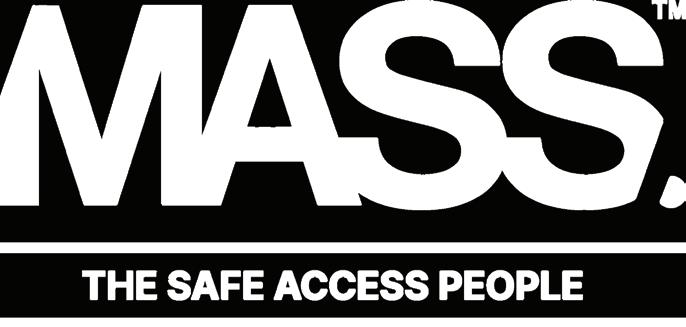

Ageing, compromised, or operationally dangerous assets?
Safe Access Audits
Safe Access Upgrades
Safe Access Design Engineering
Operator Safety Equipment
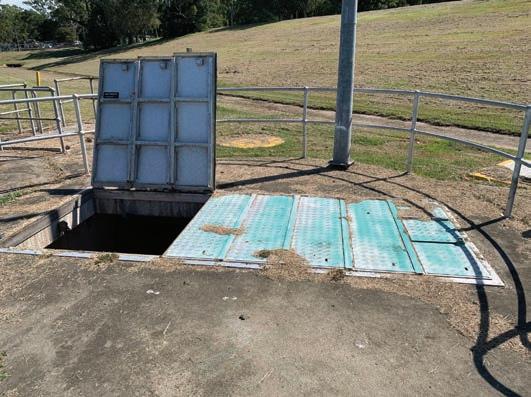

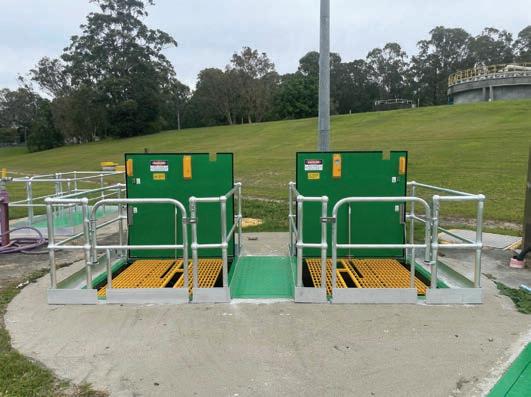

We simplify all the steps involved in accessing and maintaining assets across the network into a single streamlined process, ensuring operation is simple, safe, and efficient.
Anywhere AUS / NZ


An energy e cient pump can help lower the cost of operating a wastewater network, however, without taking the whole picture into account, these e orts to save can backfire dramatically.
Power is the biggest ongoing expense wastewater network owners face – and most of that energy is spent on your pumps and aeration blowers.
In that case, it makes perfect sense that if you choose a pump that uses less energy you should see a lower cost of ownership. If you also opt for a pump that doesn’t require a huge initial investment, then you’re saving money that can be invested elsewhere in your network to improve the quality of your service, and deliver better outcomes for customers.
It’s the perfect solution, right up until that pump blocks.
Grundfos Water Utility Sales Manager, Jackson Price, explained that an energy-e cient 2kW pump could save utilities approximately $12 per day, but every time a wastewater pump blocks, it costs up to $2000 to rectify.
“By the time you get your crew, an electrician and a truck out there, you suck the tank out, you dispose of all the waste and you x the pump and put it back in. It’s well over 100 times the daily cost of the power,” he said.
“Particularly if your pump also isn’t set up correctly according to the OEMs recommendations – that comes with massive costs.”
is doesn’t mean that you shouldn’t consider the energy e ciency of your pump at all, but Mr Price said that your power consumption is just one part of a much bigger picture.
According to Mr Price, sustained e ciency is the best way to think about balancing performance, cost and reliability. It moves beyond a single metric, such as power consumption, and instead considers how the pump is applied, operated, and maintained throughout its lifecycle.
“When we talk about sustained e ciency, we’re talking about reliability, suitability for the application, ease of maintenance, and whether the pump is installed and operated in line with what the manufacturer recommends,” he said.
“It’s about understanding where the pump sits on its curve, how the well levels are set up, and whether it’s being used the way it was designed to be used.”
A pump that appears e cient on paper can become costly if it is not suited to its environment. In wastewater applications, that means considering the type of solids the pump will handle, the velocity within the rising main, and how well levels and start-stop cycles are managed.
“Every network is di erent,” Mr Price said.
“Even within the same city, one pump station might have a very di erent in ow composition from another. You have to take a holistic approach, one that looks at the system, not just the power draw.”
While it may seem counterintuitive, a pump that uses slightly more energy could sometimes be the more e cient option overall, and Mr Price explained that energy e ciency is only a positive if it doesn’t impact performance.
“ e problem with looking at just power consumption as a key metric is you’re not looking at the cost of that asset over its entire life,” he said.
“If your pump blocks less o en, your total operating cost drops dramatically.”
Frequent blockages don’t just create maintenance headaches; they also lead to signi cant operational issues and shorten an asset’s life. An impeller replacement can cost approximately 30% of the pump’s capital cost. Repeated wear on an impeller due to incorrect selection can reduce an expected ten-year lifespan to only two to four years.
“We’ve seen cases where a pump costs around $8000 to install, but because it’s the wrong pump for the job, it ends up costing the utility more than $100,000 in maintenance over a single year,” Mr Price said.
For utilities, the best way to avoid those unnecessary costs is to involve the original equipment manufacturer (OEM) early in the process. Mr Price said site inspections, accurate data collection and adherence to OEM guidance all play a critical role in ensuring the pump performs as intended.
“ e best thing any utility can do is get the OEM out to inspect the site before selecting the pump,” he said.
“ ey know their product best and can advise on how to set it up and operate it. Measuring power consumption, tracking blockages and following scheduled maintenance all make a big di erence.”
Mr Price also encouraged utilities to pay closer attention to setup details that are o en overlooked, such as the size and velocity of the rising main, well levels and start-stop cycles.
“Well level is a massive consideration that o en never gets looked at,” he said.
“It’s how much water is in the tank and when the pump starts and stops. Getting that wrong can mean you’re running the pump under conditions it wasn’t designed for.”
According to Mr Price, a common misconception is that semi-open impellers are the universal solution for wastewater pumps. While they have advantages in certain conditions, they can create problems in smaller installations.
“In smaller pumps, semi-open impellers can be an Achilles heel,” he said.
“ ey block very regularly if they’re not set up perfectly, and they’re not as forgiving as other designs. Vortex

impellers, for instance, might be slightly less energy e cient, but they tend to block less o en, which means less downtime overall.”
Mr Price said sustained e ciency ties all these considerations together, from pump curves and impeller design to control logic and maintenance. Even start-up and shut-down sequences can in uence performance.
“How you start and stop the pump makes a di erence,” he said.
“Using variable frequency drives can help, but they need to be con gured properly. You want the pump to reach full load as quickly as practical because that increases velocity and reduces the risk of blockages.”
e aim, he said, is to nd the balance between energy e ciency and operational reliability, a balance that delivers genuine savings over time.
“You might not have the lowest power bill, but you’ll have fewer blockages, fewer callouts and a lower total cost of ownership,” Mr Price said.
“ at’s what sustained e ciency really means.” U
For more information, visit grundfos.com/au
As Kwik-ZIP marks 25 years of business, the company pauses to reflect on its many milestones, as well as the people who have helped shape its journey.

For a quarter of a century, kwik-ZIP has been at the forefront of engineering innovation, transforming the way centralisers and pipeline spacers are designed and delivered across the globe. Over the last ve years alone, more than three million Kwik-ZIP units –spanning a range of sizes – have rolled out from precision injection moulds, destined for projects on every continent.
From small-diameter centralisers used in monitor wells and foundation piling, to robust pipeline spacers capable of accommodating diameters in excess of 3.5m, kwik-ZIP’s applications re ect an impressive versatility. Each product is a testament to the company’s ongoing commitment to solving real-world challenges in civil construction, water infrastructure, and energy sectors.
Innovation runs deep at Kwik-ZIP. e relentless pursuit of smarter, more e ective solutions has resulted in an impressive intellectual property portfolio, with ten patents and two design registrations secured globally. Notably, the company’s most recent U.S. patent – granted just two months ago – speaks to Kwik-ZIP’s continual evolution and relevance in a competitive landscape.
From the outset, materials engineering has played a central role in Kwik ZIP’s success. Its products are manufactured from engineered thermoplastic blends that o er high exural strength, excellent temperature resistance, low coe cients of friction, and resistance to abrasion. Crucially, these components are non metallic,
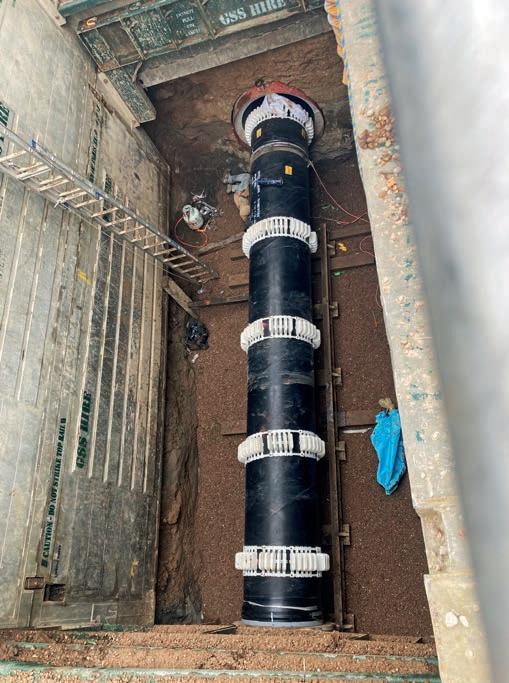
which avoids many of the problems associated with corrosion, damage to composite casing, or complications in environments with chemical exposure.
Compliance and accreditation have also marked important milestones. Kwik ZIP’s HD, HDX and HDXT Series casing spacers have been formally approved under the Water Services Association of Australia (WSAA) Product Speci cation WSA PS 324. is speci cation prescribes standards for casing spacers in terms of material, runner spacing, abrasion resistance, and more – meaning that Kwik ZIP’s products are not just well engineered but recognised by relevant regulatory bodies.
Kwik-ZIP products are also approved for use within many utilities’ infrastructure, including Melbourne Retail Water Association, South-East Queensland’s Infrastructure and Materials (IPAM) list, Sydney Water and the WA Water Corporation. All products are certi ed by the Australian Water Quality Centre (AWQC) for use in contact with drinking water.
Behind every component, patent, and certi cate is KwikZIP’s remarkable team of people who make it happen. e creativity, dedication, and resilience of the people behind the brand have propelled it from a promising idea to a trusted name in the industry.
Founder of the company, Jason Linaker, remains a guiding gure, driving technical development, leadership and the ethos of practical innovation. At every level,
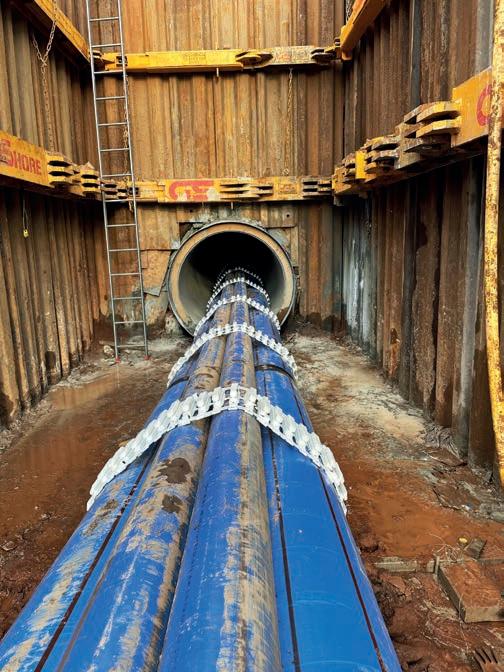
from design to production, from sales and logistics to customer service, the Kwik ZIP team has had to balance strict technical requirements with the unpredictability of eld conditions to deliver for its clients. eir unwavering commitment ensures that every centraliser or spacer produced not only meets rigorous standards but also advances the boundaries of what’s possible.
Of course, Kwik-ZIP’s story is also one of trusted partnerships. Kwik-ZIP’s loyal customers worldwide have placed their con dence in the brand’s ideas, supporting its growth and challenging the team to keep raising the bar. Suppliers, too, have contributed through their reliability, exibility, and spirit of collaboration, helping Kwik-ZIP deliver on its promises, time and again.
ese combined e orts have resulted in tangible achievements. Kwik ZIP products help contractors comply with wastewater, sewerage and water well construction codes; they protect carrier pipes in slip lining applications; they reduce risk to composite casing materials where conventional steel centralisers could cause damage. In many large infrastructure projects, including pipelines and large diameter casing installations, Kwik ZIP’s spacer and centraliser systems have been selected for their reliability, cost e ciency, ease of assembly, and technically validated performance.
As Kwik-ZIP marks its 25th anniversary, the occasion is one for celebration and re ection. It’s a moment to honour the journey so far, appreciate the present achievements, and look ahead with excitement to the innovations yet to come. e legacy of Kwik-ZIP is not just found in the millions of units shipped or the patents granted, but in the spirit of innovation and partnerships that have de ned every step of the way.
Looking ahead, the challenges are many: evolving environmental regulations, increasing demands on sustainability, ever more ambitious pipeline projects, and


much more. Yet, these are exactly the kind of challenges that are well suited to Kwik ZIP’s culture. If there is one thing the company’s history shows, it’s that Kwik ZIP does not rest when there is still room to improve.
Kwik-ZIP Managing Director, Jason Linaker, said, as the company looks to the future, it does so with gratitude for the past and an undiminished passion for what’s still to come.
“ ank you for being part of the kwik-ZIP story.” U
For more information, visit www.kwikzip.com
The 117km Fitzroy to Gladstone Pipeline is nearing completion, and the Gladstone Area Water Board’s CEO says it’s delivering a lot more than water for the region.

By Darren Barlow
In Central Queensland, water security is more than an infrastructure challenge – it’s the foundation for jobs, industry, and the future prosperity of our communities.
For decades, Gladstone has relied on one source of water – Awoonga Dam, and a er multiple failed wet seasons the dam is (as of October 2025) at 43 per cent capacity.
Gladstone Area Water Board (GAWB) has an allocation of 78GL per annum from Awoonga Dam, and every precious drop has been allocated to customers in our region.
In 2023, the Queensland Government announced a partial solution to our water supply risk – the Fitzroy to Gladstone Pipeline (FGP), a $983 million raw water

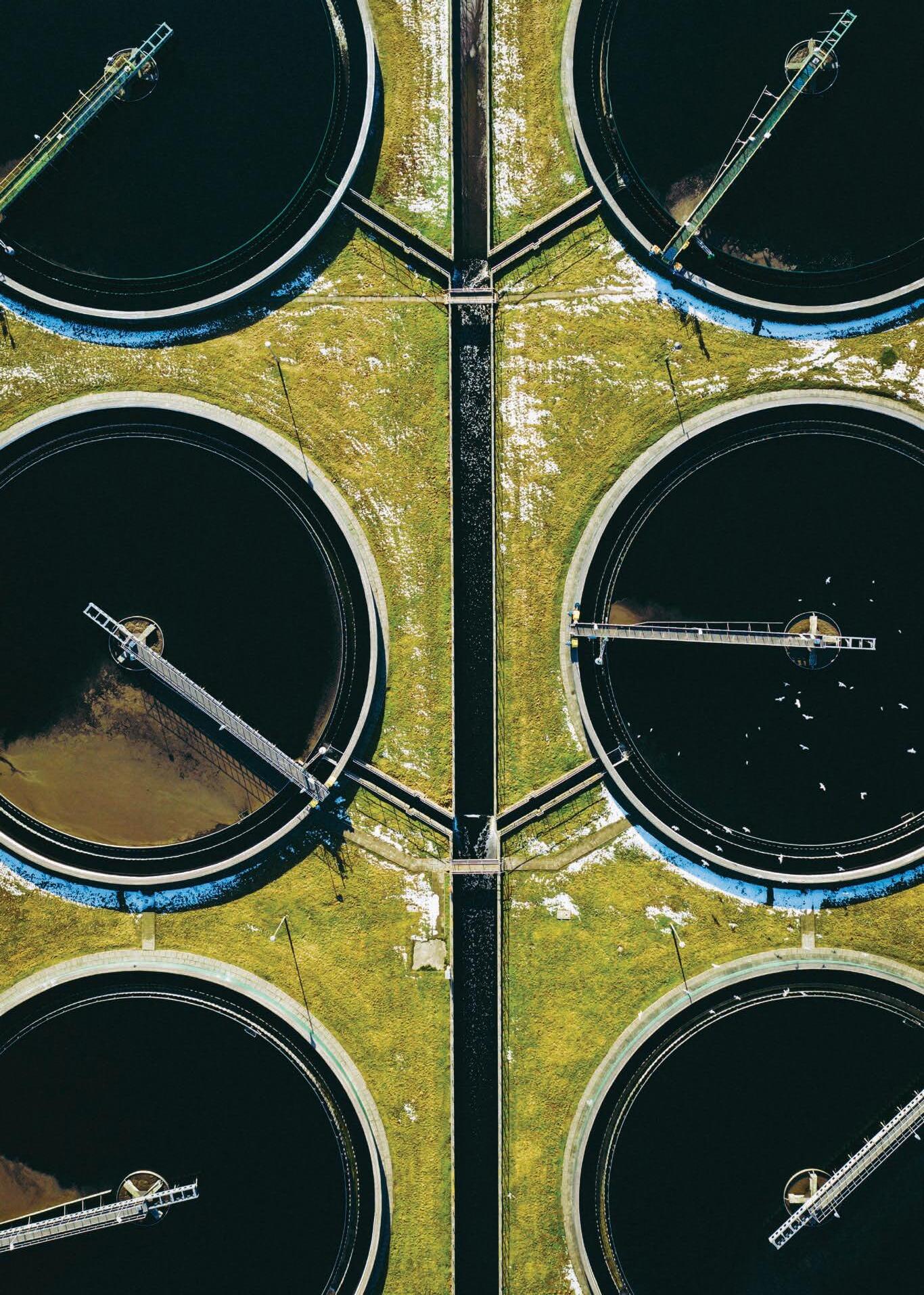

Find


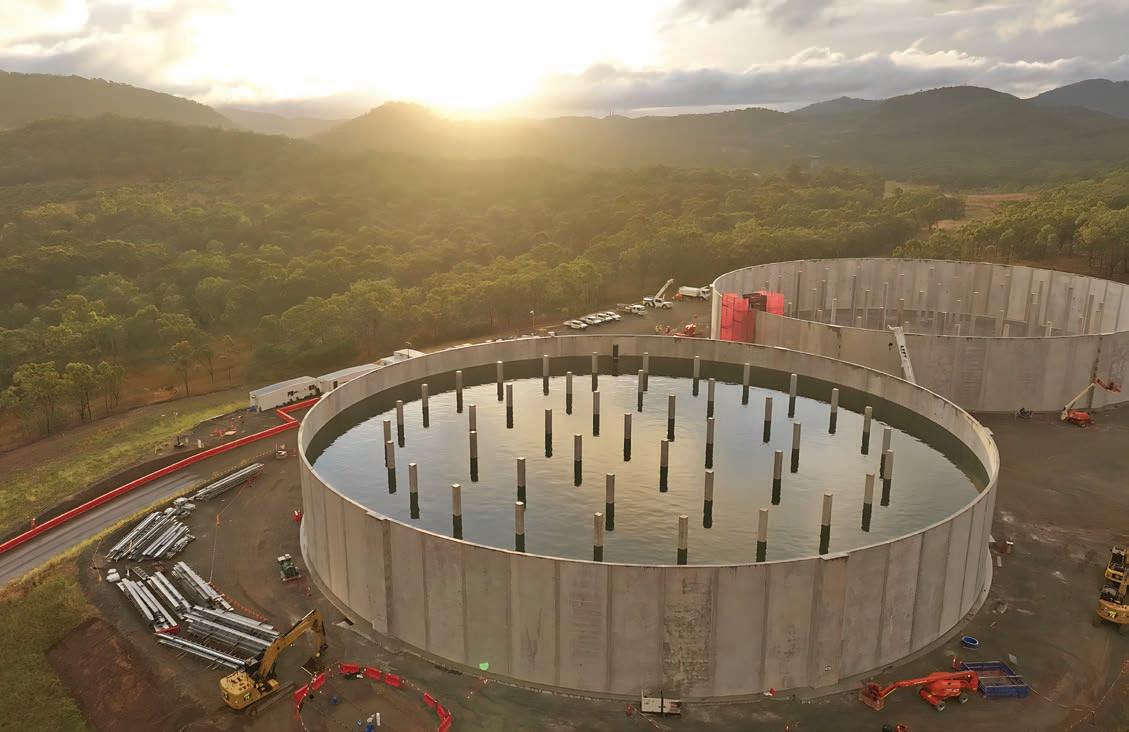
pipeline connecting water from the Lower Fitzroy River in Rockhampton, to GAWB’s existing network in Gladstone.
At 117km long, the FGP will include an intake at Laurel Bank, a facility at Alton Downs to remove sediment and generate good quality raw water, and reservoirs at Aldoga.
When complete, the pipeline will transport 30GL of raw water each year from the Fitzroy River to Gladstone, delivering signi cantly improved and much-needed water security to our region and our customers.
Our role at GAWB is to deliver safe and reliable bulk water services for our customers, which include major industries and Gladstone Regional Council. Our customers are the engine room of Queensland and quite simply, they need water to operate.
ere’s been a drive for new customers and increased demand from existing customers for water. e FGP won’t deliver more water for demand – it’s for water security. Yet we have a queue of potential and existing customers wanting more water, which is why we have published Queueing Guidelines. ese guidelines set out a transparent process for managing customer requests.
A large portion of the water we supply goes to energy production, largely in the form of coal and LNG. Collectively, Gladstone’s industries contribute around $6 billion to the Queensland economy and support about 13,000 direct and indirect jobs in our region. Commentary about the FGP being for hydrogen, renewable energy supply, or no longer required is simply incorrect. We need more water in Central Queensland, and the FGP is part of the water security solution.
Construction of the pipeline is almost complete – more than 400 jobs have been created during construction, with opportunities for trainees, and skilled workers across a range of trades and professions.
We’re proud to have supported 21 trainees, as part of a focus on building local skills for the future.
Importantly, our commitment to investing in the region is not just words – it’s backed by action. So far, through the FGP construction, we have spent more than $150 million with businesses in Rockhampton and Gladstone. at’s money owing directly into local suppliers, sub-contractors, and service providers, strengthening the economic fabric of our communities. Furthermore, we have spent $234 million with businesses in Queensland, and another $206 million with Australian businesses located inter-state.
In total that’s more than $590 million spent to date with Australian businesses.
We could have used overseas suppliers, but we didn’t. It was important to contribute to economic growth by supporting local businesses.
e Fitzroy to Gladstone Pipeline is more than steel and concrete – it’s a vital connection for jobs, skills and water security. It’s an investment in the resilience of our region and a project we can all be proud of.
Gladstone Area Water Board (GAWB), as a Queensland Government Bulk Water Supply Authority, delivers safe and reliable water services which promote economic development and enhance the lifestyle of regional Queensland. GAWB owns and operates Awoonga Dam, along with a network of pipelines, water treatment plants and other distribution infrastructure. GAWB also owns and operates Aquaculture Gladstone, a sh hatchery and interpretive display at Lookout One at Lake Awoonga.
To ensure long-term water security for customers, the 117km Fitzroy to Gladstone Pipeline (FGP) is under development. When delivered, the FGP will become part of the GAWB network and provide enhanced water security and reliability for the region. U
For more information, visit www.gawb.qld.gov.au


You’re under pressure to deliver complex projects faster, safer, and under tighter margins. At Genus, we make that possible.
While others are weighed down by bureaucracy, Genus is a modern Tier 1 contractor: proactive, agile, and collaborative.
We’re big enough to handle nation-shaping infrastructure programs, nimble enough to move fast and care about every detail.
Backed by a strong balance sheet, 1600+ direct employees, and a proven track record working with the likes of Western Power, Ausgrid, Transgrid, and TasNetworks, we’re keeping Australia powered and connected today, while paving the way for what’s next.
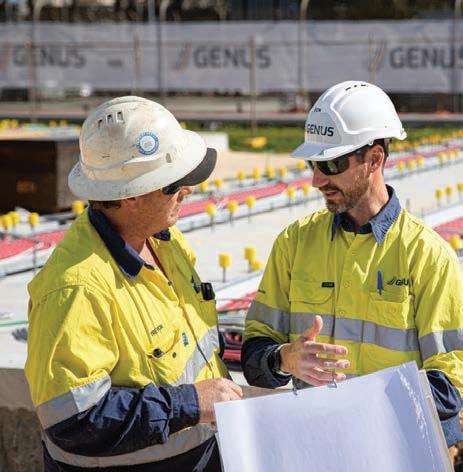

Over the next decade, demand for water is going up and rainfall is going down. We can’t a ord to waste a single drop of the precious resource so our critical infrastructure needs to meet the task.
The reality of climate change means longer droughts, more o en. And as Australia’s population booms, the enormous responsibility of ensuring that there’s enough water to go around falls to the utility sector.
In the dynamic landscape of water and wastewater management, the drive toward e ciency, sustainability, and reliability has never been stronger. Every drop counts – and so does every seal, gasket, and rotating component that keeps critical assets performing optimally.
For decades, A.W. Chesterton has been at the forefront of developing high-performance sealing solutions that help utilities and treatment facilities reduce water consumption, energy use and maintenance downtime. But as the industry embraces smarter infrastructure and data-driven maintenance strategies, traditional sealing approaches are being rede ned by advanced sealing technologies and condition monitoring innovations.
While conventional mechanical seals and packing systems remain the backbone of pump and mixer maintenance, they come with inherent trade-o s – from frequent maintenance intervals to ush water dependency and leakage risks.
With water scarcity becoming a very real threat, the cost of unplanned downtime and water lost through leaks is just too high.
e engineering experts at Chesterton saw that solving these challenges wasn’t just a-nice-to-have, it was vital, so they put their expertise together to develop the next generation of sealing systems.
Chesterton’s split seal designs not only simplify installation but also dramatically cut equipment downtime and associated costs. In water and wastewater applications, where pumps operate continuously under challenging conditions, this can translate to thousands of dollars saved annually and signi cant reductions in resource consumption.
However, choosing the right seal is only one part of a much bigger picture.
Reliability doesn’t happen by chance; it’s engineered. By integrating real-time equipment monitoring of parameters such as temperature, vibration, and seal chamber pressure, operators can detect early warning signs of failure and take corrective actions before costly breakdowns occur. is proactive approach to maintenance aligns perfectly with the industry’s growing focus on predictive asset management and sustainable operations. In Chesterton’s latest advancements, technologies like active throat bushings provide precise control of the seal environment, enabling operation with minimal or even zero ush water

– a critical advantage in regions facing tightening water restrictions.
Across treatment facilities worldwide, Chesterton’s advanced sealing and monitoring solutions are helping engineers achieve measurable performance improvements. From extending pump life cycles to reducing maintenance interventions, these case studies highlight how these technologies empower utilities to do more with less – and Chesterton leverages the lessons learned from these projects to continuously improve its solutions and keep up with evolving industry challenges.
To help utilities and asset owners make an informed decision about the right solution for their facilities, Chesterton has developed a comprehensive guide on how to modernise sealing practices for today’s operational and environmental challenges.
Inside the Advanced Sealing and Condition Monitoring Strategies in Water and Wastewater Plants, eBook, you’ll nd:
• A technical comparison of traditional vs. advanced sealing methods
• Insights into split seal and active throat bushing technologies
• Guidance on equipment monitoring and its impact on seal reliability
• Real-world success stories from the water and wastewater sector
• Application-speci c recommendations to help you make the right sealing choice
Chesterton’s goal is to help utilities discover how the latest innovations in sealing and monitoring can transform their plant’s reliability, sustainability, and cost e ciency. Learn from global examples. Apply proven engineering insights. And start building a water management strategy that’s as resilient as it is sustainable. U
To download the full eBook, scan the QR Code or visit chesterton.com or chestertoncustomseal.com.au

The Chesterton 1510 represents over 40 years of engineering excellence in our most streamlined mechanical seal yet.
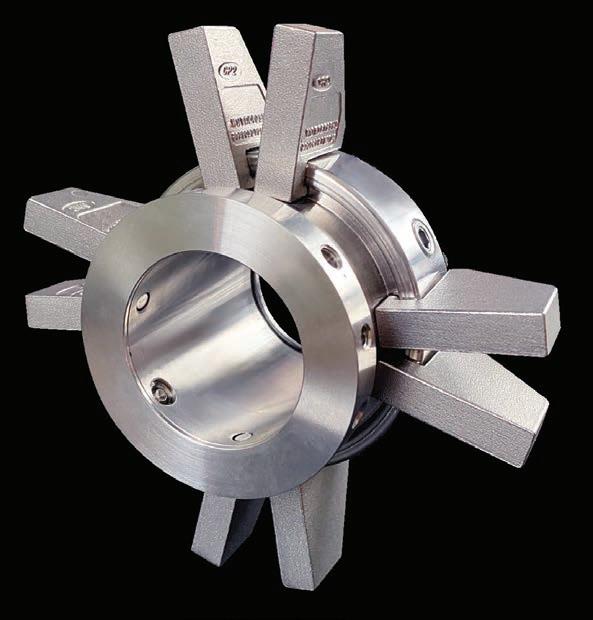
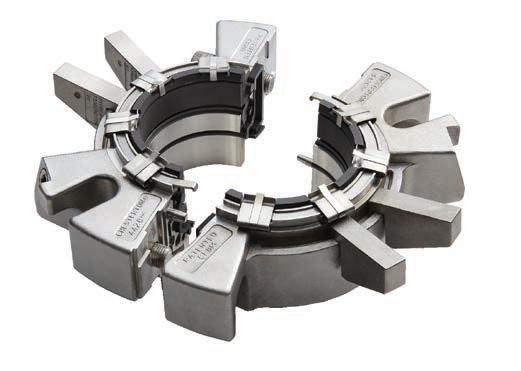






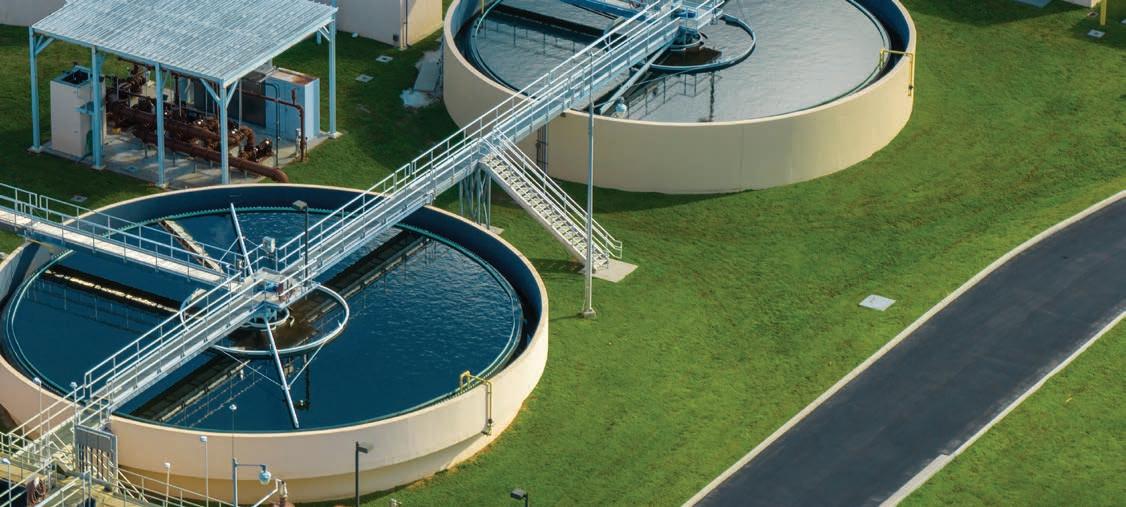
A brighter future isn’t going to happen in isolation, and if the water sector is going to deliver one of its largest infrastructure booms in history, it needs collaboration, shared knowledge and accurate data.
The heat of climate change is being felt all over the world, but in Australia’s already drought-prone landscape, water scarcity is a real and urgent risk that’s only going to be exacerbated as temperatures rise.
Population growth and rapid urbanisation threatens to increase demand for this precious resource faster that we can boost supply and these challenges are only intensi ed by ageing infrastructure and a signi cant workforce shortage.
e need to secure our water supply has sparked one of the largest water infrastructure booms in history at a time when the sector is under immense strain, where fragmented technologies, inconsistent data and disconnected systems hinder progress toward smarter, more resilient water management.
Autodesk helps local utilities navigate this complexity through a connected data strategy designed to help them plan, design, manage and optimise their assets more e ectively. By connecting teams and work ows in a uni ed digital environment, Autodesk powers organisations to make faster, more informed decisions – improving e ciencies and sustainability for their communities.
Data is one of the most valuable assets an organisation owns, yet much of it remains untapped and contained in silos. In fact, a research from FMI Big Data report found that 95 per cent of engineering and construction data goes unused, while poor data quality costed the global construction industry an estimated $88B in rework in 2020.
Digital transformation is no longer a nice-to-have, it is essential. And it is not just about adopting new toolsets, but rather the deliberate establishment of connected
systems that turn discrete data into operational insights. Autodesk’s 2025 State of Design & Make Report revealed that customers who embraced this change saw measurable improvements in productivity, pro tability, and customer satisfaction.
e industry has already witnessed several waves of innovation, from drawing boards to CAD, to BIM and Connected BIM. e next leap forward is OutcomeBased BIM, where success is measured by the outcomes it enables.
Autodesk is leading utilities to this transformation, providing tools and intelligence to use structured data and AI to focus on what really matters – the performance and resilience of wet-infrastructure assets. e question now becomes: “What information do I need about my assets to achieve my outcomes?”
By shi ing to this outcome-driven approach, utilities can move beyond reactive to proactive strategies. is allows them to identify risks early and deliver better value to customers.
With platforms such as Info360, Autodesk Tandem, and Autodesk Construction Cloud (ACC), utilities can connect design, analysis and operations in one seamless digital ecosystem.

Together, these technologies enable a shi from reactive asset management to predictive, performancebased approaches. ey help organisations better understand the condition of their networks, forecast potential failures, and plan maintenance activities that target assets that need them most. e result is improved resilience, reduced operational risk, and more sustainable long-term asset management. U
With Vocus Satellite – Starlink, private networks for critical infrastructure can now be extended via Starlink without travelling over the internet.
Remote utility sites can become part of a network with identical security protection as metro areas to support automation and advanced monitoring technologies.




The pressure beneath the surface Australia is the driest inhabited continent, and its water systems are feeling the strain. Climate change is reshaping rainfall patterns, driving longer droughts punctuated by intense oods. e Bureau of Meteorology and WSAA warn that variability is increasing, making traditional planning assumptions unreliable. At the same time, population growth is accelerating demand. e Australian Bureau of Statistics projects more than 30 million people by 2030, with most growth concentrated in cities. WSAA’s future water security analysis shows urban water consumption could rise by 73 per cent within three decades—an increase of more than 2,650 gigalitres annually.
is dual pressure—climate volatility and demographic expansion—means utilities cannot rely on legacy networks alone. Many assets were built decades ago for smaller populations and milder extremes. Infrastructure Australia’s audit notes that pipes, reservoirs and treatment plants are among the country’s most ageing public assets, with some networks still dependent on asbestos cement and cast iron mains installed in the mid-20th century. Break rates are climbing, and deferred renewals compound the risk.
e message is clear: Australia needs new water infrastructure and strategic upgrades to existing systems. Without them, service reliability will falter, costs will
rise, and communities will face unacceptable risks during droughts and oods.
Why building new networks is complex
Delivering this infrastructure is not as simple as laying pipe. Engineering challenges multiply when projects intersect with dense urban environments, constrained corridors and ageing assets. Utilities must navigate geotechnical variability, tra c management, and environmental compliance—all while keeping water owing to customers.
Consider the reality of metropolitan upgrades. A new trunk main may need to cross under rail lines, weave through congested streets, and integrate with live networks without triggering outages. In regional areas, the challenge shi s to scale and remoteness: long pipeline alignments across oodplains, pump stations designed for variable ows, and treatment plants resilient to power uctuations. Add to this the complexity of modern standards—pressure management, digital monitoring, and sustainability targets—and the engineering equation becomes formidable. en there is the delivery risk. Research into Australian infrastructure projects shows persistent cost overruns and schedule delays, o en linked to poor scoping and fragmented governance. For water utilities, these risks translate into budget strain and reputational


exposure. e sector needs partners who can anticipate these pitfalls and design solutions that work rst time.
expertise, not stating it
is is where Lanco Group steps in—not as a contractor chasing milestones, but as an engineering partner embedded in the utility sector’s reality. eir portfolio tells the story. From slip-lining a 450mm distribution main along Ballarat Road to managing complex relocations for rail grade separations, Lanco’s work demonstrates uency in both design and delivery. Projects like the Broadmeadows Reservoir water main replacement required coordination across authorities, tra c interfaces and live network tie-ins—tasks that demand more than technical drawings; they require foresight and negotiation
On the ground, that expertise translates into practical risk management. When a sewer relocation intersects with high-density developments, Lanco’s engineers model hydraulic impacts, stage works to maintain service, and integrate civil, electrical and telecommunication requirements. In subdivisions, they design reticulation systems that future-proof capacity while optimising cost for developers and utilities alike. ese are not abstract capabilities—they are lived practices that reduce surprises and keep projects on track.
Modern water infrastructure must do more than convey ow. It must withstand climate extremes, minimise energy use, and align with sustainability frameworks. Lanco’s approach re ects this shi . eir designs incorporate pressure management to reduce leakage, material selection for durability under variable soils, and layouts that accommodate future digital monitoring. In pump station projects, energy e ciency is not an a erthought; it is embedded through hydraulic optimisation and provision for renewable integration. is matters because utilities face rising expectations—from regulators enforcing tighter standards to communities demanding transparency and environmental stewardship. Projects delivered today will operate for decades; resilience cannot be retro tted later. By integrating sustainability into design and construction, Lanco helps utilities meet these expectations without in ating lifecycle costs.
Infrastructure delivery is as much about people as pipes. Skilled labour shortages, supply chain volatility and stakeholder complexity can derail timelines. Lanco’s longevity in the sector—more than 25 years—has built relationships that smooth these edges. eir accreditation with Melbourne Water and regional authorities signals trust earned through consistent performance. Behind that trust is a team culture focused on collaboration: civil engineers, hydraulic specialists and project managers working as one unit to anticipate issues before they escalate. is collaborative posture extends to utilities. Rather than imposing solutions, Lanco engages early, aligning designs with operational realities and budget constraints. at alignment reduces rework and accelerates approvals—a quiet but powerful lever for on-time delivery.
WSAA’s Strategy 2030 frames the sector’s challenge as enabling thriving communities under climate and growth pressures. Meeting that challenge will require billions in capital works, smarter planning and partners who bring both technical depth and adaptive thinking. Lanco Group exempli es that blend. eir track record across complex urban upgrades and regional schemes shows a capacity to navigate engineering, regulatory and stakeholder dimensions without losing sight of cost and constructability.
As Australia builds the networks that will secure water for the next generation, success will hinge on partnerships grounded in trust and technical excellence. e pipes may run underground, but the expertise that delivers them must be visible—and accountable—above ground. In that space, Lanco Group has already laid strong foundations. U
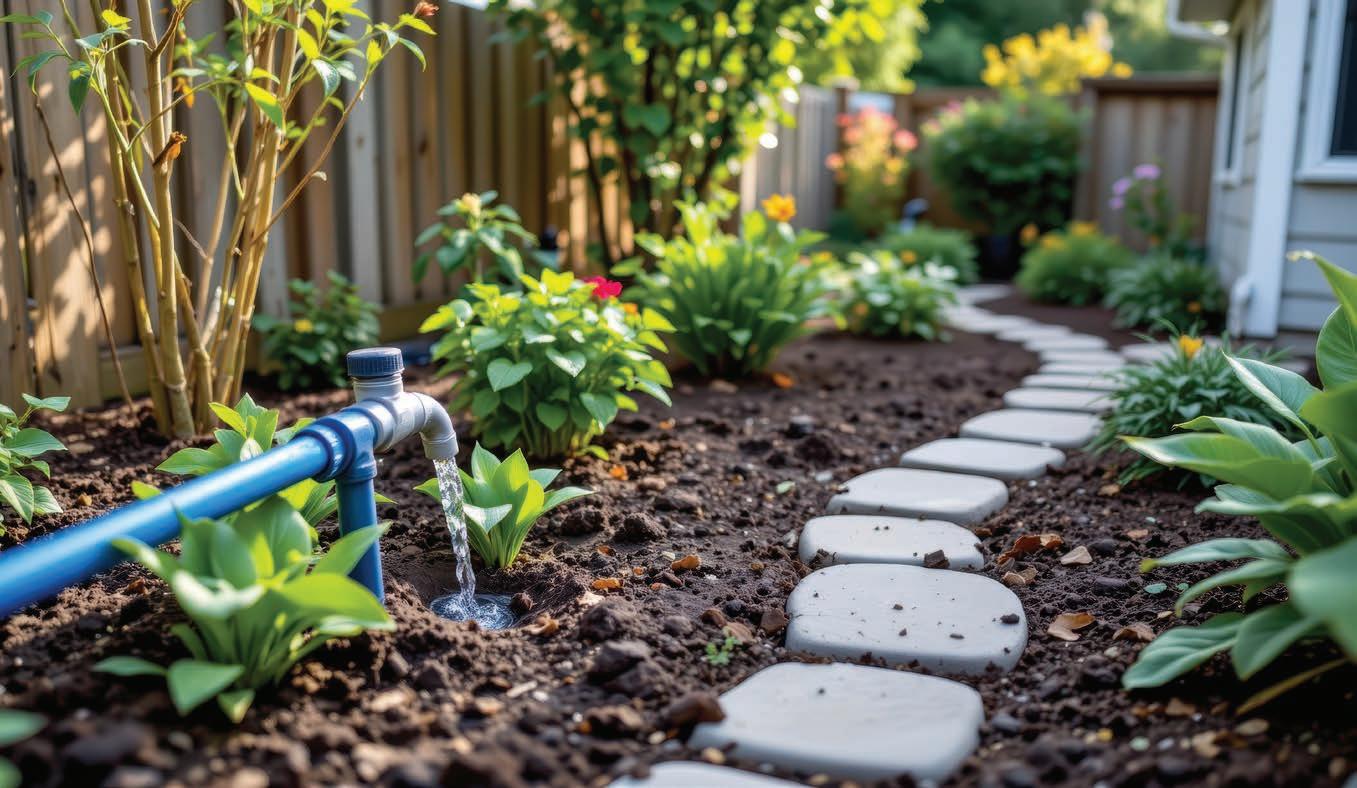

As Australia warms, recycled water is rising. GAC helps make it trusted.
Australia is warming and rainfall is becoming more variable; utilities now need supply options that are resilient, a ordable and socially acceptable.
at is the logic behind recycled water— t-for-purpose water produced from treated wastewater, stormwater or greywater and used across industry, irrigation, households, and—when advanced treatment is added—drinking water augmentation. e Australian Guidelines for Water Recycling (AGWR) set out a risk-based framework for managing health and environmental risks and, in Phase 2, provide speci c guidance for augmenting drinking water with puri ed recycled water using multiple barriers and performance targets.
Water sector bodies have leaned in. e Water Services Association of Australia (WSAA) has developed toolkits and maps that show puri ed recycled water is neither novel nor niche; more than 35 cities already use it and that number is expected to double by 2050. “Even though the technology has been proven for decades, puri ed recycled water schemes are only now starting to be rolled out at scale,” WSAA’s Danielle Francis said, noting the global trajectory and Australia’s drought resilience planning.
e bene ts are recycled water reduces demand on dams and rivers, provides a rainfall-independent source, and supports liveability through irrigation and industry. Limitations are equally clear: end uses must be matched to appropriate treatment, schemes require rigorous risk management, and community engagement matters.
role for granular activated carbon GAC is porous carbon engineered to adsorb dissolved organics and some micropollutants. In recycled water treatment trains it typically appears in two places. First, in advanced wastewater treatment before the PRW step, to reduce taste-and-odour compounds (such as geosmin and 2-MIB), algal toxins (e.g. microcystin), and a wide
spectrum of synthetic organics. Second, adjacent to membrane and advanced oxidation processes in PRW, as a polishing or bu er barrier to smooth raw water variability and help control disinfection by-products, trace organics and odour precursors. It is a workhorse—quiet, consistent, forgiving of seasonal change—and a critical part of keeping “unknown unknowns” small.
Best practice is not generic media thrown into a vessel and hoped for the best. Pore structure must match the contaminant pro le and hydraulic regime. Coal-based GAC o en provides a balanced mix of micro- and mesopores, capturing larger organic molecules and taste-and-odour compounds at practical empty bed contact times—useful in municipal PRW bu ers and dual-media lters. Coconut shell GAC biases towards microporosity for smaller molecules and is prized for hardness; it is common in point-of-use and some pressure lters. Wood-based carbons tend to o er macroporosity and can shine where colour removal and very large organics dominate. Selecting “the right carbon” means matching pore distribution, hardness, attrition resistance, size grading, and pre-washing to the water’s chemistry and the plant’s hydraulics.
Operators also weigh powdered activated carbon (PAC) for episodic events. PAC dosing ahead of clari cation or ltration can blunt algal blooms quickly, then be removed with sludge—an agile tool during taste-and-odour spikes or toxin alerts—while xed GAC beds provide the steady state backbone.
Myth-busting the “yuck factor”
e most persistent myth about recycled water is simple: that it is “wastewater with a new label.” It is not. Planned potable reuse follows the AGWR: source control, advanced treatment (o en ultra ltration, reverse osmosis, UV-AOP), barrier redundancy, continuous monitoring, and blending


with further ltration and disinfection before distribution.
Sydney Water’s public materials show that PRW is triple-treated before re-entry to raw water storages, then treated again at conventional plants, meeting the Australian Drinking Water Guidelines throughout. at process is audited and regulated.
A second myth suggests recycled water is unproven. WSAA’s mapping and sector research demonstrate otherwise—decades of safe operation internationally and within Australia (e.g., Perth’s groundwater replenishment scheme; South East Queensland’s Western Corridor facilities under drought readiness). As Francis notes, adoption is accelerating as climate variability tightens. e sector does need to talk plainly about risk management, but the evidence base is not thin.
Watch a modern plant during a summer bloom. Operators increase PAC dosing to dampen geosmin and 2-MIB while protecting downstream membranes. In parallel, GAC contactors—selected for hardness to reduce media loss and sized to keep headloss stable—continue polishing dissolved organics so advanced oxidation focuses on what truly needs destroying, not on background load. When the bloom recedes, PAC dosing stops, GAC carries the steady-state load, and the plant avoids customer taste complaints. at is GAC doing quiet work in a sophisticated train.
Sampling regimes matter. Utilities following risk-based management plans validate GAC performance with surrogate parameters (e.g., UV254, THM formation potential) and targeted analytes (e.g., microcystin, pesticides, PFAS where relevant) while tracking empty bed contact time and breakthrough curves to schedule change-outs e ciently. is is how Australian operators keep recycled water within spec across seasons and events, aligned to AGWR risk targets and local regulatory instruments.
James Cumming’s team has built its reputation by collaborating with Australian process engineers on the details that decide whether GAC helps or hinders a scheme: pore structure, grading, pre-washing, hardness, and supply certainty. eir Purazorb™ range is Australian coal-based, NSF-61 certi ed, produced through high-temperature steam activation, and speci ed for municipal taste-and-odour, toxins, and trace organics removal—attributes that sit well beside membranes and AOP in PRW trains. Field examples in Australian plants emphasise the practical side of their approach, including made-to-order sizing and responsive manufacturing for commissioning windows.
A notable pattern in their work is matching media to water chemistry rather than pushing a single “super
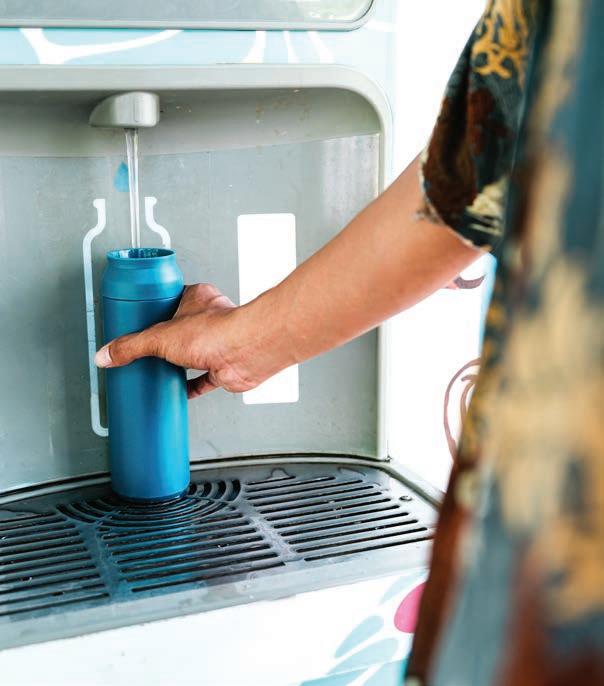
carbon.” Where smaller organics dominate, the company can supply coconut-shell grades; where colour and very large molecules drive risk, wood-based carbons can be speci ed; and for Australian PRW with mixed dissolved organics and taste-and-odour loads, coal-based GAC with balanced pore distributions o en wins out. at breadth helps utilities adapt without reinventing plants—GAC beds and dual-media lters become con gurable tools aligned to AGWR risk targets and site hydraulics.
James Cumming’s technical pages also remind engineers that PAC remains valuable in episodic events; their guidance re ects routine practice in Australian WTPs where PAC addresses short-term blooms ahead of clari cation or ltration, while GAC steadies the base load. It is advice o ered from lived operational experience rather than catalogue theory.
e team at James Cumming’s also specialises in the reactivation and regeneration of exhausted granular activated carbon. ey have extensive experience in working with utilities and want to further engage them about the sustainability of their practices, particularly a er the lter media has seen breakthrough of organics and contaminants of concern.
e focus here is on re-activating spent carbon and then using it again, reducing waste and land ll components of running their treatment plants, delivering better outcomes for the utilities and the environment.
WSAA’s broader message is communities need clear, evidence-based water choices they can trust. Puri ed recycled water schemes provide clean and safe water to more than 30 million people and that is set to grow. e technical cra behind that trust—getting the media choice and application right—sits squarely in the domain where teams like James Cumming’s work alongside utilities. U
For more information, visit jamescumming.com.au
Interflow and South East Water renewed critical water mains on both sides of Chapel Street in South Yarra for South East Water. Its success demonstrates that thinking outside the box can result in exceptional project outcomes and reduce the overall impact on the community.
South East Water sought to renew the two water mains on Chapel Street, between Toorak Road and Alexandra Avenue, South Yarra.
e area had experienced signi cant growth and is home to many residents and businesses. Collectively, the two mains serve a customer base of around 12,000 people.
e east-side water main had previously experienced a burst, causing considerable disruption to the public, community, and businesses. South East Water made the decision to extend the scope to include the mains on both sides of the road to ensure certainty of supply for its customers for generations to come.
Inter ow and South East Water collaborated closely during the project to ensure the solutions balanced community and network needs.
On the west side, 560m of DN100 cast-iron cement lined pipe (CICL) was renewed with a new DN225 PVC pipe by open trench li and relay. On the east side, 485m of DN300 CICL pipe was renewed with a 280mm outer diameter HDPE pipe by slip lining, facilitated by a custom process to remove an in-situ cement liner.
e Chapel Street renewal project has mitigated the risk presented by a distressed asset and provided future generations with reliable, high-quality water infrastructure.
e key challenge on this project was reducing the impact of works, particularly noise, in one of Melbourne’s most populated areas.
Works like this on busy roadways are usually contained to nightworks to reduce the impact on tra c. In this case, the impact of noise on residents and business owners was a greater concern. As well as disrupting people during sleeping hours, nightworks would have le a very short working window and prolonged the duration of works.
In addition, ground conditions were extremely rocky, meaning excavation was a di cult and noisy activity.
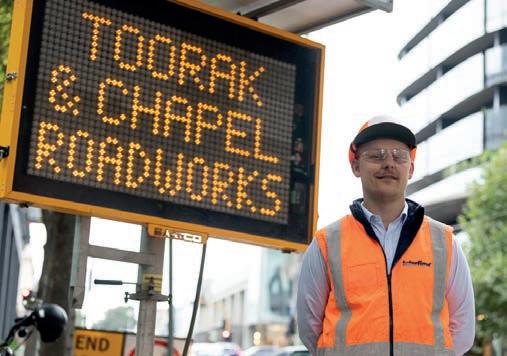
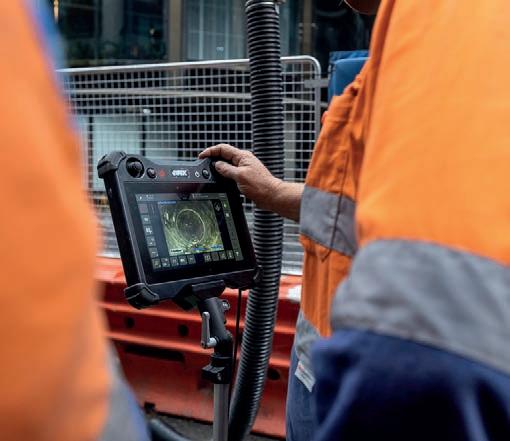
Finding a trenchless alternative to digging and relaying the mains was crucial to minimising the impact on the area’s 12,000 customers. e DN300 eastern main appeared a good candidate for slip lining – the catch: the pipe had been lined in cement leaving a smaller than expected internal diameter.
Working with the Department of Transport and Planning, the team was able to secure a 7am to 10pm working window, with permission to permanently occupy the clearway with a site compound outside these times. is eliminated almost all nightworks which was hugely bene cial to the community.
e permit process took almost 6 months and included the creation of Tra c Guidance Schemes and Tra c Management Plans.
Inspired by their sewer pipe cleaning process, Inter ow created a bespoke system that could break down the cement liner and allow it to be ushed out. e innovative removal of the cement liner in the eastern main facilitated the slip lining approach, and in turn, reduced the potential for undesired impact on the community.
Seeking to restore two pipelines in Melbourne’s highly populated Chapel Street, Inter ow and South East Water worked together to upgrade both mains while reducing the impact on the community and stakeholders. rough implementing trenchless methodologies and obtaining a large day time working window, both the eastern and western sides of Chapel Street were upgraded, providing the community with a reliable water asset for generations to come. U
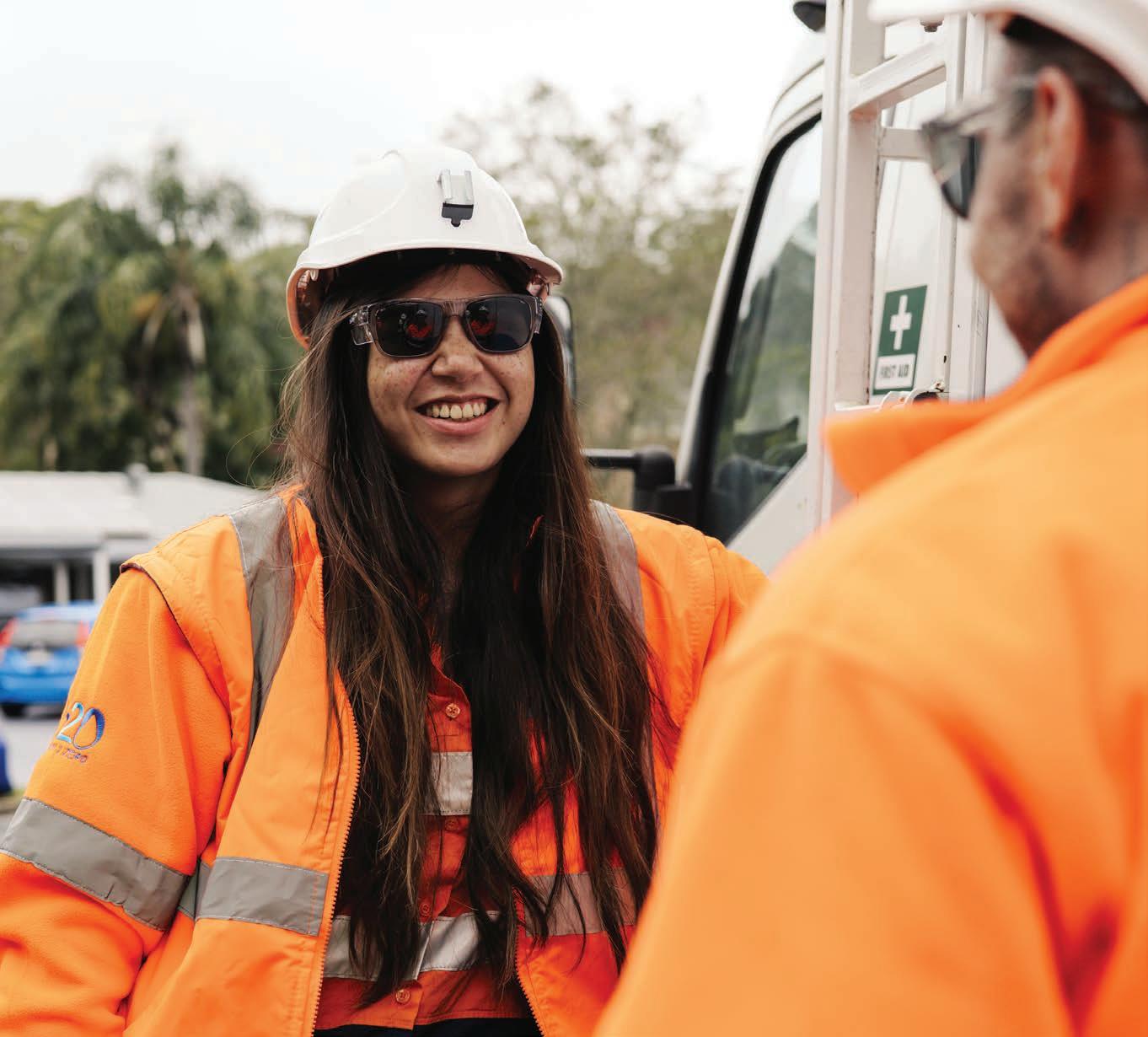








We’re Creating


the Future of Water for people, communities and the environment


Construction of new energy sources across Australia, regardless of type, will need to happen as ageing coal fi re power stations reach the end of their life.
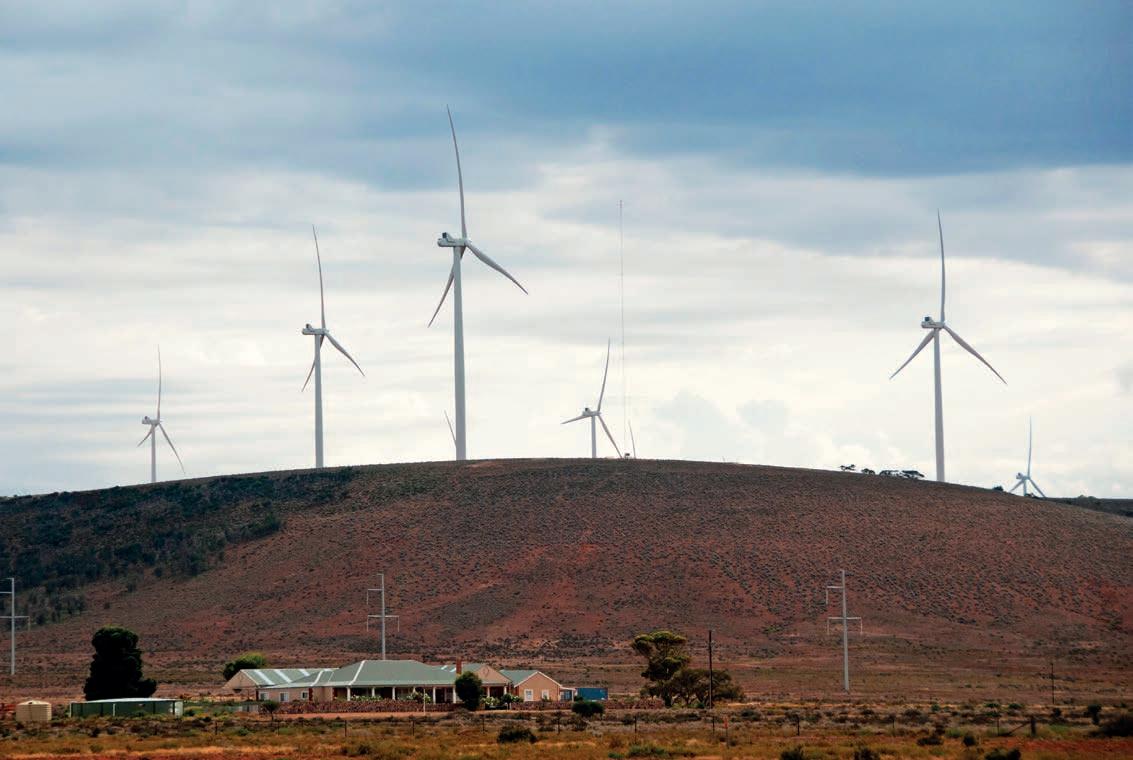
The energy transition depends on sector-wide collaboration, and Genus’s new COO, David Fyfe, says that harnessing everyone’s unique strengths and di erent points of view is what will see Australia through the next 50 years.
If the name ‘David Fyfe’ rings any bells, you’re probably thinking of the former Synergy CEO, who led the utility from 2022–25 as it embarked on its journey to renewables and delivered Western Australia’s rst-ever large-scale battery energy storage system (BESS) in Kwinana.
You may even know him from his role before that as the COO of Western Power – or maybe you’re thinking of the Bali Bombing survivor and motivational speaker, or the Chair of the Fiona Wood Foundation.
You might have even run into him during the 12 years he spent at Telstra.
But, most recently, you’ve probably been introduced to him as the new COO at Genus – a family-founded Aussie business that has grown large enough in a single generation to compete with multi-national Tier 1 contractors.
While change is a constant in Mr Fyfe’s career, he’s anything but capricious.
“I was in the Bali Bombings in 2002, and I ended up in hospital for more than two months with over 60 per cent burns,” he said.
“I had my right leg amputated below the knee and had to learn to walk again. So, for me, life’s really about living –it’s about challenging yourself, growing and experiencing new things.
“ e other thing I really took out of that was the power of people. And how important relationships are as you go through life changing events.”
Take the risk
e second constant in Mr Fyfe’s career has been utilities. “I started o working for British Nuclear Fuels at
Chapelcross Nuclear Power Station. I was a graduate electrical engineer and that was my rst job.”
“I think, when you get your rst job, your goal is just to really learn what working is all about. e nuclear power industry was an integral part of the energy landscape in the UK, and as a young engineer, you’re conscious of it, but it’s not hitting you in the face in the early days, it’s just really about learning and growing as a person.”
“Now I’m 56 and even at this point in time I still want to be continually challenged and continue to learn and grow.”
Mr Fyfe came to Australia in the 1990s and took up an engineering role at Telstra before moving into the sales side of the business where he led a large contract negotiations team in Western Australia.
“I think engineers don’t realise that they’re in sales as well – if you put forward a business case, you’re actually selling something. For me, sales was a great grounding on how to pitch something, how to tell a succinct story and the importance of relationships,” he said.
A er Telstra, Mr Fyfe returned to the electricity sector, where he spent a decade at Western Power, with seven of those years as its COO.
Mr Fyfe oversaw the utility’s work program, including major projects, the network control centre and all the utility’s contractors. is is where he rst met Genus Managing Director and founder, David Riches.
“In the early days, David used to do work on the Western Power network when I was the COO there, and I’ve always had a lot of respect for Genus’ values as a family-run business,” he said
In 2022, Mr Fyfe moved to Synergy as its new CEO, where he and Mr Riches joined forces once again.
“Not long a er I joined, we went down to Collie with the State Government and announced the closure of the Synergy-owned coal- red power station there and a $4 billion investment to build renewable assets,” he said.
“We built Kwinana stage one and two, and when I le , we were just about nished the Collie big battery, and we also got two wind farms through nal investment decision.”
“And Genus actually constructed the two big batteries at Kwinana for us and did an amazing job. e $660 million Kwinana stage two was built on time and on budget, which is a great achievement in the current market.”
With Mr Fyfe at the helm, Synergy thrived and by 2025 the goals Mr Fyfe had set himself for the role had been achieved.
“A er three years, Synergy was in a good place, and it would have been easy to just enjoy the next couple of years there, but that’s just not really who I am,” he said.
“I really do like new challenges, building new relationships and new industries and I like building things and getting stu done.
“Genus is really now a central part of the energy transition … so it was a great opportunity for me to get back into the private sector but still be involved in energy.”
David Riches founded Genus 16 years ago, and the business began as a contractor that worked on overhead powerlines in Western Australia.
Today, the ASX-listed company has a team of more than 1,800, a $2 billion order book with a pipeline of critical infrastructure to deliver across Australia, and a reported $750 million revenue for 2024–25.
“Dave has achieved amazing things over the course of our relationship,” Mr Fyfe said.
“We’ve now got o ces all over the country, we work across emergency services to energy to telecommunications and rail. So, for me, Genus is a fast-growing company, but still at the heart of the energy transition that I’m really passionate about.”
But Mr Fyfe said that what really drew him to Genus was the opportunity to challenge himself at a new organisation with values that aligned with his own.
“ ose values really shine through in everything Genus does – there’s no hierarchy here, no egos, everybody just bands together to get stu done,” he said.
“And whenever we’re doing a job it’s not just about making money, it’s really about building those long-term relationships.”
It’s this focus on learning, collaboration and partnerships that Mr Fyfe believes will be the key to delivering a renewable energy future.
“ ere’s a lot that needs to be done,” he said.
“And it’s the power of people and the sector working together that’s been able to change the system.”
But Mr Fyfe stresses that collaboration doesn’t mean an
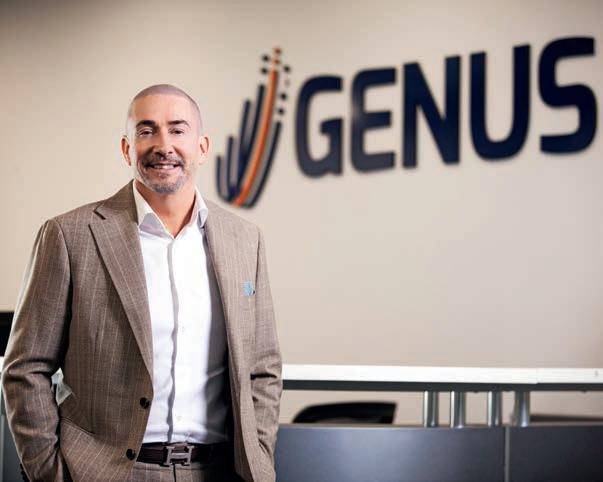
echo chamber – and it’s important to have a diverse range of voices and opinions in the conversation.
“I’ve sat on energy panels and had disagreements with the audience, and that’s really enjoyable because challenging our thought processes with di erent views is what will get us through the next 50 years,” he said.
e cost of renewable energy is no stranger to the spotlight, but a key point that Mr Fyfe said is o en overlooked in the energy conversation is the fact that Australia’s thermal power stations, particularly its coalred ones, are reaching the end of their service life and need to be replaced – regardless of whether we transition to renewable energy or not.
“If wind farms and batteries didn’t exist, we would be having to invest a lot of money to replace those assets that are reaching their end of life anyway,” he said.
“We o en talk about how expensive renewables are, but even if we could build a 1000MW coal- red power station in the current market, it’d be a lot of money.
“Large power stations also don’t work very well in a renewable market where you have to ramp up and down very quickly. And I think that discussion sometimes gets lost.”
Views on the Federal Government’s 2035 interim emissions targets have been incredibly diverse across the sector, but Mr Fyfe said that it’s important to have both people saying that they’re too low, and people saying that they’re too high.
“Having that diversity of opinion is good, because that’s when the real issues come to the fore, and where ideas come from. I think a target should always be challenging, because that’s what drives you,” he said.
“ at’s what the sector is all about. It’s all about collaboration between people with very di erent points of view.”
For Mr Fyfe, it’s clear that the future is built on relationships, not just between utilities but at an industry and individual level too – it’s vital that we nurture those partnerships and support everyone to succeed.
“What we try to do at Genus is build long-term relationships with our clients – when we’re not just building a battery project, we’re building a close trust so
that we can move on to the next project with that client,” he said.
“It’s not just about price; it’s about bringing value to the table. And the energy sector needs everyone to be involved.”
As a former client of Genus, Mr Fyfe said that he could always pick up the phone and have an honest conversation with Mr Riches about any challenges – and that willingness to jump in and work together to solve issues was what he really enjoyed about working with the team.
“I’ve been on the other side of the fence, so I bring a client perspective to things,” he said.
“I know what the pressure feels like when a project is running a bit behind.”
ere’s no doubt that Genus has the engineering expertise to deliver great results, but that success is underpinned by its talented team.
For Genus to grow, it needed to not only attract, but nurture the next generation of talent, and Mr Fyfe said that doing so means creating a work environment that people love to be in.
“We’re really committed to increasing our apprentice and traineeship intake, and local training is something that we’re looking at as well,” he said.
“I always say that if I have 1800 people who come to work, do a job that they really enjoy, get rewarded and recognised appropriately, and go home safe and happy to their family, then we will have an amazing business, and that’s what we’re working to do.”
“And doing that comes down to leadership.”
A business’s culture starts at the executive level, and for Mr Fyfe, leadership isn’t about having a title, and he always has an open-door policy that applies to everyone –from the board to the cleaning team.
“I’ve never liked having a title,” he said.
“Mateship is one of our core values, and what that word is about is we make sure our environment is very welcoming for anybody and everybody. Everyone looks out for each other – and when times get tough everybody jumps in together.
“Dave Riches’ happy place is underneath the transmission line, and he’s one of the team. And that’s where our culture really stems from.”
A er he was injured in Bali, Mr Fyfe experienced rsthand just how important it was to have a team and a workplace that supports you.
“I was working at Telstra at the time and they were fantastic,” he said.
“My family had to y out from Scotland and Telstra ew over senior managers just to meet with my family and tell them that they’d look a er me, even if I had to have a year o work.”
In fact, it was a Telstra CEO, David odey, that inspired Mr Fyfe’s approach to leadership.
“If he went out to a call centre in Perth and met a sta
member with sick family member, then the next time he was in Perth, he would remember that person. He was very calm, very personable and very approachable and that’s what I’ve always aspired to be,” he said.
“To be a leader you’ve got to love people. All throughout my career I’ve interviewed people for senior management roles, and when I ask people why they want to be a leader the answer is usually something like ‘it’s the next logical step’, but they forget that as a leader you’ve got to be willing to spend time with people, to invest in people and accept that people are very di erent.”
It’s important to start from a place of trust, and Mr Fyfe’s advice is to remember that your job as a leader is to empower people to do their job and be there to support them.
“ e vast majority of people just want to come to work and do something they enjoy – very few people want to do the wrong thing. As a leader, you’ve got to nd what gets them out of bed every day, what drives them, and then nd jobs that they’re really good at doing,” he said.
O en leaders focus on what they perceive as wrong with somebody and spend a lot of time trying to improve their weak spots, but Mr Fyfe believes that “you can’t put in what God le out”.
“Instead of trying to change them, focus on harnessing the things that people are great at,” he said.
“ en they’ll be doing really meaningful work that they get excited about, and the results generally take care of themselves.”
O en businesses spend a lot of time and energy nurturing executive and middle managers, but Mr Fyfe said leaders at the front-line are o en overlooked.
“One of the things I’m really passionate about is investing in those front-line leaders,” he said.
“It’s generally people’s rst leadership experience, and o en they’re focused on getting positive results so what drops away is people development, and they end up just ogging people. So, investing in that leadership group is really important.”
Ultimately, Mr Fyfe’s advice to both current and future leaders is to gain as much experience as possible – and when an opportunity presents itself, your rst response should be yes, then you can think about how you’re going to overcome the negatives to make it work.
“Have a crack. If you’re an engineer, have a crack at sales –you’ll learn more about yourself in sales, than in any other role. And if you’re working on a project and it touches another part of the business then go and sit with them and get to know them as individuals.”
“Building connections means you’ll have people who can help you [when you need it].”
“And be inquisitive. e more inquisitive you are, the more inclined you are to take risks, and the more successful you’ll be.”
“If you don’t take risks then you’ll never know what’s possible.” U
For more information, visit genus.com.au
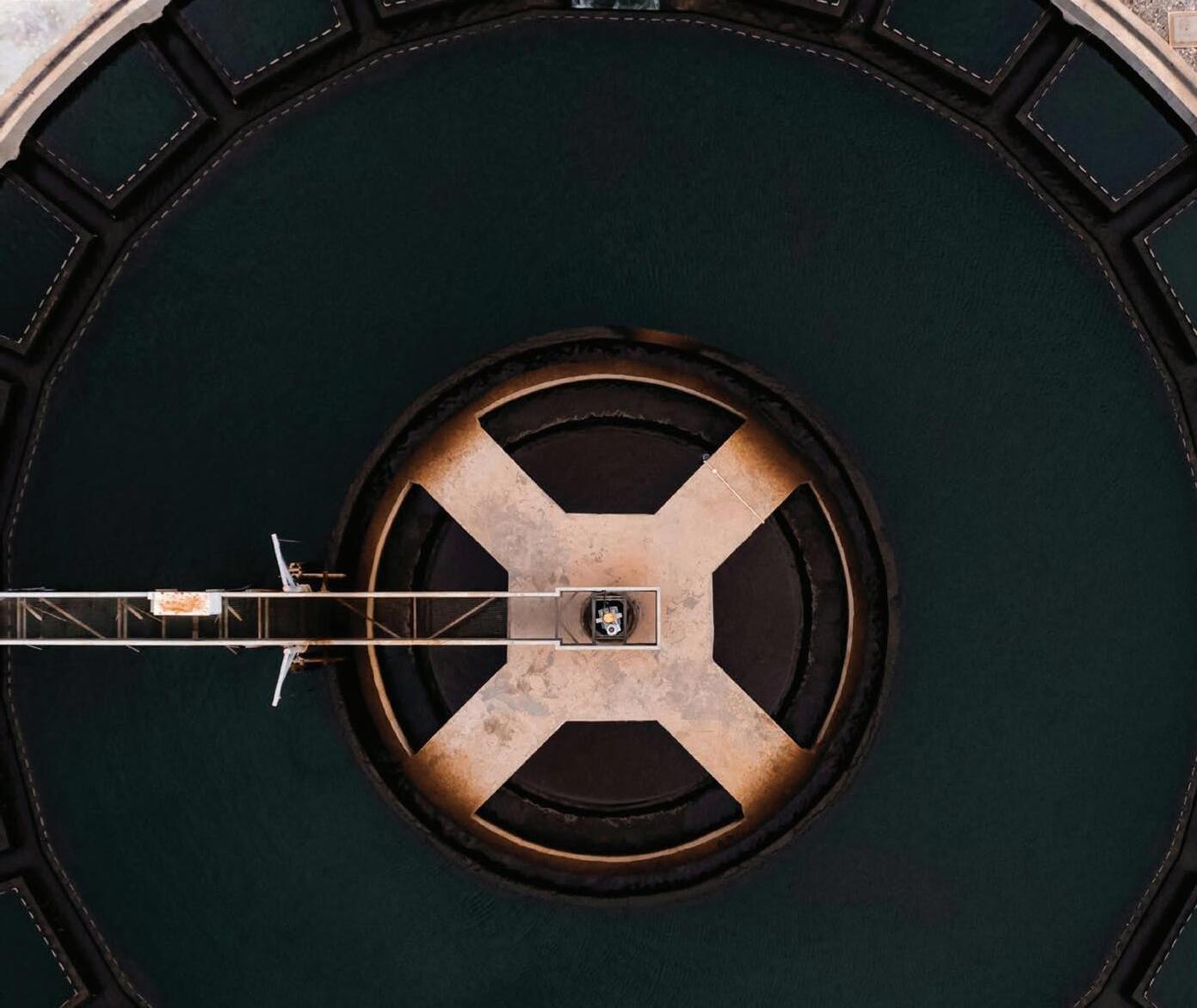

With net zero targets, rising energy costs, and tighter regulations, the challenge is clear: you can’t drive change without understanding your energy use.
NHP’s Socomec Digiware system delivers granular, comparable energy data. It turns the energy use of complex sites into clear, actionable insights so you can make confident decisions to reduce carbon, save energy, and protect critical assets.
▬ Pinpoint inefficiencies to help decarbonise
▬ Spot energy waste to cut costs
decarbonise
▬ Scalable and integrates with your existing network
▬ Cybersecure by design to safeguard your data
Get granular. Get visibility. Get Digiware. → nhp.com.au/digiware
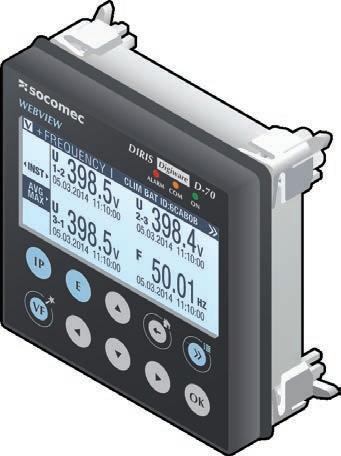

Building tomorrow’s energy system requires a collective e ort, and a reliable, renewable and equitable future starts with utilities and industry standing together under a shared vision.
From an energy perspective, Australia is unique. e diversity of its geography, climate and community needs is driving renewable energy innovation, and energy utilities are proactively harnessing those advances to bene t local communities, particularly those in remote locations.
Delivering e ective infrastructure requires a personalised approach for each individual town, so that new power systems can maintain stable performance across variable renewable inputs, while meeting strict grid requirements and community expectations. is calls for a delivery partner that can not only handle the technical complexity from an engineering perspective but also facilitate deep coordination between multiple stakeholders at every project stage.
With a forty-year history, and an o ering that aligns with community and utility companies’ delivery needs, Paci c Energy has proven to be a partner of choice. As Australia’s only vertically integrated, full-service energy solutions provider, Paci c Energy collaborates with utility companies to deliver custom solutions for some of Australia’s most hard to reach places. From southern Western Australia to the northern reaches of Queensland, the team are at the forefront of the clean energy transition.
In 2020, Paci c Energy was awarded its rst 20-year power purchase agreement (PPA) to deliver and operate a new power system for Horizon Power at Esperance in Western
Australia’s remote southwest. e project’s scope included a fully integrated cutting-edge hybrid power station comprising a 4MW solar farm with 8900 single-axis tracking panels, two 4.5MW wind turbines, a 4MW BESS and a 22MW high-e ciency gas power station.
is represented a major step forward in hybrid microgrid power station design. Not only was it set to meet nearly 50 per cent of Esperance’s annual needs with clean energy sources, but it was one of the rst power stations in Western Australia to combine solar, wind, gas generation and BESS into a microgrid of such a large scale. It also had to ensure it could seamlessly scale, enabling Horizon Power to add further renewable capacity as technology evolved and community demand increased.
Paci c Energy’s R&D Lead, Kem Mustafa, explained that delivering a fully integrated system that could reliably combine di erent energy sources in a remote coastal environment required precise engineering, robust control logic and multi-layered coordination between all of the system components. It also called for extensive stakeholder engagement.
“Every project has speci c needs and faces its own operational challenges, multiple stakeholder expectations, tight timelines and risk pro les,” he said.
“We begin by understanding those needs and then codesigning a solution that ts – not just technically, but also commercially and operationally.”
As technology evolves and energy systems become more sophisticated, their design, delivery and operation
demands tailored, exible, t-for-purpose solutions. Mr Mustafa said that it is di cult to achieve this through fragmented service models.
“ e complexity of the systems we build, means we need control over quality, delivery timeframes, and performance,” he said.
“Instead of relying on third parties, we’ve built in-house capability enabling us to integrate design, manufacturing, construction, communications and controls, commissioning and operations.”
Mr Mustafa explained that this model provides end-toend visibility for utility companies and their stakeholders.
“When responsibility is fractured, miscommunication, handover risks, and coordination delays can halt progress and weaken accountability,” Mr Mustafa said.
“Having a single responsible team, with one point of contact, from the initial design stage through to commissioning and operations provides signi cant bene ts.
“It clari es roles, reduces scope gaps, supports a coordinated approach and ensures decisions are made with complete context, lowering risks and speeding up delivery. From a project perspective, it results in a more transparent process, clearer alignment, and fewer surprises throughout the entire lifecycle. Ultimately, our model ensures real outcomes.”
is has been proven with Esperance Power Station, which has delivered signi cant bene ts for the community
e energy transition is underway. e technology is ready, the local expertise is in place, and when you align the right delivery model with the right people, you can build quickly and create a lasting impact.
and Horizon Power. e project was successfully completed in 2022, but the Paci c Energy team continued to optimise the system a er commissioning. By improving the tuning of the control logic, Paci c Energy has increased the renewable energy contribution of the system by more than ten per cent in the time since it was commissioned. e power station has reduced the town’s power supply carbon emissions by nearly 50 per cent and ensures long-term cost savings for both the Western Australian Government and the local community.
e learnings from the Esperance Power Station project acted as a springboard for Paci c Energy, and its success laid the groundwork for even more ambitious projects


across Australia, which have pushed the boundaries of running power stations on renewables only and achieving hydrocarbons o (HOFF) for long durations.
“Because we’re involved from concept through to longterm operation, every project becomes a platform for learning,” Mr Mustafa said.
“We can manage the full project lifecycle, and because we o en operate the systems we build, we’re invested in their long-term performance. is creates a strong internal drive for continuous improvement.”
Paci c Energy’s Remote Operations Centre (ROC) monitors its sites 24/7, 365 days a year. is enables the company to capture data and real-world operating learnings at a technical level.
“Every project becomes a source of data, experience, and improvement,” Mr Mustafa said.
“We see rsthand how our systems perform over time, in real conditions. at gives us a depth of insight that’s hard to get if you’re just a contractor handing over a job a er commissioning.
“Our learning isn’t theoretical, it’s practical, grounded, and eld-tested – we take that learning, embed it into our standards, and feed it into the next job. is means our utility partners, and the communities they support, don’t just get a one-o solution. ey bene t from a track record of systems that have been continuously improved.
“ at’s a big part of our culture – build it, run it, learn from it, and make it better. It makes our approach scalable, repeatable, and ultimately more valuable to our clients.”
Paci c Energy’s learnings formed the basis of a solution o ered to the Mossman Gorge community located in far north Queensland, at the foothills of the Daintree National Park.
Positioned at the end of a single high-voltage powerline, and at the fringe of the electricity grid, the people at Mossman Gorge experience a higher-thanaverage number of power outages, o en for extended periods. Living in a rural location, and vulnerable to cyclones and ooding, there are also access challenges for workers attending to unplanned outages.
To address these issues, Ergon Energy Network is installing a high voltage, network-connected battery energy storage system (BESS), designed and supplied by Paci c Energy, that can operate as a microgrid.
e rst of its kind for the state, the project is part of Ergon Energy’s commitment to improve power supply reliability for First Nations communities at the fringe of Queensland’s electricity grid.
On a day-to-day basis, the community will be powered by the network. If there is a fault upstream, the microgrid will have the exibility to disconnect from the grid and operate in ‘island’ mode, helping to improve the electricity supply’s reliability and quality. e project, which commenced in 2023, is due for completion in mid-2026.
e BESS is being designed, manufactured and tested in-house at Paci c Energy’s specialised Australian manufacturing facility.
Once complete, the Exmouth Power Project will deliver 80 per cent of the town supply from renewable sources.

Having access to locally designed and manufactured solutions is critical for Australia’s future energy mix. As Mr Mustafa explained, globally, the variations in our geography and climate, and the harsh environment of remote Australia are o en underestimated.
“Products that meet European standards struggle here in Australia,” he said.
“By designing and manufacturing speci cally for our conditions, we ensure our solutions are reliable, compliant, and t for purpose.
“If there are changes during design, fabrication, or commissioning, we handle them e ciently because our engineering, manufacturing, and eld teams are aligned from day one. If there’s a challenge on site, we can resolve it quickly because the people who built and understand the system are right here and can turn solutions around in hours rather than weeks. We don’t need to coordinate across multiple vendors in multiple time zones trying to adapt o -the-shelf components.
“Local manufacturing isn’t just an operational advantage, it’s a strategic investment in Australia’s capability. We support regional jobs, build industry skills, and strengthen sovereign supply resilience. We do this while delivering tailored and e ective infrastructure solutions that meet the highest standards and community needs.”
When the new microgrid is operational, the Mossman Gorge community will be pioneering a system that Ergon Energy considers to be an important part of a distributed energy future across Queensland.
For Mr Mustafa, the learnings from projects like the Esperance Power Station and Mossman Gorge Microgrid, mean that Paci c Energy’s utility partners, and the people and communities they support, are better able to transition to a clean energy future without a ecting the safe, reliable and a ordable delivery of essential power.
“ e energy transition is underway, and with our diverse and unique community needs, Australia is one of the markets leading the charge. e technology is ready, the local expertise is in place, and when you align the right delivery model with the right people, you can build quickly and create a lasting impact.
“At Paci c Energy, we’re not just talking about the future – we’re building it every day.” U

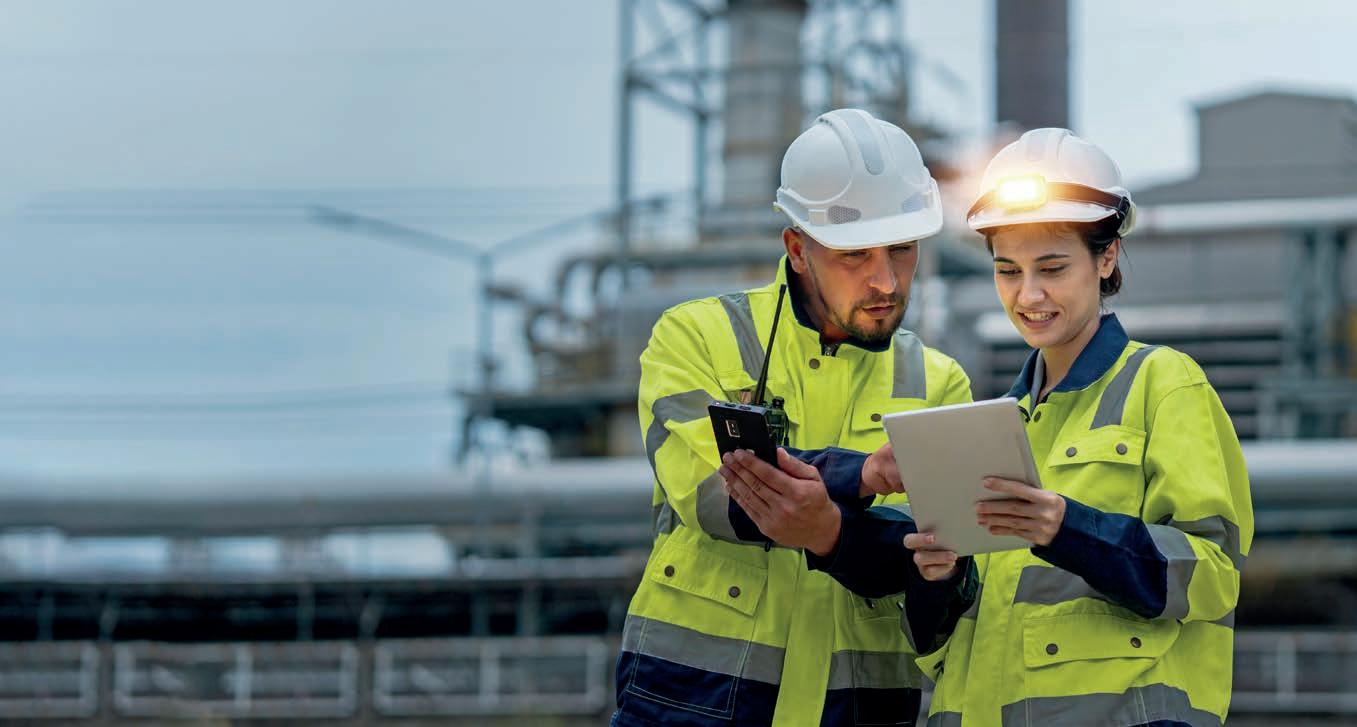

Shared knowledge is the key to a thriving utility sector, and the future demands teams who can see, trust, and act on the same data. STOWE Australia is on a mission to break down the silo.
To meet Australia’s rapidly accelerating renewable energy targets, contractors and utilities are being pushed to deliver more infrastructure, faster than ever before. Projects are becoming larger and more complex, yet budgets are becoming tighter, timelines more aggressive and new expectations are emerging around transparency and coordination.
As one of Australia’s leading industrial electrical contractors, STOWE Australia is at the forefront of this shi and knows all too well the criticality of digital transformation of their work, to maintain their reputation for performance. At the end of 2019, the STOWE team recognised it was time for change. A er more than a century of operations, the company had accumulated legacy systems and fragmented knowledge across longserving teams.
National Digital Engineering Manager, Matt Fern, said at that time, the team felt their information silos were evident. is was causing di culty to maintain consistency and e ciency across branches - organisation wide.
“We were facing an extremely experienced workforce with immense knowledge and leading methodologies, yet no simple way to capture it and unify it across the company,” Fern said. “Without a central system to store and share that information, we knew we risked losing it as our workforce evolved.”
To solve this, STOWE set out to build a common data environment that could be used throughout the entire business across all states, teams and disciplines. With rapid growth projected for the Australian energy sector and increasing demand for large-scale, complex projects, STOWE knew it couldn’t a ord to fall behind. e move positioned them at the forefront of digital adoption in their industry, helping them maintain a competitive edge while keeping pace with client expectations and sector innovation.
At the time of their transformation journey Engineering Manager Sean Dawson had been with STOWE for 17 years and had seen rsthand how important continuity and shared knowledge were to delivery.
“Clients came to us because they had con dence we could deliver large and complex projects with certainty. At the time, our own con dence in this was really reliant on us reinventing our own working environment. To maintain that, we needed one environment where every person could access accurate, up-to-date information and where critical IP stayed within the business,” Dawson said.
STOWE selected Autodesk Construction Cloud (ACC) as its central platform for models, drawings, issues, schedules and eld records. Implementing ACC across 1,500 people in 15 branches required careful change management to ensure the technology worked for everyone, not just a few early adopters. To support this rollout, STOWE partnered with ARKANCE, MONNOYEUR Group’s digital transformation subsidiary, who guided the implementation, led onboarding and training, and helped embed the system across the business.
“We knew we needed someone who had experience delivering this kind of transformation while we still had to keep projects moving,” Fern said. “So we began partnering with ARKANCE. ey worked alongside us day-to-day, travelling to branches, training teams and helping us embed the change in a way that felt practical and achievable. It never felt like an outside consultant, it truly felt like a partnership.”
Construction Sales Manager, Brett Bridgman, ARKANCE ANZ said the approach they took was to focus on keeping the entire digital transformation journey at a people-led level.



“STOWE recognised early that for their digital transformation to be genuinely e ective, it needed to bring their people on the journey. One of their biggest barriers to progress was fragmented legacy systems and siloed information, so it was critical to nd a way to bring all the historical knowledge together to set them up for the future. For this to succeed, they needed to be transparent with their people the entire way,” Bridgman said.
“Our role really became about helping them unlock the value of the data they already had. It was all there, it just so happened to be in lots of di erent places across lots of di erent people - so we had to bring it together whilst making sure their team felt empowered, not overwhelmed.”
“Our relationship with Stowe Australia goes beyond a single project, it’s a partnership founded on shared trust, collaboration, and commitment”.
With ACC in place and supported by ARKANCE, STOWE began entering and managing project data just once, which improved accuracy, reduced manual e ort, and allowed eld teams to focus on delivery instead of chasing documents. e shared environment also enabled better internal and external collaboration.
Fast forward to today, and with STOWE’s transformation fully implemented, their new day-to-day looks very di erent. Teams now partner with clients and consultants earlier in the design phase.
“We started involving clients and consultants earlier in the design phase,” Dawson said. “ at reduced late variations, strengthened relationships, and gave us con dence in how we planned and installed modular work because everyone was aligned from the start.” is collaboration- rst approach has transformed
project delivery, allowing teams to work more e ciently and make decisions with greater con dence throughout the process.
With the foundations now in place, STOWE is starting to explore how its data can o er a clearer picture of what’s happening across projects - where time is being spent, what’s slowing teams down and where there are opportunities to work smarter.
“We nally have the ability to structure and use our data in ways that weren’t possible before,” Fern said. “But it’s an ongoing journey - technology is evolving faster than anyone can predict.”
For both Fern and Dawson, the success of this shi has always come back to people, not platforms.
“Technology only works if it genuinely helps people do their jobs better,” Dawson said. “When teams experience those wins rsthand, the entire business bene ts.”
Looking ahead, the focus is on continuity and making sure the knowledge built over decades doesn’t disappear when people move on, becoming part of the way the business works for the long term.
“A business is only as old as the data it can reference,” Fern said. “If it takes ve or six years to deliver one major project, you can’t wait to start collecting that data. You have to start now.”
For operators who are looking to begin their digital transformation or scale existing processes Bridgman says that the journey starts with a simple conversation, an opportunity to explore what’s possible with an expert in the space.
“Our team works side-by-side with our clients to ensure the change is practical, grounded and measurable,” he said. “If you’d like to explore what that could look like for your organisation, we’d be happy to talk.” U
For more information, visit www.arkance.world/au-en/
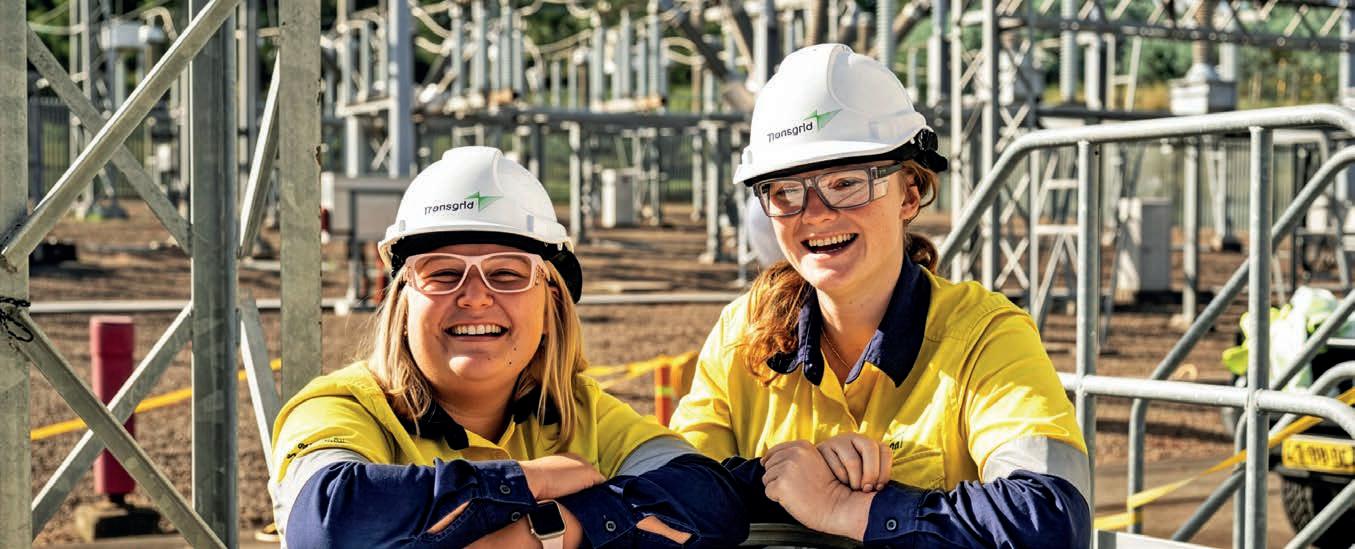

Transgrid’s transmission superhighways are part of the race to connect Australia’s clean energy.
Australia’s energy transition is no longer a distant plan on a whiteboard; it’s being bolted together in paddocks, strung across river plains, and li ed onto 500 kV gantries under the watch of line crews and project engineers. If you trace the grid map across New South Wales and into neighbouring states, the thick new lines tell a single story: there will be no transition without transmission. at sentence isn’t a slogan. It’s the organising principle that runs through the Australian Energy Market Operator (AEMO) 2024 Integrated System Plan (ISP), which con rms that renewables connected by new high-capacity transmission, rmed with storage and backed up by gas, are the lowest-cost path to net zero. It also makes many of Transgrid’s projects “actionable.”
In this feature we map the key Transgrid builds—Project EnergyConnect, HumeLink, VNI West (NSW), Sydney Ring South, the Hunter Transmission Project, and QNI Connect—and set out their scope, location, delivery dates and their shared why: unlocking cheaper, cleaner, more reliable power and making sure cities and regions can access it when coal retires. Where possible, we draw on government, market operator and utility sources, and we keep the Utility Magazine voice: knowledgeable yet approachable, clear on the stakes, and grounded in speci cs.
Ask system planners what unlocks a modern National Electricity Market, and most will start with interconnection. Project EnergyConnect—a joint venture between Transgrid and South Australian operator ElectraNet—is the 900km HV line linking Wagga Wagga (NSW) to Robertstown (SA) via Buronga, with a spur to Red Cli s (VIC). Construction on the NSW side has been complex and, yes, costly, but the strategic outcomes are now visible: Stage 1 is turned on, allowing power to ow between the three states for the rst time. ElectraNet completed its 206km section by December 2023; Stage 1 energisation followed in April 2025, delivering 150 MW transfer capacity pending full commissioning.
Transgrid’s latest project page notes that the expanded Buronga substation—described as the largest and most complex of its kind in Australia—has now tied NSW, Victoria and South Australia into the NEM, with Lines 1 and 4 energised and the eastern works (Buronga–Dinawan–
Wagga) well advanced. e NSW scope is ~700km, with works slated through 2026 to complete the east and reach full 800 MW capacity a er inter-network testing. It hasn’t been a straight line. In January 2025, Transgrid disclosed an updated $3.6 billion cost for the NSW section, citing COVID supply chain impacts, labour shortages, in ation and geopolitical factors—an increase on prior AER-approved amounts—while resetting delivery with contractor Elecnor on a xed-price basis to control risk and timeframes. Independent and ABC reporting canvassed implications for tari s and regulatory processes. Why it matters: EnergyConnect is the “ rst mover” interconnector of the modern transition. It gives NSW access to SA’s surplus wind and solar when available, lets SA lean on NSW at tight times, and creates new pathways for REZ-connected renewables in the Riverina and South-West to reach customers. Interconnection enhances resilience and reduces price volatility; it’s why AEMO placed EnergyConnect on the optimal development path in successive ISPs
HumeLink: the high-capacity spine between Snowy and Sydney
If EnergyConnect is the stitch, HumeLink is the seam. is ~365 km, 500 kV transmission project connects Maragle (Snowy 2.0), Wagga Wagga, and Bannaby, building a deep-capacity corridor to move Snowy’s dispatchable hydro and pumped storage and future renewables into Sydney, Newcastle and Wollongong. e NSW Department of Planning approved HumeLink in November 2024, imposing conditions on biodiversity o sets, visual mitigation and road upgrades; the ministerial release quanti ed the project as $4.8 billion, 1,600 construction jobs, and 2,200 MW of on-demand energy unlocked once connected. e Commonwealth approval followed in December 2025. Regulatory funding has been iterative. e AER’s Stage 2 contingent project decision in August 2024 approved $3.965 billion capex—$314 million lower than Transgrid’s revised proposal—a er a rigorous assessment of proposed costs, market modelling and stakeholder submissions. e regulator emphasised the need for meaningful engagement and social licence through delivery.
On timing, HumeLink moved from early works into main construction in late 2025, with Transgrid reporting the start of major works and shortlisted delivery consortia for west, east and north sections. Industry partners (UGL/
CPB) detail the western package: 148 km of 500 kV lines from Maragle to Wagga, plus new Gugaa and Maragle substations and augmentation at Wagga.
Why it matters: AEMO con rms HumeLink as an actionable ISP project because it li s transfer capacity from Snowy to the coastal load centres and enables lower-cost generation to meet demand as coal retires. It’s also the grid pathway that turns Snowy 2.0’s 2,200 MW/350 GWh long-duration storage into real reliability for NSW.
VNI West (NSW): the 500 kV backbone linking REZs and states
e Victoria to NSW Interconnector West (VNI West) is the heavy-duty 500 kV double-circuit link from Dinawan (near Jerilderie, NSW) across the Murray to new Victorian terminal stations Kerang–Bulgana, tying EnergyConnect in NSW to Western Renewables Link in Victoria. e AEMO/ Transgrid PACR identi ed Option 5A as preferred—the corridor that crosses near Kerang and heads to Bulgana before meeting EnergyConnect at Dinawan—on the basis of reliability, REZ integration and inter-regional transfer.
On the NSW side, Transgrid has moved to a staged delivery to align with Victoria’s revised timeline. Stage 1 extends the 500 kV network to Dinawan and the South West REZ, targeted for early 2029: Stage 2 builds Dinawan to the Victorian border in line with TCV’s late-2030 completion date. Transgrid’s updated NSW cost estimate is $3.7 billion, re ecting design re nement and industry-wide cost shi s. e company projects ~2,500 MW unlocked by Stage 1 alone—enough for ~800,000 households—even before interstate ows commence.
Public exhibition for the NSW EIS is complete; submissions are under review, and DPHI has agged a 2026 publication timeline for the response report. AEMO Victoria Planning similarly briefs stakeholders on the TCV early works and engagement program.
Why it matters: VNI West is the “energy superhighway” that lets Murray River and Western Victorian REZs trade with NSW, adding ~1.93 GW export capability from Victoria and ~1.67 GW import from NSW, increasing resilience as coal retires and taking pressure o single-state supply/demand imbalances.
Sydney Ring South: reinforcing the load centres
With EnergyConnect, HumeLink and VNI West carrying vast ows across the inland, Sydney Ring South focuses on the coastal load centres. It’s the ~114 km, 500 kV reinforcement from Bannaby to a new South Creek substation in western Sydney, designed to secure supply to Sydney–Newcastle–Wollongong (SNW)—regions that account for roughly three-quarters of NSW demand—as local coal units retire and new industrial loads (data centres, international airport precincts) ramp up. AEMO made Sydney Ring South a newly actionable ISP project in
2024; the AER has granted Transgrid more time to re ne the PADR, with publication due by April 30, 2026, ensuring the options bene t from updated IASR and ESOO inputs. , Transgrid’s pretender scoping and route analysis has focused on linking southern ows (HumeLink/ EnergyConnect/VNI West) into Sydney’s inner 500 kV system, a lower-cost option than alternatives canvassed, and one identi ed by AEMO as necessary to maintain adequacy as regional generation exits. Infrastructure Pipeline summarises a September 2028 indicative completion in the ISP, subject to RIT-T and approvals.
Why it matters: AEMO’s network investment appendix is explicit: without Sydney Ring South, the SNW load centres fall short on transfer capability once Hunter coal retires. e project is a security-of-supply hedge, an a ordability hedge (by enabling more renewables to reach load) and a growth enabler for Sydney’s electrifying economy.
On the north of Sydney Ring, EnergyCo NSW has contracted with Transgrid as preferred network operator for the Hunter Transmission Project—a new ~100 km, 500 kV line to connect Bayswater (Upper Hunter) to Olney (Lower Hunter) and integrate with existing 500 kV corridors, e ectively closing the 500 kV ring around SNW. e January 2025 commitment deed outlines Hunter- rst local bene ts, a shortlist of tier-one delivery bidders for line and substation packages, and the intent to move quickly through design and approvals to support regional jobs and system strength.
Why it matters: In AEMO’s modelling, Sydney Ring North (progressed via the NSW Electricity Infrastructure Investment Act framework) complements Sydney Ring South, bringing Central and Northern NSW renewables to the SNW load centres and ensuring balanced ows into greater Sydney as coal exits.
Transgrid’s earlier QNI upgrade (completed June 2022) li ed interstate capacity on the existing corridor via line uprates and reactive power upgrades. e next step— QNI Connect—is now actionable in the 2024 ISP: a new double-circuit (preferred 330 kV) line running ~300 km in NSW and ~300 km in Queensland, linking the New England REZ into Bulli Creek–Braemar, adding ~1,260 MW capacity northbound and ~1,700 MW southbound on AEMO’s preferred option. ISP timing points to operations April 2032 and full capacity March 2033, aligning with REZ build-outs and Queensland grid reinforcement.
Transgrid’s ISP preparatory activities and public material outline multiple NSW corridor options and the role of QNI Connect in sharing low-cost generation and rming across borders; industry partners (Hitachi Energy, Zinfra/Beca) documented components of the
Multiple projects in remote areas like Bago are part of the plan to complete an interconnected grid.

earlier QNI works and the rationale—voltage stability and transfer capacity—that carries forward to the new build.
Why it matters: e northern interconnection narrows price spreads, integrates New England REZ and Queensland renewables, and gives planners exibility during low wind or solar periods, reducing reliance on high-cost peaking plant. In AEMO’s cost-bene t accounting, interconnectors of this type deliver net market bene ts under multiple scenarios.
Timelines, interlocks, and the “energy superhighway” thesis
It’s tempting to read each project in isolation—delivery risks, regulatory milestones, social licence—but the grid doesn’t operate as isolated lines. It’s a system of interlocks:
• EnergyConnect builds the east–west spine and opens new REZ pathways in the south-west. Its full NSW completion in 2026 enables later inter-regional ows via Dinawan and Buronga, dovetailing with VNI West Stage 1 while Victoria’s section moves to late 2030. ,
• HumeLink is the Snowy–Sydney expressway, under construction now, with approvals locked and AER CPA2 capex set; it’s the way Snowy 2.0’s deep storage reaches the coastal load and supports Sydney Ring South when it arrives.
• VNI West Stage 1 is a fast-track to Dinawan and the South West REZ by early 2029, yielding bene ts before inter-regional trading begins; Stage 2 lands with Victoria’s revised November 2030 schedule, completing the NSW–Vic high-capacity chain.
• Sydney Ring South and the Hunter Transmission Project close the ring around the SNW load centres on the south and north arcs, timed to the 2028–early 2030s window when coal exits accelerate and new load (airport, data centres) shapes demand pro les.
• QNI Connect adds a northern expressway circa 2032–33, syncing with New England’s REZ roll-out and Queensland’s SuperGrid plans. is is the energy superhighway thesis AEMO set down in the ISP appendices: build backbone lines where they create the largest net bene ts, connect the REZs to those backbones, and reinforce metro load centres
so prices, reliability and emissions targets align through the 2030s. It’s why Sydney Ring South and QNI Connect were elevated to actionable status, and why Transgrid’s program emphasises speed with discipline—deliver the nation-critical projects on current timelines, re ne options where needed, and maintain social licence along the route.
Social licence, planning reforms and financing the build
Transmission projects of this scale arrive with questions and contestation. Communities along corridors have asked for undergrounding assessments, route re nements, biodiversity o sets, visual screening and farm biosecurity management. Regulators have responded with conditions (as in HumeLink’s approval), cost scrutiny (AER’s CPA2), and timetable extensions (AER’s PADR extension for Sydney Ring South) to improve analysis and engagement quality Government policy has moved too. e NSW Transmission Planning Review (2025) sets out reforms to clarify roles, streamline approvals, and strengthen coordination—with EnergyCo and the Department leading implementation—while the state budget doubled funding for the Transmission Acceleration Facility and completed nancing on the Central-West Orana REZ network, signalling the direction of travel: more capacity, faster. On nance, the Commonwealth’s Rewiring the Nation program and the Clean Energy Finance Corporation (CEFC) have stepped in. In December 2024, CEFC committed up to $1.9 billion in concessional nance to support HumeLink and VNI West (NSW), explicitly to lower borrowing costs and crowd in private capital for transmission identi ed in the ISP as the lowest-cost pathway.
It’s easy to quantify the bene ts: gigawatts of transfer, net market bene ts in AEMO’s modelling, and consumer savings when constraints ease and cheaper generation ows. It’s harder to quantify the moments the backbone prevents: the calm winter evening when wind is low and solar is gone, the summer day when a unit trips and the interconnector picks up the slack, the weeklong renewable drought Snowy can bridge because HumeLink exists. ose are the “invisible wins” customers won’t see on a bill breakdown, but they embody the ISP’s logic. Transgrid’s 2025 Transmission Annual Planning Report (TAPR) frames it bluntly: NSW is leaving the “ramp-up” phase and entering a “deep transition”—rapid coal exits, rapid build of renewables and storage, and rapid demand shi s (data centres, electri cation). e TAPR maps record connection interest—>10 GW of new projects—and sets out the projects that will carry those electrons to market: EnergyConnect, HumeLink, VNI West, Sydney Ring, QNI Connect, and the REZ networks with EnergyCo.
What to watch in 2026–2030
• EnergyConnect (NSW east): towers and stringing into Dinawan and Wagga, testing and commissioning towards full capacity in 2026. A key milestone for inter-regional resilience.
• HumeLink: main works across west, east and north packages, with biodiversity o sets and engagement programs in place; watch AER compliance and post-approval conditions as construction deepens.
• VNI West (NSW Stage 1): enabling works to Dinawan and the South West REZ to an early-2029 target, while Victoria’s TCV executes early works to the late-2030 timeline—easements, cultural heritage, geotech and social licence.
• Sydney Ring South: PADR in April 2026, with PACR to follow; network and non-network options assessed under the RIT-T per AEMO’s ISP request.
• Hunter Transmission Project: EnergyCo and Transgrid nalise delivery contracts and award line/substation packages; local job creation and regional procurement commitments front and centre.
• QNI Connect: route selection and joint planning with

Powerlink, coordinating with New England REZ timing; long-lead equipment and easement programs given the 2032–33 commissioning pro le.
The editorial bottom line e projects pro led here are not optional extras. ey are the structural preconditions for replacing coal with renewables and storage at least cost. AEMO’s roadmap is unambiguous; Transgrid’s program is aligned; regulators, CEFC and governments are adjusting frameworks and nancing to get lines built on time. e work is hard— social licence must be earned, costs must be justi ed—but the alternative is harder: a grid that arrives at the 2030s with inadequate transfer, stranded REZs and elevated prices.
e backbone we build in paddocks and substations over the next ve years will decide whether Australia’s clean energy story lands as promised: reliable, a ordable, decarbonised. On paper, the ISP shows it can. On the ground, EnergyConnect, HumeLink, VNI West, Sydney Ring, Hunter, and QNI Connect are how we make the paper real. U
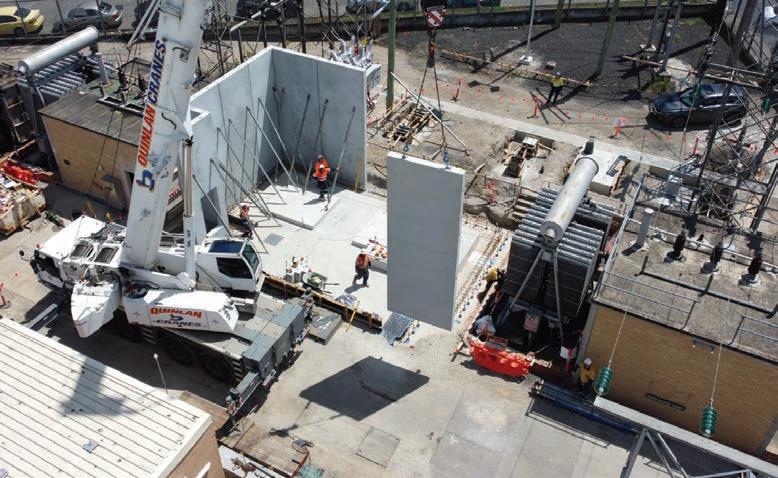
For utilities, energy usage plays a big role in both meeting sustainability goals and keeping prices a ordable for customers, and the best strategic outcomes are informed by accurate data.
While the energy sector is leading Australia’s charge towards net zero, utilities from all sectors have a part to play. It’s not just the way we generate and distribute electricity that’s evolving, but the way we use it too.
Whether it’s meeting sustainability targets, enhancing carbon footprint reporting, or achieving energy e ciency benchmarks under the National Construction Code (NCC), NABERS, and Green Star, the bigger picture is clear: sectors are becoming increasingly conscious of when and how much electricity o ces and critical assets consume.
According to NHP Product Manager, Fekra Gasser, when energy is well-managed it o en translates into nancial savings that can be passed on to customers, as well as reduced downtime, fewer unexpected shutdowns and even longer asset lifespans.
But without accurate data, utilities are trying to make decisions when they could be quite literally kept in the dark.
Before utilities can begin their e ciency journey, Ms Gasser explained that they rst need to build up a base of data that shows not only how much energy they’re currently using, but where it’s being used, and when.
“To decide [which actions] would make the most sense for them to do, they need to be able to measure and analyse their [energy] data,” she said.
“It might be that they have a particular aircon [in their o ce] that’s very ine cient, or if it’s a process/load in a [plant] that could be optimised to draw less energy throughout the day, rather creating a single peak at one time. What seems like a small change can have considerable bene ts in the long run – but they need to have that information to make a decision.
“And to start that the journey o , we do need to have accurate energy data and we then to track the e ciency as well.”
is means implementing an energy management system, but not just any system, the right system.
For utilities embarking on energy management initiatives, Ms Gasser recommends starting with clear objectives.
“What are they looking to achieve? Is it for the National Construction Code for their new sites like o ces? Is it for carbon reporting, or is it for asset management and e ciencies?”
e answers to these questions determine monitoring depth and system con guration. Compliance monitoring might require measurements at main distribution points or at major loads, while e ciency optimisation could justify granular branch circuit-level monitoring for most or all loads.
e key is starting somewhere and building incrementally. With a modular system like Digiware, utilities can begin with basic monitoring and expand as they develop expertise and identify additional opportunities.
“ e hardest part of it is selecting the right system for the site’s load pro le and energy goals, which is something we can assist with and make sure that it is commissioned to do what you want it to do,” Ms Gasser said.
In the utility sector, energy use varies considerably between not just an o ce and treatment plant, but within complex sites too, and Ms Gasser explained that it’s not just about choosing a high-quality solution, it’s vital to choose something that that’s the best t for your asset.
Paradoxically, modern energy-e cient equipment can change the way your site uses electricity and add new issues that aren’t quickly or easily identi able. Ms Gasser explained that Variable Speed Drives (VSDs), LED lighting systems, and other smart building technologies are incredibly e cient but generate power quality issues such as harmonics, power factor or network imbalance.
“While updating sites to new technology is very important, it is equally as important to monitor how the use of electricity is changing to ensure that issues like additional heat in the site’s electrical infrastructure and noise interruption isn’t compromising sensitive equipment like servers and transformers.” she said.
For a water treatment plant, this might mean a pump control system interfering with critical monitoring equipment. In a council o ce, it could be the combination LED lighting systems, updated HVAC and larger number of laptops creating power quality issues that a ect server performance. ese problems are o en di cult to diagnose without proper monitoring, leading to costly downtime and premature equipment failure.
Traditional energy monitoring systems take a one-sizets-all approach, installing the same high-speci cation meters throughout a facility regardless of actual requirements. is approach works but comes with unnecessary cost and complexity.
However, Ms Gasser said that most utilities need a exible solution, and the answer lies in modular energy management systems that can adapt to each load’s speci c monitoring needs.
She highlights Socomec’s Digiware range, which o ers everything from basic energy monitoring to advanced power quality analysis within a uni ed platform.
“What sets it apart is that it is a very scalable and exible system,” she said.
“ e system’s meters are DIN rail mounted with options for solid core, split core, and Rogowski coil current transformers, making them suitable for both new installations and retro ts across a range from 5A to 6000A.” is exibility proves particularly valuable in complex utility environments where di erent loads require di erent levels of monitoring. In a council facility, basic lighting circuits might only need kilowatt-hour measurement, while
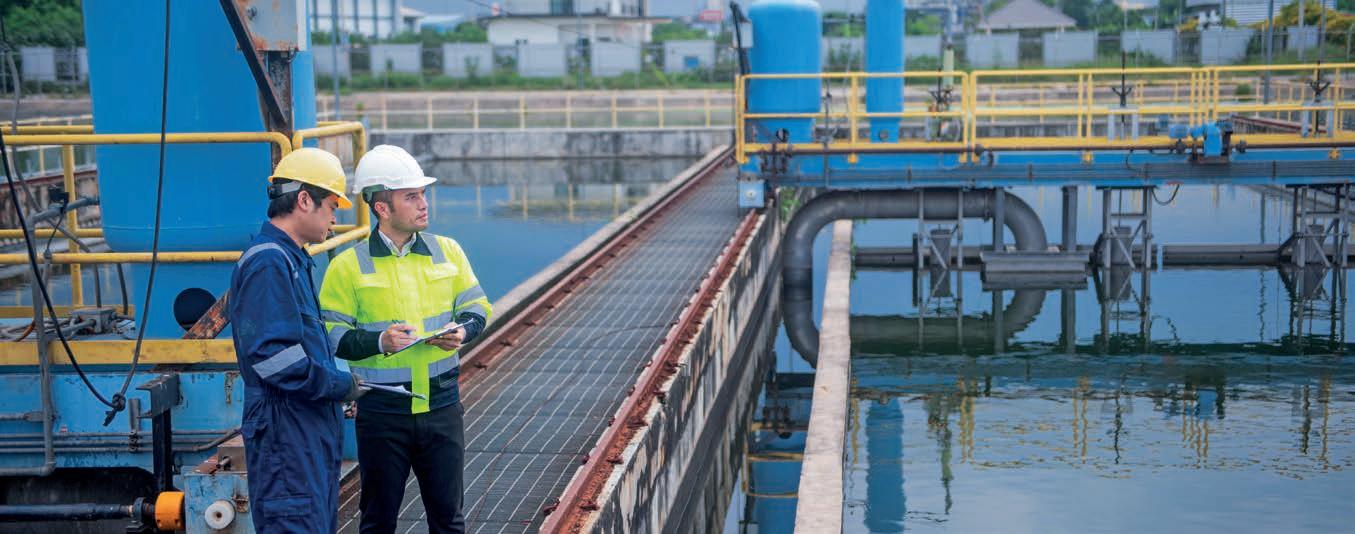
air conditioning systems require harmonic monitoring to ensure they’re not generating power quality problems. Server rooms need monitoring to detect incoming harmonics that could disrupt sensitive equipment.
“Because it’s scalable. A site may decide they only need ve meters to start o with, to measure the totals of all major loads. en once they have that data, they move on to 20 meters to subdivide the monitoring and be more intentional with the updates to either the equipment or process. All this is scalable and retro ttable within the same system.”
Another bene t of comprehensive energy monitoring lies in asset management and predictive maintenance. By establishing baseline energy consumption patterns for each load, utilities can identify developing problems before they cause failures.
“For example, when they’re monitoring their individual loads, they’ll be able to see what caused nuisance tripping,” Ms Gasser explained.
“Was it a genuine fault or was its high harmonics causing an unnecessary tripping? Is there a requirement to incorporate a harmonics mitigation system? at decision piece can then be made with clearer understanding of what’s going on with the assets on site.”
is capability proves invaluable for utilities managing distributed assets across wide geographical areas. Rather than dispatching technicians to investigate every alarm, operators can analyse energy patterns remotely to determine whether an issue requires immediate attention or can wait for scheduled maintenance.
e data also enables more sophisticated demand management strategies. With detailed knowledge of which loads are critical and which are exible, utilities can participate in grid stabilisation programs by temporarily reducing non-essential consumption during peak periods.
Given the critical nature of utility infrastructure, cybersecurity remains paramount in energy management system design – as anything that connects on the public internet is a potential access point for cyber criminals.
According to Ms Gasser, Digiware was originally designed for use in critical data centres, so security has been central to this system from the very beginning.
e system’s embedded web server provides the ability to monitor and analyse the data remotely through the local network, or integrate with existing SCADA and building management systems. is approach ensures that energy
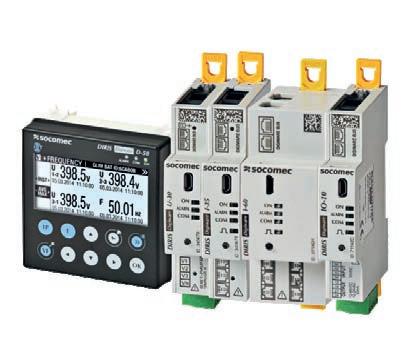
monitoring data can be incorporated into existing cyber security frameworks without creating new attack vectors.
Despite the clear bene ts, Ms Gasser acknowledges that for many utilities implementing a new energy management solution can be daunting and many companies feel there’s a risk of this journey being more work than they bargained for.
“A lot of the misconceptions might be that it’s too hard,” she said. “Which it can be, but with the right assistance and information, it’s a very powerful tool to have.”
is is where the team at NHP can help, and Ms Gasser explains that the company has technical consultants across Australia and New Zealand, that can help at all stages of this process.
“We can talk utilities through what’s required and help with the product selection. A er it goes to a contractor to be installed, then our service team can commission it.
“Our aim is to give the customer more of a tailored solution for what they need, and because Digiware is so exible, it’s very easy to go with all the bells and whistles –which is great if you want them or if you need them, but not if you don’t.”
Digiware is a modular energy management system that can operate as a standalone end-to-end solution or integrate seamlessly with existing platforms such as SCADA or Rockwell FactoryTalk Energy Manager.
NHP delivers a comprehensive suite of solutions designed to meet the evolving needs of modern energy infrastructure. e product portfolio spans Power Distribution, Automation, Motor Control and Drives, EV Charging, Power Quality, and Emergency Lighting. Whether you’re at the beginning of your journey to modernize infrastructure or advancing a sustainability initiative, NHP provides tailored solutions that integrate seamlessly with Digiware for enhanced performance and connectivity.
For an energy management system, the complexity lies primarily in system selection and commissioning rather than day-to-day operation. Choosing the right monitoring con guration requires understanding both current loads and future expansion plans. Proper commissioning ensures that data collection aligns with actual operational needs.
“We end up o en focusing more on generating more power rather than using what we have,” Ms Gasser said.
“If we improve the e ciencies with the energy that we already have, we can achieve maximum productivity with minimum wasted energy or expense.” U

Utility crews face real risks on the road – but smart tech is challenging that norm and helping Australian utilities boost fleet safety, protect crews, and build trust with the communities they serve.
Australia’s utility workforce keeps essential services owing. But the job o en starts behind the wheel. Crews travel long distances, navigate congested urban streets or remote roads, and respond to emergencies in harsh conditions. Add fatigue, unpredictable weather and pressure to meet service targets, and the risk pro le climbs sharply. Transport incidents remain a leading cause of workplace fatalities, and for utilities, every collision carries human, nancial and reputational costs.
Beyond driving hazards, crews face operational blind spots. Managers o en lack real-time visibility into driver behaviour or vehicle health, especially in areas with limited mobile coverage. Traditional safety programs
rely on a er-the-fact reporting—too late to prevent an incident. e challenge is clear: utilities need proactive tools that protect people and assets without adding complexity.
Telematics: the backbone of smarter fleets
Telematics blends GPS tracking, onboard diagnostics and wireless connectivity to turn vehicles into data-rich assets. For utilities, this means live location monitoring, route optimisation, and predictive maintenance—all critical for reducing downtime and improving response times. Geotab’s utility eet platform goes further, integrating


driver performance analytics, duress alerts and even satellite coverage for remote areas. Managers can track harsh braking, speeding or seatbelt use, dispatch jobs in real time, and maintain compliance with Chain of Responsibility laws—all from a single dashboard.
e bene ts ripple outward: fewer breakdowns, lower fuel costs, and stronger safety culture. But telematics alone doesn’t solve the most human risk—distraction behind the wheel. at’s where all-in-one video telematics enters the picture.
Geotab’s GO Focus Plus video telematics solution is not just a lens on the dashboard; it’s an intelligent assistant. Using edge AI, the system detects risky behaviours— phone use, drowsiness, tailgating—as they happen and delivers instant, in-cab voice prompts like “Eyes on road” or “Increase following distance.” is real-time coaching helps drivers self-correct before a mistake becomes a crash. e results speak volumes. In recent trials, Geotab’s all-in-one video telematics reduced tailgating by 90 per cent and mobile phone use by 95 per cent,
Fleets don’t just need more data—they need smarter ways to use it. Our platform delivers proactive coaching and practical insights right when they’re needed most.
turning every alert into a learning moment rather than a punitive measure. Fleet managers bene t too: AI-driven video intelligence surfaces only the most critical events, eliminating hours of footage review and enabling targeted coaching. Each alert includes contextual data, so managers can act quickly and e ectively.
For utilities, these tools do more than tick compliance boxes. ey create a proactive safety ecosystem where drivers feel supported, not surveilled. rough Geotab’s MyGeotab platform, managers can assign coaching, track progress and reinforce positive habits—building a culture that prioritises getting everyone home safe. And because the system integrates seamlessly with existing telematics, utilities gain a uni ed view of eet health, driver behaviour and operational performance.
As Fernando Ferreira, Geotab’s Associate Vice President for Safety Solutions, puts it: “Fleets don’t just need more data—they need smarter ways to use it. Our platform delivers proactive coaching and practical insights right when they’re needed most.”
Every kilometre a utility crew drives is a link in the chain of service delivery. When that link breaks—through an accident or breakdown—the impact cascades to customers, communities and the bottom line. An all-inone video telematics solution powered by AI o ers o er a way forward: fewer blind spots, faster interventions, and a safety culture built on real-time support. For an industry under pressure to do more with less, that’s not just technology—it’s trust on wheels. U
For
more information, visit geotab.com/au/
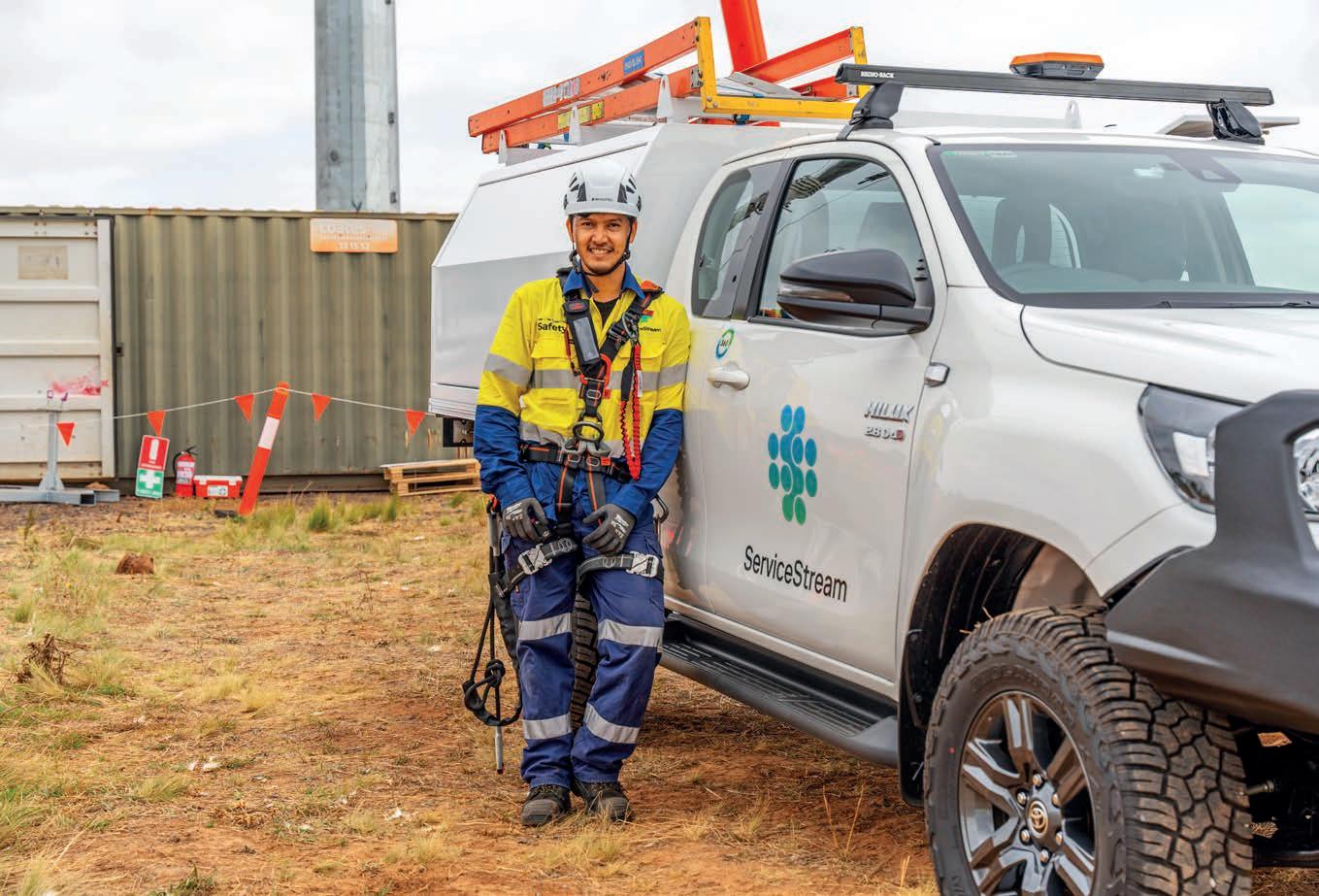

While it rarely makes headlines, the mobilisation phase of any contract, large or small, can determine the success or failure of critical utility infrastructure projects, so it’s vital they start strong.
The way a major utility project begins sets the foundation for everything that follows.
Project mobilisation represents far more than getting people and equipment to a worksite. It’s about orchestrating complex ecosystems of stakeholders, processes, and knowledge systems that must work in harmony for the life of the contract. When information remains siloed, intellectual property fails to transfer between teams, and lessons from previous projects gather dust in ling cabinets.
In the utility sector, where projects span vast geographical distances, operate under stringent regulatory requirements, and serve communities that depend on reliable infrastructure services, the consequences of suboptimal mobilisation ripple through every subsequent project phase, and o en, what starts as a small oversight can cascade into delays and budget overruns.
We’re better together
As a major contractor, Service Stream plays a vital role in keeping communities connected to essential network services across Australia.
e impact of ine cacies on-site can be felt not just by its clients in the utility sector, but by communities in which they operate, so it is continuously improving its mobilisation strategy to overcome these challenges. is shi requires investment in systematic knowledge capture, cross-sector collaboration frameworks, and structured approaches to stakeholder engagement. It demands recognition that the expertise developed on one project represents valuable intellectual property that should enhance rather than remain isolated from future endeavours.
Operating across Telecommunications, Utilities, Transport and Defence & Social Infrastructure,Service Stream has developed methodologies that leverage experience from diverse projects to enhance outcomes across their entire portfolio
Service Stream’s evolution began by recognising that project mobilisation, regardless of sector, faced similar fundamental challenges around resource allocation, stakeholder & client alignment, knowledge transfer and the development of performance & reporting platforms.

However, the solutions developed for these challenges o en remained trapped within individual business units or project teams.
Service Stream’s mobilisation methodology has been carefully honed over the past ve years through the successful mobilisation of numerous contracts throughout Australia. is approach is now rmly established, shaped by extensive experience across the Telecommunications, Utilities and Transport divisions and continuous improvement drawn from a diverse range of projects. By applying lessons learned and re ning processes with each new contract, Service Stream has developed a mobilisation framework that supports e cient resource allocation, stakeholder alignment, and e ective knowledge transfer. e result is a robust and adaptable strategy that underpins consistent project success and delivers enhanced outcomes for clients and communities. is approach is grounded in a deep understanding of key project milestones and the importance of early engagement with people, clients, and resources. e methodology prioritises proactive planning and stakeholder alignment from project outset. By involving delivery teams, clients, and supply chain partners early in the process, they create shared understanding and commitment that prevents many common mobilisation pitfalls.
Equally important is their commitment to consistent communication, both internally and externally, which fosters trust and enables teams to anticipate and resolve challenges before they impact delivery.
Service Stream’s mobilisation approach follows key principles that apply to all of their projects:
• Developing a complete understanding of all requirements, timeframes, stakeholder interactions, and any impacts on the broader community as a result of the works
• Comprehensive planning that details how the requirements will be met, identi es all risks and provides mitigations
• Complete alignment with the client on project expectations and outcomes; and
• Ongoing communication and collaboration to jointly address issues as they arise at the earliest opportunity
Key examples of this are visible across Service Stream and their portfolio of contracts. . Service Stream demonstrates e ective mobilisation in managing long-term Transport contracts by building a strong performance culture and robust systems from the start. is maximises asset longevity and aligns operations with long-term goals.
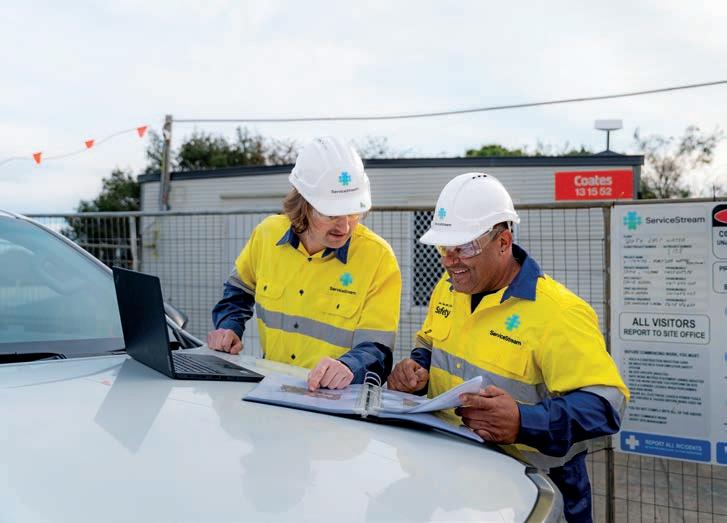
In the Utilities division, early stakeholder engagement and proactive planning create transparency and build trust. By involving teams and partners early, challenges are anticipated and addressed e ciently, resulting in smoother mobilisation and better project outcomes.
Australia’s unique geographic and cultural landscape adds complexities to project mobilisation, and at Service Stream this has driven innovative solutions with broader applications. e company’s Telecommunications division has pioneered approaches to remote area mobilisation that demonstrate the value of systematic problem-solving.
A recent project required the team to transport more than 600t of material by landing barge, including steel components that travelled almost 4500km across the country for painting and packaging before delivery. When local concrete proved unavailable, the team transported an entire batching plant complete with supporting infrastructure.
e project’s success required extensive cultural engagement, with local Council and Indigenous elders approving all personnel. is necessitated cultural awareness brie ngs for all workers and comprehensive isolation planning for emergency healthcare, food services, and communication systems.
Lessons from this project subsequently informed mobilisation planning for multiple telecommunications infrastructure projects across remote Australia, setting the team up for future success.
Most major utility and telecommunications projects involve multiple stakeholder groups including councils, government departments, regulatory bodies, unions, Indigenous communities, building owners, and utility providers.
Service Stream begins by identifying all key stakeholders and establishing clear roles, responsibilities,

expectations and sets the tone for a collaborative delivery environment.
Open, regular, and structured communication is the backbone of the company’s approach to mobilisation and includes facilitating joint planning sessions, progress reviews, and issue resolution forums. Service Stream has developed dedicated teams with expertise in speci c stakeholder categories who bring their specialised knowledge to stakeholder engagement and coordination activities. is approach ensures consistent relationship quality while allowing individual projects to bene t from accumulated expertise across the organisation.
is systematic approach to relationship building during mobilisation creates a sustainable foundation for long-term project success. Recent experience proves that establishing these collaborative relationships from the outset helps prevent scope creep and accelerates decision-making, aiming to get the right balance of support and input throughout mobilisation.
Building on a strong track record of securing high-value contracts nationwide, Service Stream has signi cant expertise in designing and implementing targeted recruitment campaigns to support rapid project mobilisation. By launching expression of interest initiatives and campaigns, the company has successfully attracted personnel with critical skill sets, including incumbent personnel, enabling swi deployment immediately a er contract awards.
is approach not only ensures that sta ng requirements are met e ciently but also leverages the company’s established networks and strategic planning to address evolving workforce needs. rough these campaigns, Service Stream has shown its capacity to respond dynamically to contract opportunities, reinforcing its reputation for operational agility and talent acquisition across Australia. ese e orts are supported by comprehensive onboarding, induction and training programs, fostering a culture of safety, customer focus, and high-quality service delivery.
In addition to developing and retaining our own workforce, our Procurement teams will work with our subcontractor networks during mobilisation to make sure everyone has access to the right resources when they need them. is includes addressing ongoing requirements
anticipated over the life of the contract, as well as scoping out contingency arrangements where mobilisation timeframes are (or could be) particularly tight.
Service Stream’s Project Execution Framework (PEx) allows the organisation to systematically capture and transfer knowledge between projects. Following each mobilisation, teams will conduct structured reviews examining what worked well, what needed improvement, and what should never be repeated. ese reviews produce reports shared across contracts and business units, preventing repeated mistakes while propagating successful innovations.
Leveraging these prior lessons not only sets the next job up for success, but the ability to anticipate and develop mitigations for issues has also greatly improved the speed at which Service Stream can mobilise their next contract, large or small.
Service Stream’s reporting platforms play a key role in enabling collaboration allowing teams to track progress, manage risks, and adjust plans dynamically.
“In recent years, we’ve had the opportunity to mobilise several major contracts across Service Stream. Each experience has strengthened our ability to work smarter and collaborate better. At Service Stream, every mobilisation is a stepping stone to excellence. By embracing continuous improvement and innovation from the outset, we set our contracts, our people and our Client up for success,” said Service Stream Executive Director David Zropf.
As Australia’s infrastructure sector faces increasing complexity from renewable energy transitions, digital transformation, and evolving community expectations, the lessons embedded in systematic mobilisation approaches o er valuable insights for the broader industry.
For Service Stream, success requires a culture that values knowledge sharing over information hoarding, celebrates collaborative problem-solving over individual expertise, and recognises that today’s innovative solutions can become tomorrow’s standard practices.
When mobilisation excellence becomes embedded in organisational DNA, the bene ts ow through entire project lifecycles, delivering superior outcomes for clients, communities, and the infrastructure ecosystem as a whole. U
For more information, visit www.servicestream.com.au
Utility companies including power, gas, and water have vast opportunities to improve operational efficiency and customer service by upgrading infrastructure with smart devices and automated systems and by implementing broadband connectivity solutions that maximize data and improve communications. Ericsson's enterprise wireless solutions unlock the power of 5G and LTE to securely connect power grids, smart meters, personnel, stations, and beyond
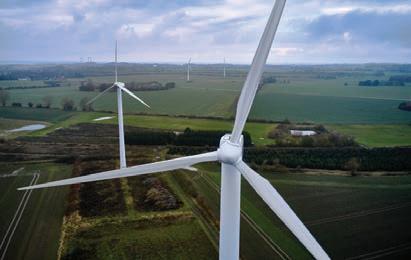

Connecting the facilities and components of a utility with a private cellular network can provide significant benefits. Complete control of the network enables layers of security that aren’t possible over Wi-Fi or public networks, eliminates traffic competition, and boosts performance and quality of service.

Ensuring persistent oversight and security is just as critical for physical facilities as it is for the network. With surveillance cameras and sensors providing on-demand feeds available in real time though LTE- and 5G-enabled wireless edge routers teams can quickly conduct video, thermal, and LiDAR-based inspections across widely distributed sites
For systems and installations located in remote or difficult to reach areas, reliable wired connectivity isn’t always readily available. Sites
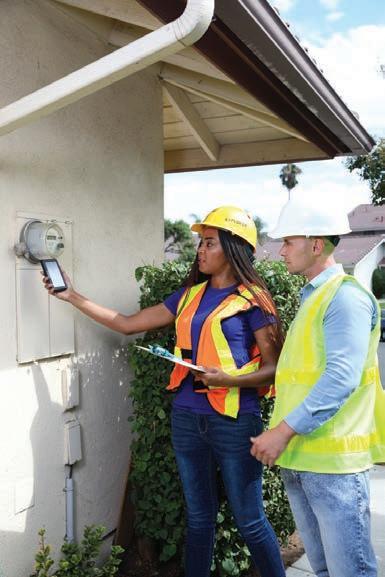
( s)
can be monitored and managed centrally, but also process analytics, run applications, and more in the field

Installation and maintenance of power, water, and gas lines involves a wide range of specialized services. Vehicles equipped with mobile routers have the wireless connectivity necessary to enable the continuous transmission of important data between field workers and headquarters

With utility systems going digital and wirelessly connected sensors and smart meters streaming real-time data, information about leakage, diversion, downed wires, faults, and grid imbalances can be collected and analyzed quickly and automatically Machine-learning and AI subsequently enable predictive maintenance to decrease outages and identify where investment is needed
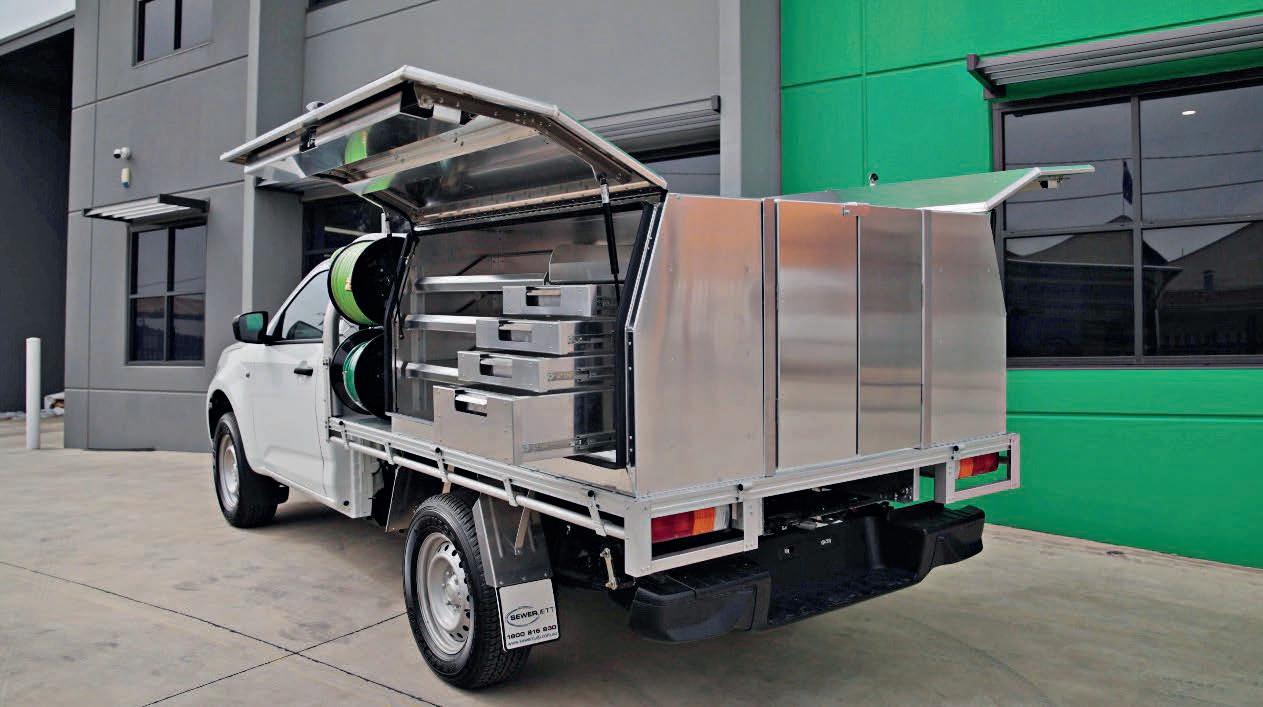
It’s a new era for essential services and that calls for a new way of engineering, driven by the most powerful resources at our disposal – people.
Australia’s climate is changing; a brand-new energy system is taking shape, and a monumental amount of new infrastructure is needed to ensure that the next generation have somewhere safe to live and a secure supply of water.
On the frontlines of our future are utilities, construction partners and contractors, electricians, plumbers and engineers – and they can’t do it alone. ey need people in their corner and tools that are engineered to work the way they work.
Every one of them needs a trade eet, but a plumber servicing residents in an urban area, a construction project manager driving out thousands of kilometres to build a major transmission project, and a sewer technician performing routine maintenance on a major metropolitan wastewater network all have vastly di erent requirements.
Enviroline Engineering Team Leader, Reade Stopford, explained that when helping a customer build out their new eet, the process starts by listening to what their customer, as well as the broader industry needs.
“We want to tailor it around what the trades need, and make a space that actually suits that,” he said.
“For many [workers], this vehicle is very much going to be their o ce on the road, so it needs to be a space they’re happy to work in, day in, day out.”
If the utility sector wasn’t on a tight deadline before, it most certainly is now. Emergency repairs aside, critical renewable energy projects need to be delivered by 2030, and
communities can’t a ord to wait for critical housing and water services – and in the middle of a skills shortage the last thing trades want to invest workers valuable time and e ort in is eet procurement.
Mr Stopford explained that Enviroline’s goal is to take the bulk of this work o their customer’s plates, without compromising on the end result. ey do this by o ering an end-to-end solution, and the team can source commercial vehicles at competitive prices, customise them to suit your business needs and then deliver them fully equipped and ready to go.
“Many of our eet customers have two or three di erent suppliers who have been putting vehicles together for them, but nothing quite ts,” Mr Stopford said.
“What really does set us apart is how customer centric we are; how much we listen to what customers are asking for, where they are trying to t their tools, to put their t out, and how they’re trying to design their workspace. We start from that and then take o .”
“We work with those customers directly to see what parts were working for them, and what wasn’t, and then develop a solution from there.”
e team then use that information to source the right make and model for that particular customer and the broader industry’s needs.
“Some customers prefer vans, some prefer trucks and others prefer utes,” Mr Stopford said.
“And that’s why we have a broad range because everyone is looking for something di erent depending on what platform they’re working on.”

A customised eet solution ensures vehicles are t-forpurpose, aligned with operational needs and are capable of supporting safety, e ciency, and compliance in eld environments. However, designing a solution entirely from scratch is costly, takes time, and requires thorough testing to ensure that it complies with industry standards and is truly up to the task at hand.
To provide the optimal balance between customisation and reliability, Mr Stopford explained that Enviroline takes a modular approach.
“With fully bespoke truck bodies and fully tailored setups, you’re going to see problems like lead times blown out, waiting issues with the nal result, or other general quality issues,” Mr Stopford said.
“So that’s why do a modular approach, where we have strong components that we reuse to make modular layouts.”
eir experience with industry-proven components helps add up to the strength and quality of the overall product.
“ is means we might reuse the same drawer system that is a proven drawer system that we know works, and then we use that in all our di erent platforms,” he said
“It ensures that the quality from the lowest level to the highest level of the complete module itself is consistent and strong.”
With this foundation of quality, Enviroline is then in the best position to o er the modules based on what their customers need and want.
“For example, we might start with six or seven layouts for the trucks based on our customer’s feedback, but then we see that there’s a strong preference for one or two so we continue to develop through that,” Mr Stopford said.
“We look at what is going to t and what the client is going to actually use – for example, if they’ve got a jetter,
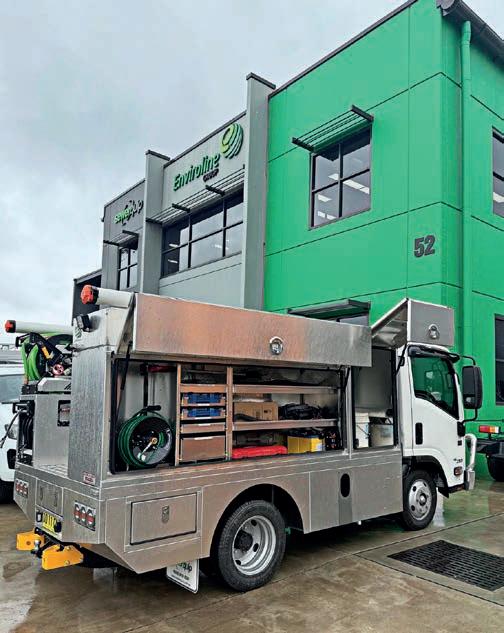
then how is that going to t around the storage solution. A lot of our tradies will need somewhere to store [tools and materials], so we need to consider where we’re going to put that.
“We keep re ning the early design stage, and then from there it kicks o into the main level of production, manufacturing and building. We look at how we can do things better and faster, and how we can make sure that the quality is always consistent – then we try to reduce the risk of errors and build ways to make things easier for the team to assemble into the design. We want to simplify it as much as possible, but still have complexity in the design.”
Mr Stopford said he’s very excited for more customers to start to embrace this piece of Aussie innovation.
“Being an Australian company with a long history of selling to the Australian market, we’ve designed this and our other solutions to suit the harsh Australian conditions because that’s who we are,” he said.
“We are extremely passionate about our product – it is made in the local community, and we’re fully supportive of our people and our team.”
For Mr Stopford, Enviroline has a culture that brings the best out of its people.
“It’s just the openness and the community that we have in the business,” he said.
“We all get input into the way that the business runs and the way that the designs are done, and the way that production runs. We trust the team’s experience to guide us to the best way of doing things.
“We’re very open minded in the way that we approach everything, and everyone’s input really is valued. ere’s no siloing, everybody’s pushing forward for the best that we can be.
“I can’t tell you how we do it, it’s just in everything that we have. It’s really magical.” U
For more information, visit www.enviroline.net.au
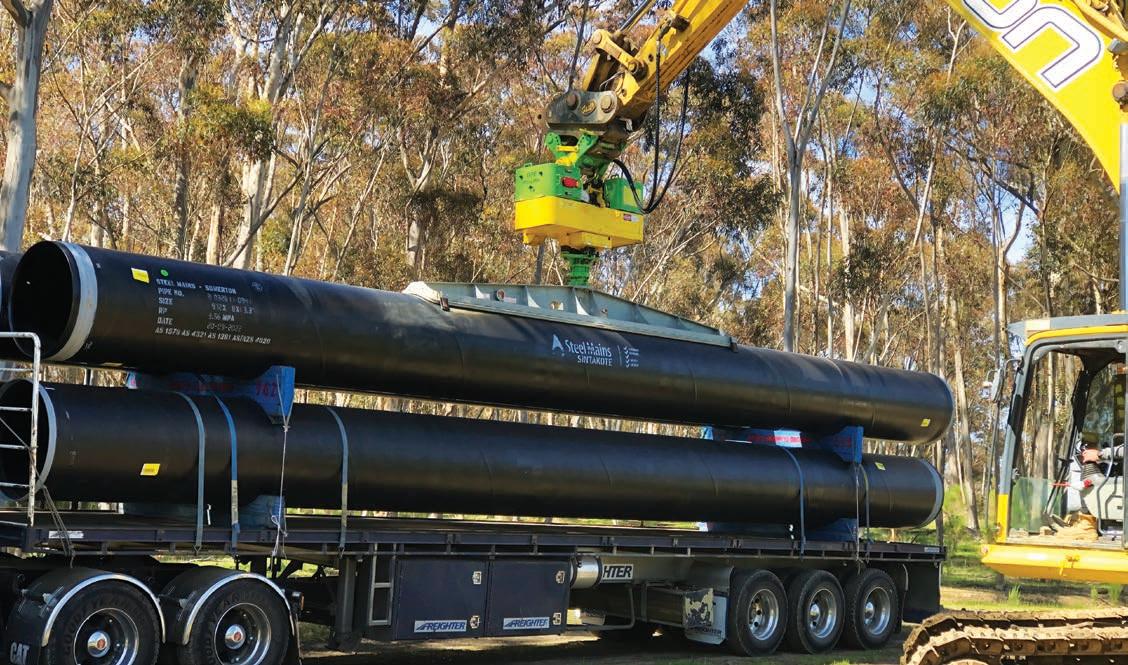
Pipe lifting is risky. VacLift makes it safer and faster.
The hidden risks of pipeline lifting
Pipeline installation is essential infrastructure work—but it comes with hazards that can’t be ignored. Moving and positioning pipes is one of the most dangerous tasks on a construction site. Traditional methods rely on slings, hooks and chains, requiring workers to stand close to suspended loads. Every attachment and detachment introduces pinch points and line-of- re exposure. A single slip can mean a dropped pipe, crushing injuries or worse. Add uneven terrain, heavy steel pipes weighing up to 20 tonnes, and unpredictable weather, and the risk pro le climbs sharply.
Industry guidelines stress the basics: competent operators, pre-li inspections, and clear communication. But even with best practice, conventional li ing remains labour-intensive and slow. Each pipe can take ve to ten minutes to rig and move, and every extra minute under load is another minute of risk. For utilities under pressure to deliver projects on time and on budget, these hazards aren’t just a safety issue—they’re a productivity drag.
Pipeline Plant Hire’s VacLi system changes the equation. Instead of slings and hooks, VacLi uses vacuum technology to grip the pipe securely with a rubber-sealed “shoe.” e attachment connects to an excavator or earthmoving machine, giving the operator full control from the cab. No ground crew needed. No hands near pinch points. No risk of a sling slipping mid-li .
e safety gains are obvious: workers are removed from the danger zone, and the system only releases pipes when they’re grounded, making accidental drops almost impossible. But VacLi also accelerates the job. A pipe can be li ed and positioned in under 40 seconds—compared to several minutes with traditional rigging. at speed compounds across kilometres of pipeline, turning days into hours without compromising safety.
VacLi ’s design protects assets as well as people. e rubber seal prevents coating damage, a common issue with chains and hooks that can lead to costly repairs or corrosion risk later. And with models sized for poly and steel pipes up to 20 tonnes, plus extension arms for reach, VacLi adapts to diverse project conditions— from urban corridors to remote alignments.
Proven in the field e Wentworth to Broken Hill Pipeline is one example

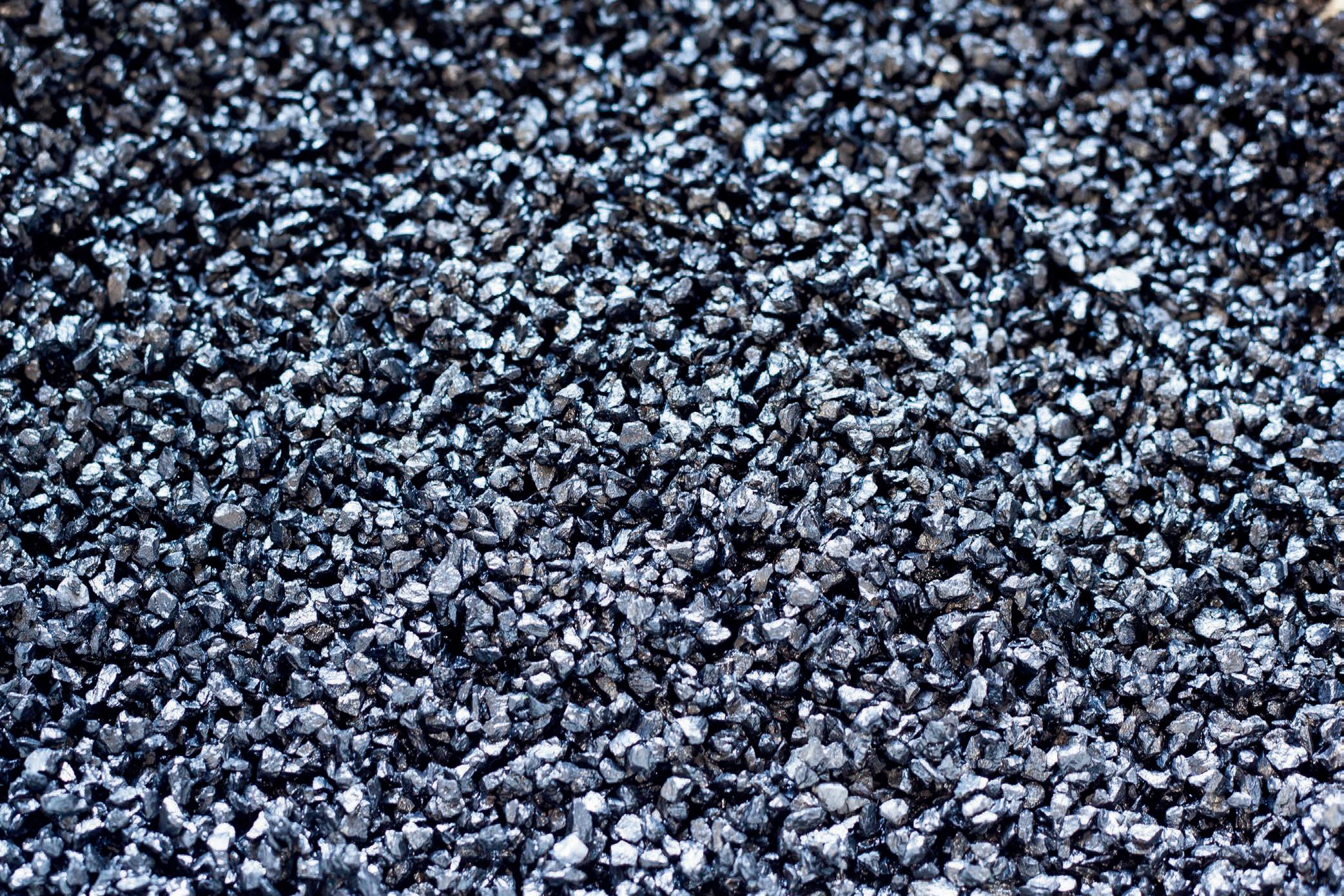










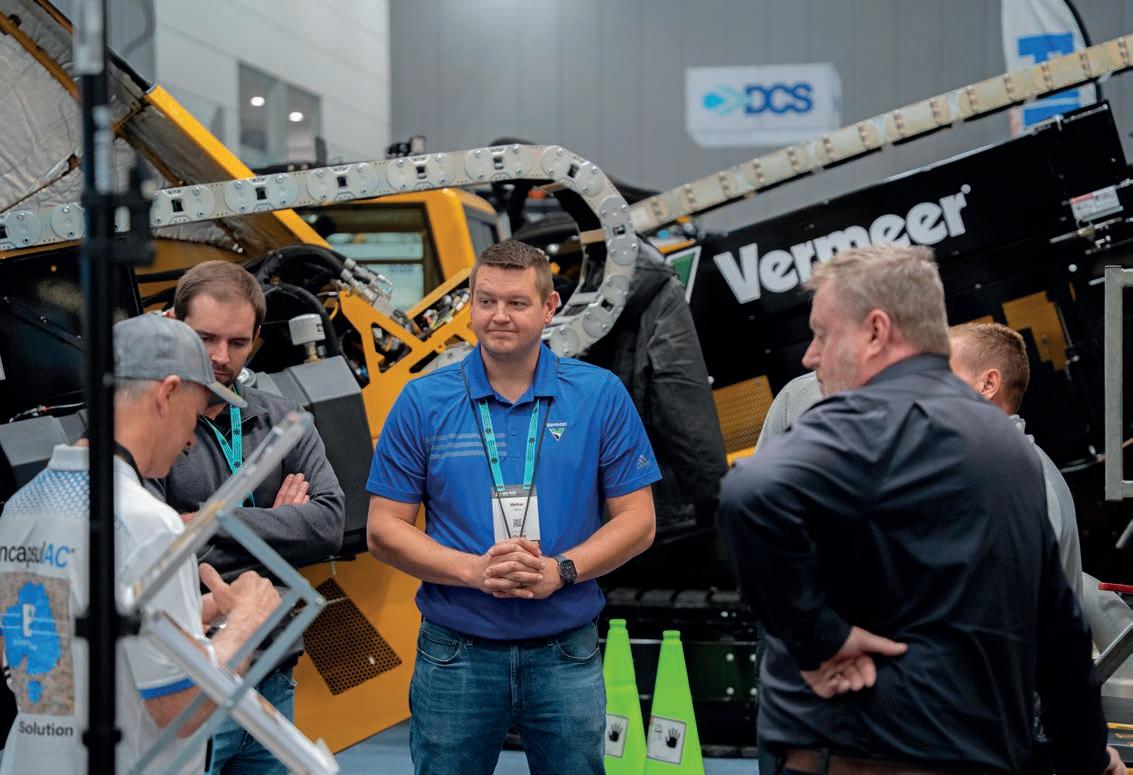
International No-Dig Auckland is shaping up to be a landmark event to learn about trenchless innovation and how it can help utility companies.
Running from 28–29 October 2026 at the New Zealand International Convention Centre, the conference and exhibition will mark the rst time the International Society for Trenchless Technology (ISTT) brings its agship International No-Dig event to New Zealand. As the preeminent global authority on trenchless methods, the ISTT unites national societies and experts around the world to advance innovation in underground infrastructure.
International No-Dig Auckland o ers an unparalleled opportunity to connect with the global trenchless technology industry. Held each year in a di erent country, the conference is a powerful showcase of worldwide innovation, bringing together the very best advancements in trenchless methods. Next year, Auckland becomes the centre of the trenchless world, drawing engineers, researchers, contractors and directors from sectors as diverse as water, sewerage, gas, electricity and telecom.
New Zealand’s rich geography, environmental consciousness and growing investment in essential infrastructure make it the perfect stage for this gathering.
e country has become a driving force in trenchless advancement – from advanced microtunnelling and horizontal directional drilling to state-of-the-art pipeline rehabilitation and sustainable wastewater management. ese techniques are transforming how the country delivers utilities, enabling major projects with minimal surface disruption and reduced environmental impact.
Perhaps the most iconic example is the Central Interceptor, New Zealand’s largest wastewater tunnel. A agship of eco-sensitive engineering, the Central Interceptor demonstrates how trenchless technology can deliver world-class infrastructure while safeguarding communities and reducing carbon emissions. Such innovations illustrate precisely why International No-Dig Auckland is not just another conference – it’s a gathering of a truly active and committed community.
Over the course of two days, delegates will be immersed in a world-class exhibition that highlights cutting-edge machinery, materials and digital tools. Exhibitors from around the globe will present world- rst solutions in trenchless installation, rehabilitation and construction,



drawing attention to how their innovations address the sector’s toughest challenges. It’s an opportunity to connect directly with suppliers and to witness live demonstrations of how trenchless applications are applied in real-world projects.
e conference program will feature high-calibre international speakers and industry leaders delivering in-depth sessions on research breakthroughs, engineering case studies and design innovations. Delegates can expect rich discussion around topics such as climate resilience, lifecycle planning, carbon reduction strategies, and how digital tools are reshaping project planning and asset management. ese conversations will equip attendees with the insights needed to shape future infrastructure delivery.
But International No-Dig Auckland is more than an exhibition or a technical conference – it’s a global networking arena. As a gathering point for trenchless professionals from Europe, Asia, North America and Australasia, it allows participants to forge meaningful relationships and develop cross-border business opportunities. Engineers, directors and contractors will be able to meet not only peers from their own sectors but also collaborators from di erent disciplines, building connections that will fuel future innovation.
is event is tailor-made for a wide-ranging audience including engineers, contractors, researchers, and industry
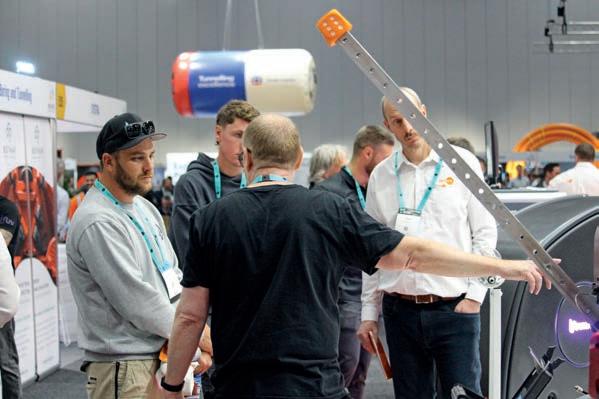
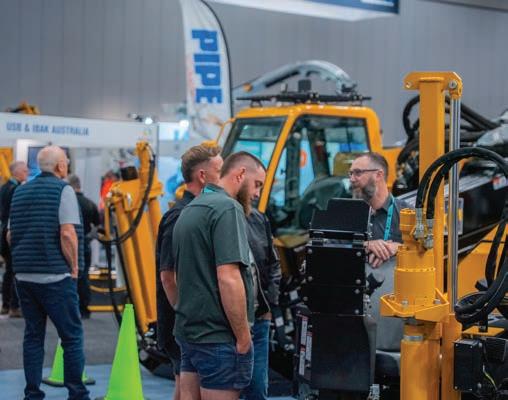
leaders. Because of its international scale, International No-Dig Auckland gives every delegate a chance to position their brand or practice on a global stage.
Hosting the conference in Auckland is emblematic of how trenchless technology is evolving. New Zealand’s infrastructure landscape demands creative, minimally invasive solutions and trenchless methods are answering that call. By gathering in this setting, the conference underlines how sustainability and technology can come together to shape future cities.
“Auckland provides the ideal setting for the next chapter of trenchless, ” General Manager – Events at Prime Creative Media Siobhan Rocks said. “New Zealand’s recent achievements in underground construction show the world how sustainability and technology can come together to shape the cities of the future.”
International No-Dig Auckland is set to de ne the future of underground infrastructure. Whether you are an engineer pushing the boundaries of innovation, a contractor delivering complex utility works, a researcher developing new technologies, or a director seeking global connections this is your chance to be part of something transformative.
e world’s trenchless community is coming to Auckland – and for those who care about sustainable, e cient, and visionary underground infrastructure, there’s no better place to be. U
For more information, visit no-dignz.com/get-involved/
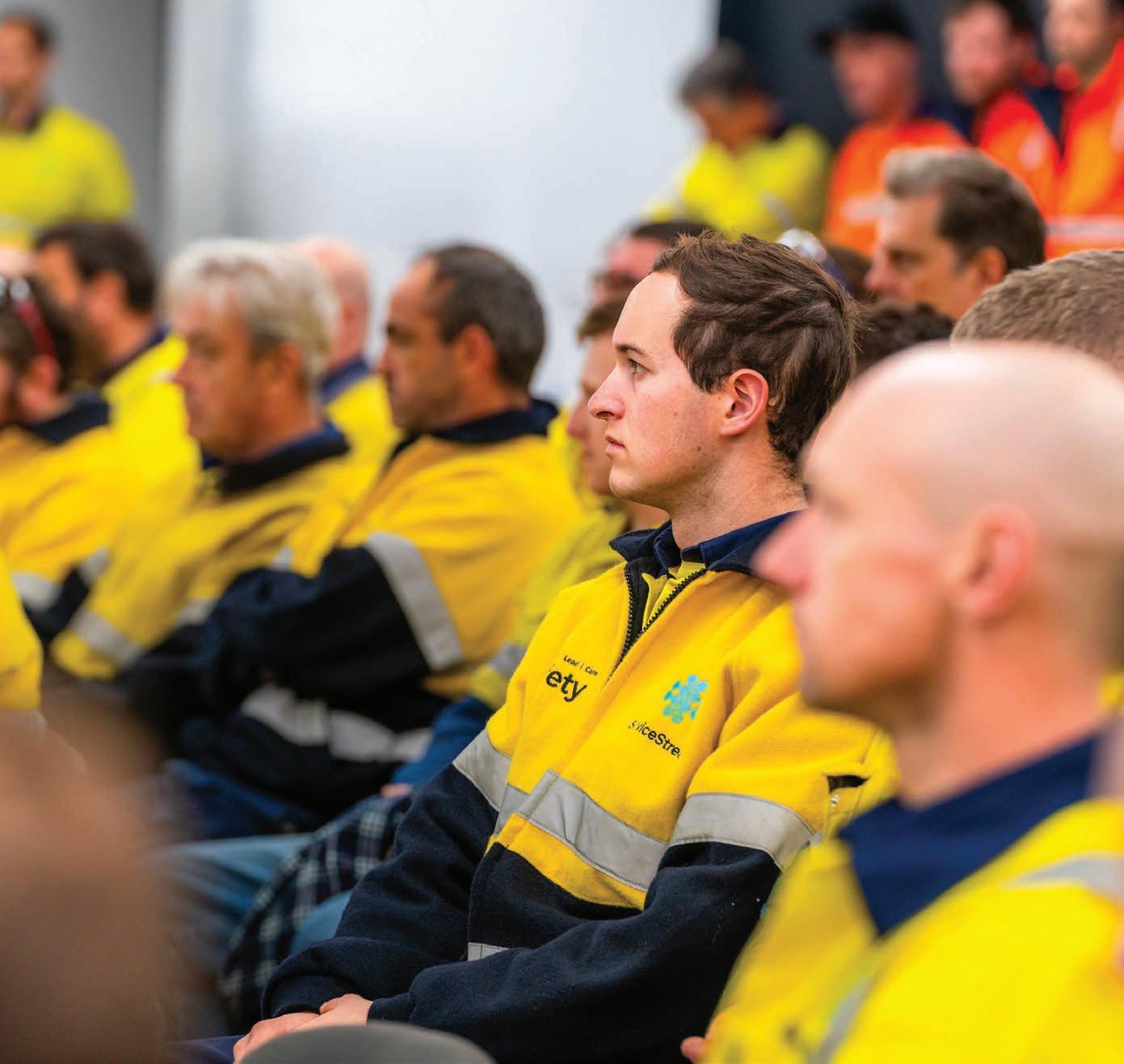

With decades of experience, we bring structure, systems and people power to get your projects moving safely, efficiently, and at scale.
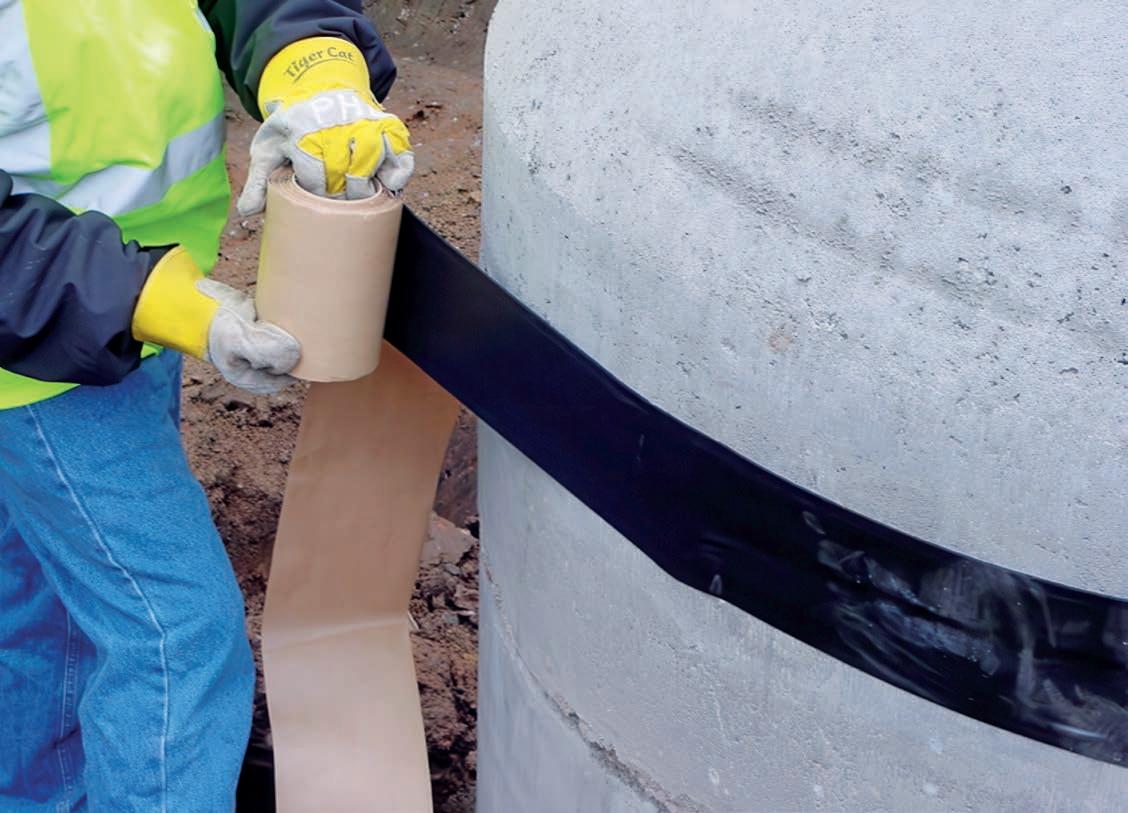
As custodians of our most precious resource, water authorities are charged with safeguarding both our communities and our ecosystems – and that means stopping sewer spills before they happen
Water is the driving force of all nature; every individual, community, industry and ecosystem depends on it to thrive – and as the world’s driest inhabited continent, Australia needs every precious drop.
Our wastewater networks play a vital role in water security, and environmental and public health, but if these systems over ow, they can introduce harmful contaminants that can impact communities, kill aquatic life, disrupt food chains and cause harmful algal blooms.
As more than 80 per cent of Australia’s native ora and fauna are endemic, many of which are already endangered, sewer spills can have devastating consequences for our unique ecosystem.
Protecting our waterways is a huge priority for utilities, but preventing over ows is easier said than done, especially as heavy rainfall events become more frequent.
ISC Services Director, Dennis Bentink, explained that when sewerage networks are overloaded or blocked due to soil ingress, root intrusion or other restrictions – then
sewage can over ow from structures and pipes into the environment.
“In ow and In ltration (I/I) is unwanted groundwater or stormwater entering sewerage collection networks, which if unchecked leads to over ows,” he said
“ e end result of I/I is increased operational costs as well as excessive and early damage to expensive sewerage infrastructure and even surface structures and roads.
“Not only are there environmental impacts, interruption to public amenity and negative public perceptions, but the costs of managing these over ows can also be quite signi cant.”
I/I from groundwater and even small rain events can result in increased pump operations with increased power consumption and treatment required that have negative environmental impacts even if the I/I doesn’t result in an over ow.
While it is not practical to totally eliminate all I/I, Mr Bentink said that it is possible to adopt processes and
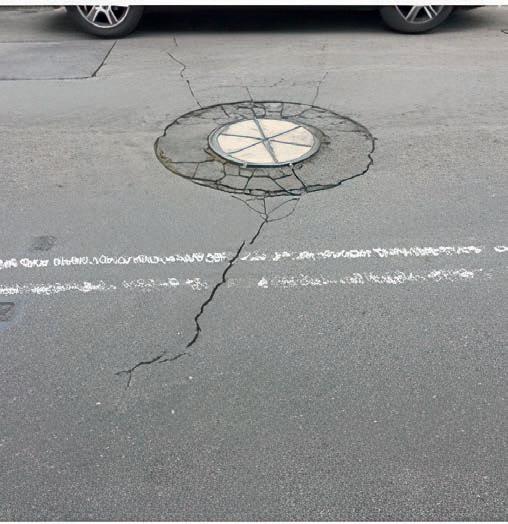
smart construction techniques to prevent early onset of I/I in new assets and by utilising systems that address I/I sources, asset owners can reach a manageable and sustainable level of I/I control. is results in environmental and nancial bene ts for water authorities and communities who ultimately pay the price for in ow and in ltration.
When it comes to the main causes of I/I, according to Mr Bentink, sewer manholes generate a disproportionate amount of I/I.
“ e most common entry point for I/I is failed joints, particularly the chimney or neck of maintenance holes where there are o en multiple joints close together and near the surface,” he said.
“Despite the best of work on new maintenance holes and pump stations, ISC Services is o en contacted by contractors needing to x a leak in a new joint, particularly in manholes and pump stations, which can be caused by a range of issues and the repair of premature failure of precast joints can be costly.”
Preventing the development of I/I is the simplest and best approach for new structures being constructed and includes the use of quality, well proven components, appropriate design and good installation techniques.
“Simple innovative approaches such as implementing Gator Wrap, a exible high-quality external wrap, designed for new precast joints in pits, manholes and pump stations, will help cost e ectively prevent early development of leaks as well as soil and root ingress,” Mr Bentink said.
In -Shield® Gator Wrap is a stretchable, self-shrinking, intra-curing halogenated based rubber with 500 per cent elongation and a full face of butyl mastic adhesive, which wraps around the outside of the joints on new structures to prevent development of premature leaks.
Gator Wrap prevents in ltration by providing a watertight seal around any precast concrete manhole, catch basin or concrete pipe joint. Gator Wrap resists harsh soil conditions and also provides a root barrier and stops

soil ingress at any crack or joint. Mr Bentink said that one of the key bene ts of Gator Wrap is that it installs easily with no primer and no special tools, and can be immediately back lled.
“Its EPDM rubber with butyl mastic adhesive achieves 500 per cent elongation and so will prevent the formation of leaks at joints, even if there is settling or movement of the structure a er construction. Gator Wrap will reduce the long-term costs associated with in ltration when used on all new precast concrete constructions, and can even be used on PVC and FRP pipes,” he said.
“With a design life of at least 50 years, Gator Wrap represents a great return on investment and insurance against costly repairs.”
Ultimately, Mr Bentink said that the rst step towards minimising I/I is to understand its possible causes and identify potential sources in your wastewater system.
“ e simplest way to do this is to look at how sewage ow changes during and immediately a er rain events. If sewage ow increases then rainwater and/or ground water is entering the network,” he said.
“Once you’ve identi ed the sources, you also need to know what your options are for addressing these.”
To help utilities with both of these steps, Mr Bentink has published a series of helpful resources on ISC’s website.
Solutions like Gator Wrap are a simple and easy way to tackle I/I, but especially for larger scale or more complicated challenges, Mr Bentink said that there are options for councils and water authorities to get specialist contractors to do detailed investigations.
“Working with specialists and contractors experienced in I/I will allow you to determine what your I/I assessment and management goals are and tailor a staged plan and program to suit your speci c circumstances and budget,” he said.
“We’re here to help, so if you need it, get in touch.” U

For further resources on I/I, scan the QR code or visit iscservices.com.au/downloads-faqs
Carbon Dioxide Removal is critical to reaching net zero and this extract from a new report highlights how Australia can make it happen. CSIRO Energy Futures Lead, associate director Vivek Srinivasan, CarbonLock Future Science director Dr Andrew Lenton and the CSIRO team investigate what needs to be done.
Carbon Dioxide Removal (CDR) refers to human-facilitated activities that remove carbon dioxide from the atmosphere and durably store it in geological, land or ocean reservoirs, or products.
To meet the goals of the Paris Agreement the world must reach net zero emissions. However, achieving net zero is only possible if countries simultaneously reduce emissions and remove CO2 from the atmosphere.
Globally, it is estimated that between 7–9 gigatonnes (Gt) of CO2 per year of CDR will be needed by 2050.1
In the near term, CDR must complement, not replace, deep emissions reductions, particularly in hard-to-abate sectors. Over the longer term, CDR will play a key role in balancing residual emissions and delivering net-negative outcomes needed to stabilise the climate.
CDR approaches are grouped into two broad categories: conventional and novel. Conventional approaches, such as a orestation, reforestation, and soil carbon sequestration, are already contributing to Australia’s progress on climate change and will deliver near-term removals and co bene ts. However, there is uncertainty around the scale and composition of land-based sequestration that may be taken up as Australia transitions to net zero.
ese removals can compete with other land uses such as agriculture or biomass for low carbon fuels, may saturate over time, and o er shorter term storage. ey can also carry reversal risks from climate-driven disturbances like droughts and bush res.
Novel CDR approaches, by contrast, have the potential to remove large volumes of CO2 with a relatively small land-footprint, and o er the potential for scalable and durable storage over centuries to millennia. However, these approaches are not yet at the scale needed and face de risking challenges that include high costs, signi cant energy and water requirements, and other dependencies.

In Australia, it is projected that between 133–200 megatonnes (Mt) of CO2 per year of CDR will be needed by 2050, depending on how dramatically emissions are reduced. ese projections will not be achieved through a single approach or technology. Both existing conventional and novel CDR approaches will be needed.
Conventional CDR approaches will play an important role in reaching net zero, due to their technical feasibility and potential for deployment at scale. Given the magnitude, complexity, and urgency of the climate challenge, a diverse portfolio of solutions will be essential. is includes not only established approaches but also the development of novel CDR approaches.
A portfolio approach can help realise the opportunity presented by emerging novel CDR to deliver durable and scalable removals, while managing the near term challenges with conventional CDR approaches (see Figure below). is is consistent with Australia’s Net Zero Plan, which emphasises the importance of developing a range of approaches beyond land-based options alone to ensure a more robust net zero transition. is Roadmap quanti es Australia’s capacity for di erent novel CDR approaches, their costs and what would be needed to develop and deploy them at scale. It emphasises how these approaches can complement conventional CDR, especially as ongoing research and development reduces their cost. It also highlights the need for ongoing collaboration and integration across scienti c disciplines to rigorously assess the e cacy and integrity of each novel CDR approach, while also identifying their co bene ts and impacts on land, biodiversity, ecosystems and resources.
Australia is uniquely positioned for the deployment of large-scale novel CDR, with advantages few other regions or nations have. ese include abundant land and mineral resources that are ideal for biomass cultivation and enhanced rock weathering at scale. It also has stable geological formations and one of the largest marine estates: providing high-capacity, durable storage both on land and in the ocean. Australia has vast renewable energy potential, powering energy intensive processes such as direct air capture and ocean alkalinity enhancement and a highly skilled workforce in engineering and resources, capable of designing, deploying and operating novel CDR systems.
Australia could reach net zero by using only a portion of its novel CDR potential to complement emissions reduction. To inform decision making, the Roadmap
examines four CDR approaches, providing national capacity and cost insights, highlighting key challenges, and recommending pathways to greater maturity and lower costs. Other developing approaches, such as ex-situ and in-situ mineral carbonation, o er strong potential and will require ongoing and future quantitative analysis. e analysis found that, under conservative assumptions, Australia has realisable capacity for up to 330 Mt of CO2 removals per year by 2050, across all states and territories. When combined with Australia’s conventional CDR potential, Australia could surpass its projected national requirements7 with only a portion of this identi ed capacity. In many of these locations, Australian novel CDR projects are already active, with 25 identi ed in the report’s analysis.
While the analysis highlights signi cant regional opportunities for novel CDR, pursuing these opportunities will require partnership with communities and must occur alongside broader emissions reduction e orts. e evidence and recommendations in this report are intended to support informed decision making that balances environmental, societal, cultural, and economic needs. In the next decade, Australia must build on global e orts and invest in research to improve CDR maturity, demonstrate performance, lower rst-of-a-kind (FOAK) plant costs, inform regional planning and build knowledge. e Roadmap report identi es key research areas to reduce risks, understand co-bene ts and enable the scale-up of novel CDR in Australia. If constraints were to be relaxed under a high ambition case, Australia’s capacity could almost triple to 900 Mt of CO2 per year.
To realise the opportunity of novel CDR, Australia must build the right enabling conditions. e opportunity requires establishing a robust enabling environment that directs and supports the emergence of a novel CDR industry in Australia. e Roadmap report identi es a set of strategic actions that will nurture this environment. ese actions are inherently collaborative, requiring coordination between government, industry, and research stakeholders. e recommendations are not exhaustive or prescriptive, but o er strategic direction informed by international best practices and tailored to the Australian context:
1. Support the development of measurement, reporting and veri cation (MRV) across di erent novel CDR approaches.
2. Position the scaling of CDR and the need for a portfolio of approaches as a national strategic priority alongside emissions reduction.
3. Consider developing a target for novel CDR in Australia.
4. Include novel CDR within an Australian Carbon market.
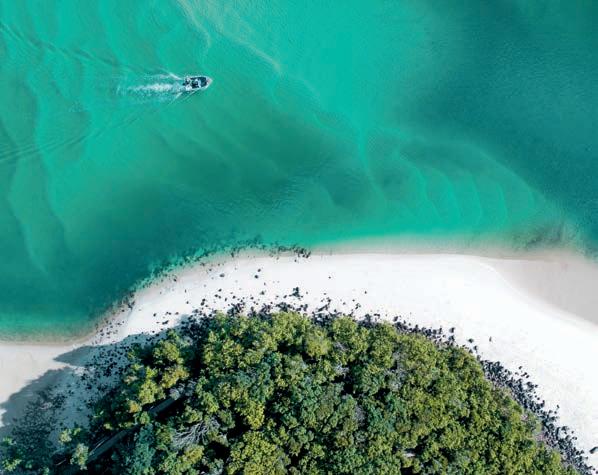
5. Continue building a strong science evidence base to support and optimise novel CDR deployments.
6. Accelerate investment in novel CDR along the innovation pathway.
7. Leverage existing hub-based models and infrastructure.
8. Identify and coordinate cost-e ective and zero emission CDR supply chains.
9. Foster social acceptance and awareness for novel CDR nationally and regionally.
10. Ensure CDR projects are developed in partnership with communities and Traditional Owners
Australia as a global leader in novel CDR Australia is uniquely positioned to lead in novel CDR, drawing on its rich natural resources, advanced industrial base, skilled workforce, and strong global partnerships.
Together with targeted investment, novel CDR sets Australia on a pathway to meeting its own net zero commitments while supporting global climate goals. It will also create new industries that diversify the economy and build regional resilience and strengthen its international competitiveness in emerging technologies and climate solutions. It will create opportunities in emerging international carbon markets while Australia continues to play a leading role in global climate action.
e Roadmap lays out a clear vision for developing a novel CDR industry in Australia, including the milestones and actions needed over the next two decades. It highlights regional opportunities for responsible CDR development and aims to align government, industry and research stakeholders to drive progress.
Australia’s rich natural and energy resources o er a globally unique foundation to develop novel CDR at scale. To realise the potential of novel CDR, it will take more than technologies alone; its success will depend heavily on a well-designed enabling environment that guides and supports the development of a novel CDR industry in Australia. U
The full report is available at csiro.au
Choosing the right specialist maintenance and machining equipment is integral to the e cient operation of essential infrastructure.
Portable, precision-engineered equipment is essential to the ongoing maintenance of Australia’s most critical assets – and whether it’s for pipes, valves or pressure systems, utilities need tools that they can rely on in the eld.
However, every sector, region and asset have their own nuances, and what works for one asset may not be the optimal solution for another – so utilities need to be able to compare di erent options and make an informed decision about their maintenance equipment.
As Australia’s largest stockist of specialist on-site machining and portable maintenance equipment, Field Machine Tools (FMT) understands how important it is to match the solution to the challenge, and not the other way round.
e company o ers one of the most comprehensive ranges of specialised fabrication and portable maintenance equipment suitable for a large range of applications, material and speci cations.
With conveniently located branches in Queensland, Victoria and Western Australia, FMT helps utilities to keep their plant, pipe and valve infrastructure operating reliably across the country.
FMT’s range of portable equipment is available for rent or purchase and includes equipment for machining applications such as tube end prep machines, portable milling machines, portable lathes, clamshell pipe lathes, ange facers (OD and ID mount), line boring machines, vessel grinding machines and pneumatic-based drills.
Removing equipment from the job site to a repair facility can delay project completion, which not only impacts the delivery of essential services, but it also increases costs.
FMT’s on-site repair and maintenance machines minimise downtime and keep utilities’ equipment working as they deliver some of the nation’s most critical services.
When it comes to valves, FMT also provides valve test equipment, valve repair equipment and portable valve actuators.

For the manufacture, repair and maintenance of heat exchangers, condensers and boilers, the company’s o ering includes tube pulling systems, tube cleaning systems, heat exchanger tools, torque-controlled rolling motors and Australia’s largest range of tube expanders and consumables.
For welding applications, customers can choose from orbital welding, bore welding and cladding machines, as well as induction heat treatment equipment.
FMT is also the Australian agent for leading international brands, including:
SFE o ers one of the world’s most comprehensive orbital welding, fabrication, precision-engineered applications and cutting solutions.
is includes CLIMAX portable machining and welding systems, TAG Pipe Equipment, AXXAIR orbital cutting, bevelling and welding, Mathey Dearman, Magnatech, B&B Pipe & Industrial Tools and Sumner material li ing and welding solutions.
Modec
Modec Air Motors is a global expert in designing, developing and manufacturing high-performance air motors and OEM replacements.
Modec o ers a versatile range of portable valve actuators for preventative maintenance of valves, including the H2O kit designed for the water industry.
e company has recently launched its Connect module for smart valve monitoring, allowing for real-time data collection.
Krais Tube & Pipe Tools
Krais Tube & Pipe Tools has been delivering top quality tube tools for more than four decades.
e company o ers a comprehensive range of condenser tube expanders, boiler tube expanders, tube rolling motors, tube installation tools, tube cutting and removal tools, tube pulling equipment and accessories.
Goodway Technologies
Goodway Technologies is a US-based manufacturer of specialised industrial maintenance products for HVAC, energy, manufacturing, good and beverage production markets.
Established in 1995, FMT is a privately owned Australian company with a comprehensive range of equipment for precision-engineered tube applications, pipe fabrication, in-situ maintenance and on-site machining along with boiler and heat exchanger manufacture and maintenance solutions.
With its comprehensive range of tools and support, FMT supports utilities to keep their infrastructure operating safely, reliably and e ciently. U
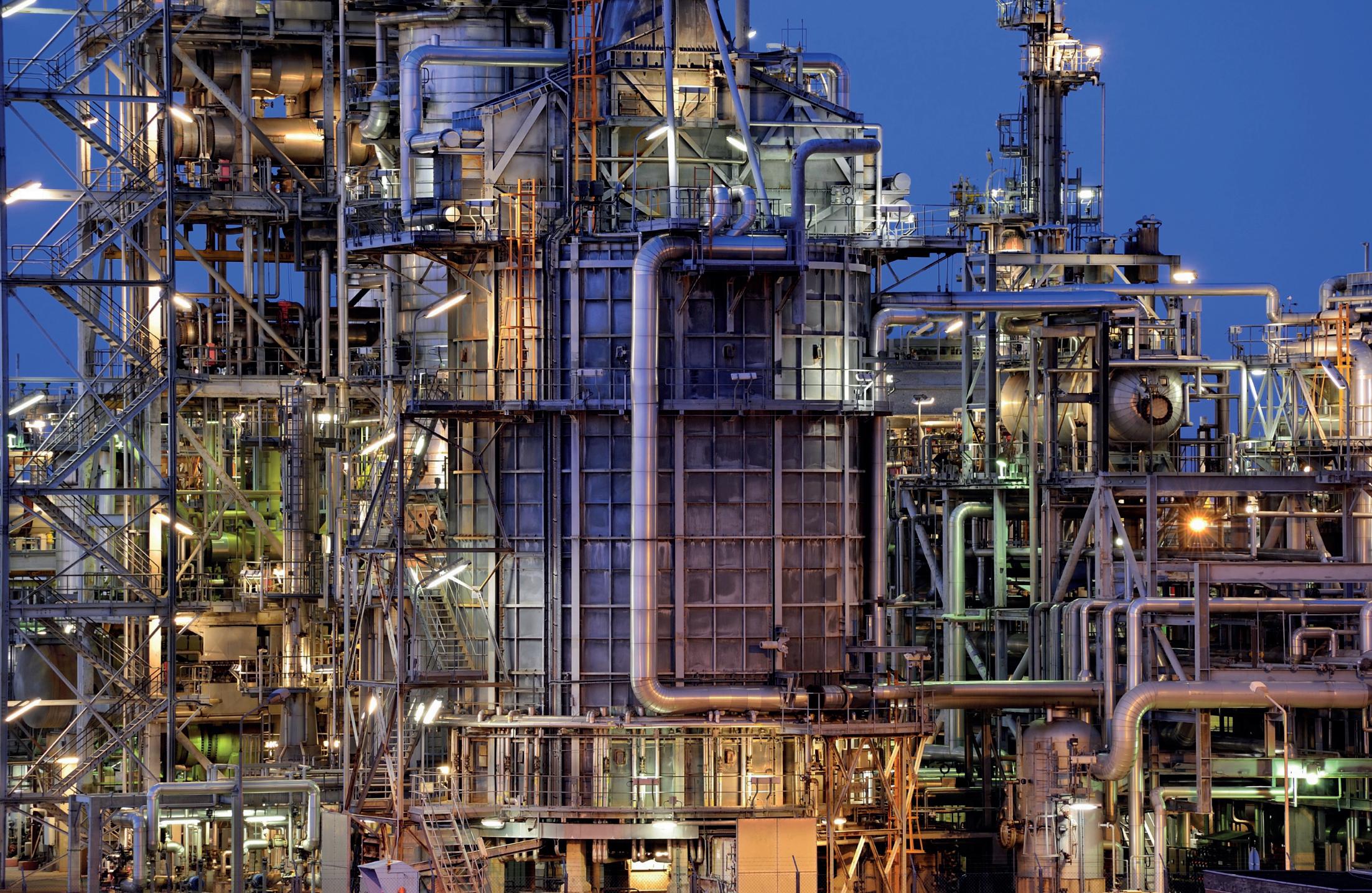



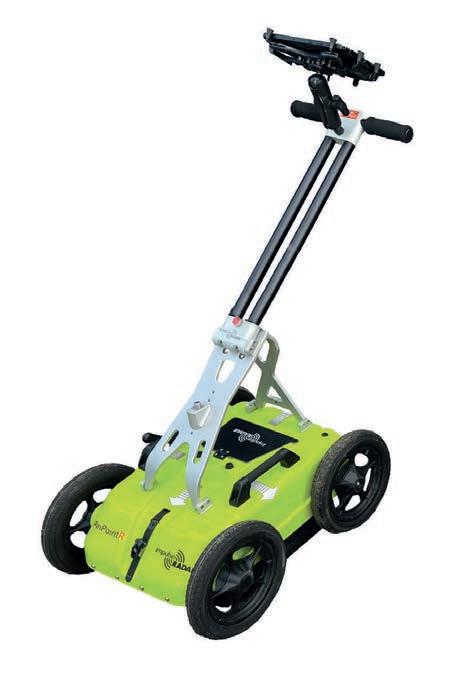

A simple operator Idea has sparked a global safety innovation. It has been more than a decade in development, but Mass Products has been at the forefront of this real-world solution.
What began as a modest idea from a Gold Coast eld operator in 2013 has grown into one of the water industry’s most in uential safety innovations. e Safe Access Maintenance grate, widely known as SAM, wasn’t created in a boardroom. It was born in the eld, by operators frustrated with unsafe, outdated requirements for working around manholes and con ned spaces. Mass e Safe Access People, the small Gold Coast company behind SAM, have taken on the role of continuous innovator improving, testing, and evolving operator-led ideas into a world-ready engineered solution. SAM’s development re ects a rare commitment to frontline reality rather than administrative theory.
SAM’s origin began when a City of Gold Coast operator approached Mass, seeking a circular grate to t over common manholes. Operators accessed multiple assets per day, but harness systems were impractical, slow, or impossible to tie o safely. ey needed a simple, lightweight engineered barrier to prevent falls while allowing work to continue safely. at request sparked a decade-long evolution.
2014:
e City of Gold Coast initiated a formal collaboration with Mass to re ne the grate. e next major advancement was adding a slot, allowing the grate to protect workers above while preventing tools, debris, and objects from falling on


personnel below. Workplace Health and Safety o cers soon con rmed that once the grate was installed, a full con ned-space setup was no longer required. is eliminated the need for harness systems, a three-person crew, and about $500 worth of equipment per job. Operator risk decreased, and productivity improved.
Operator feedback led to the addition of a half-opening door in the grate. is feature allowed tools, CCTV equipment, and drain-cleaning gear to pass through the grate without removing it—transforming how maintenance activities were conducted.
Sydney Water took the innovation to the next level— literally bringing every type of manhole cover and frame they worked with daily to Mass’s facility for a weeklong, hands-on prototyping sprint. It was an intense collaboration that pushed the design further than ever before.
Key upgrades included:
• A nylon roller to protect sensitive CCTV cables and hoses
• Compatibility with multiple manhole sizes, including the notoriously tricky triangular frames
• A sacri cial pinch-weld strip to safeguard high-value equipment during use e result? A universal, eld-tested design that didn’t just impress—it became mandatory across Sydney Water’s entire network, with over 250 units deployed. is partnership didn’t just improve safety gear—it rede ned what utility-led innovation can achieve.
Fleet managers requested a SAM version that t smaller modern vehicles. Mass responded by developing a foldin-half grate o ering the same protection with greater portability.
SAM made its international debut at two of the world’s biggest water industry events—IFAT in Germany and WEFTEC in New Orleans—where it quickly turned heads and sparked global interest. Riding the wave of enthusiasm, Mass teamed up with U.S.-based Halliday Products to tailor a version speci cally for American utilities. By 2019, SAM had o cially entered production in the United States, marking a major milestone in its global journey.
2021: Solving high-pressure jetting risk
When Veolia Brisbane approached Mass with a tough challenge—could SAM withstand the intense forces
of high-pressure jetting?—it pushed the team into new territory. While the existing grate was more than capable for low-pressure plumbing, high-pressure systems came with strict Australian safety regulations, requiring full water containment and anti-withdrawal compliance. Rising to the occasion, Mass launched into extensive R&D and real-world testing. e result? A world- rst engineered safety solution that met every requirement— tackling one of the most hazardous routine maintenance tasks in the water industry head-on.
is high-pressure SAM version was nominated as a nalist at the Australian Water Association Safety & Innovation Awards. ough it did not win, Mass’s joint venture product “Lock It Out,” developed with Logan Water and Downer, won the award. is device introduced a new method to safely isolate sections of the water network.
e next chapter is all about global standardisation and advancing a lightweight, recycled-plastic version of SAM, tailored speci cally for CCTV inspection work. But
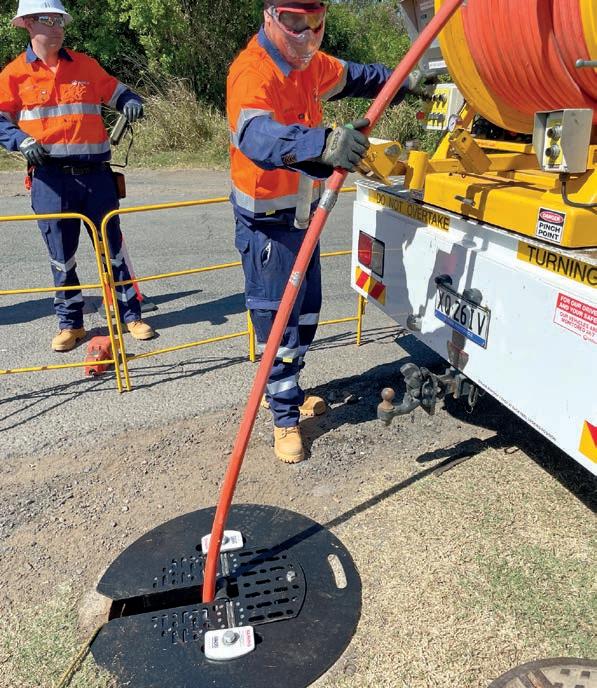

most importantly, future innovations will continue to be shaped by the same driving force that started it all— feedback and insight from the operators out in the eld.
SAM has done more than improve safety—it’s transformed how safety is understood and applied in the eld.
Across Australia, many operators still face risky conditions: tying o to objects never meant for fall restraint, working beside open manholes, and relying on layers of paperwork instead of practical safeguards. ere’s o en a gap between what safety policies say should happen and what actually does happen on the ground.
SAM bridges that gap. It replaces ropes, exclusion zones, and harnesses—which are o en di cult, impractical, or even non-compliant—with a simple, engineered barrier that meets safety legislation while tting seamlessly into everyday operations.
SAM isn’t about theoretical safety. It’s about real-world safety—a physical solution that replaces administrative controls with something tangible, e ective, and easy to use.
For the rst time, operators can maintain critical underground infrastructure with gear that’s built by operators, for operators—keeping crews safe, e cient, and con dent on every job, every day. U


Across construction, engineering,and infrastructure, ARKANCE helps industry leaders connect every part of their digital ecosystem. From design to delivery, we unify data, workflows, and teams across leading cloud platforms, turning complexity into clarity. Backed by hundreds of specialists worldwide and a strong local presence, we help you get the most from your technology investment and build smarter, more connected projects.
Book a free Consult with an ACC Expert.
Explore our Autodesk Construction Cloud solutions and start your digital transformation today.
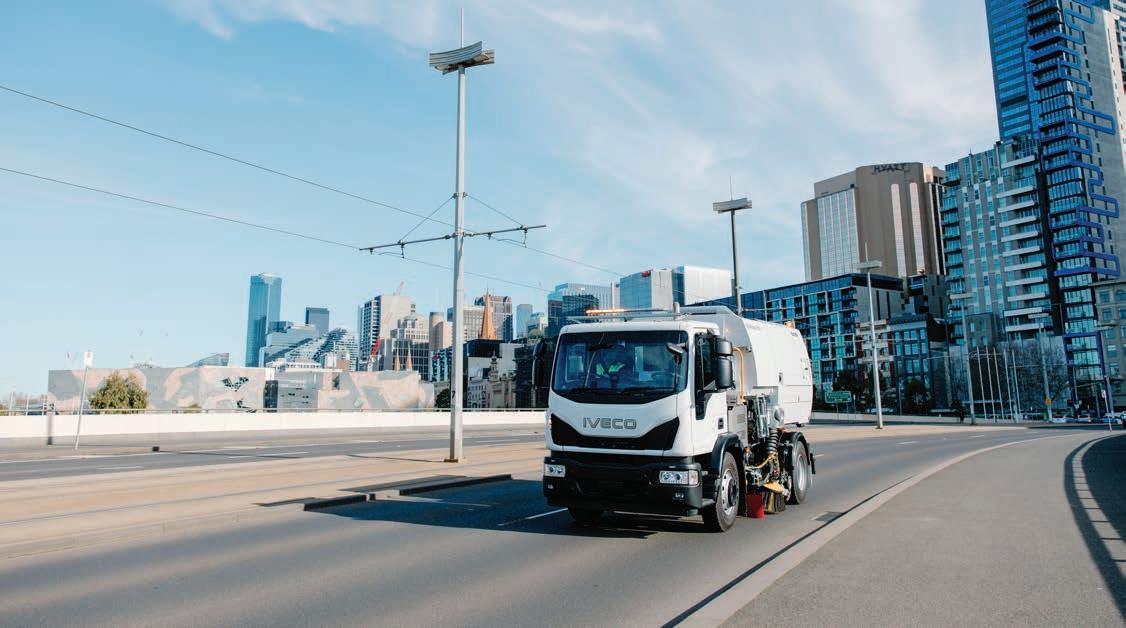
Compliance starts with engineered solutions and Bucher has the answers.
For municipal sweepers, water jetters and refuse trucks, compliance decisions start early: choosing a chassis that meets ADR timing, then pairing it with an engineered body solution certi ed under VSB6.
e problem for the industry is the fact several imported cab-chassis long favoured for sweepers will become non-compliant through 2025, with Euro VI and AEB requirements coming into e ect.
Bucher’s approach is to bring the whole chain together. On sweepers, the company speci es Euro VI- and AEBS-equipped platforms like IVECO Eurocargo, then deliver the dual-steer conversion and body integration through an engineering process designed around VSB6 Section J and chassis manufacturer limits. On refuse, it designs subframes and mountings for NHVR/VSB6 compliance, balancing load and protecting chassis rails under dynamic compaction forces. For councils and contractors, the result is traceable compliance, with local support and service.
Providing utility vehicles like sweepers to a fast-moving regulatory market has always had some singular challenges but, as Bucher Head of Engineering Andrew Mitchell said, this was a challenge his team was up to, not only meeting the new demands of compliance but delivering the best available equipment.
“In Australia, we need to mount it to a suitable chassis and that means dual steer,” Mitchell said.
“We must have a product that enables customers to drive from the le -hand side of the vehicle, and this is driven by public and operator safety. It also helps ensure no damage is
done to council property or structural assets, including the sweeper itself.
“But we can’t bring in le -hand-drive only. From Australian regulation, you cannot drive le -hand side in transit mode, so that’s why we need dual steering.”
For more than 70 years, Bucher has been creating solutions for a wide range of clients, including councils who need these vehicles as part of their standard operation.
But the dilemma took on a new urgency when the government escalated its mandatory regulations, including the Euro VI standard along with other critical safety standards such as mandatory automatic emergency braking system. Bucher was confronted with the challenge of nding a chassis that met the new regulations but also o ers a total sweeper package that would meet the high demands of clients like councils and be the optimal product for their workers to be driving.
e staggered dates of these new regulations created its own challenges. While some existing products that were already imported prior to the regulation were available, stocks were running low. With many major clients facing regular upgrade schedules for their equipment eets, continuing with the old options was no longer viable.
“So that’s made it very challenging for the industry, “ Mitchell said.
“ e autonomous emergency braking was the element that stopped importation of any vehicle that didn’t have it, and most Euro V standard vehicles didn’t have it.”
But added to the pressing compliance deadlines was the fact the new regulations had signi cantly narrowed the eld of choices and existing vehicle suppliers were not able to meet these compliance dates with their products.
So Mitchell and his team went to work to distinguish what was available and how to make it work for Australian clients.
Mitchell was initially surprised at the number of clients who were not fully aware of the new levels of legislative requirements and who sometimes questioned the need for change, but as they began to understand the new standards, this added to the sense of urgency for a solution.
“We quickly identi ed we needed something,” he said. “ e deadline was we need something fully nished and compliant by Q4 2025 and the choice was quite limited, and it quickly came down to one maker, which is why we chose the Iveco Eurocargo.”
is shortlist was also complicated for Mitchell and his team due to limitations on what parts of the vehicle could be adapted for the local market.
“We are no longer able to relocate Euro VI systems. I need to have written support from OEMs [original equipment manufacturers] and it needs to go through signi cant testing, which is not feasible,” Mitchell said.
“So we chose a chassis that comes out of the factory sweeper packed. e UK team at Bucher worked closely with a few OEMs and developed a number of speci cations across di erent brands of chassis that suit di erent sweeper sizes.
ey have a package where all the exhaust, air tanks, fuel tank batteries are out of the way, already fully in place from the chassis manufacturer.”
e added insight of the UK engineering team then gave Mitchell and his team options to deliver the best outcomes for Australian clients.
“It was a decision we had to make very strategically,” he said. “We wanted it to be ready for the market and with maximum driveability. What we’ve chosen is a chassis that has the shortest wheelbase in class in Australia for ease of access and good access into sweeping, particularly in tight areas around cars and in cul de sacs. e sweep gear is in a position that optimises that performance.”
e next step was adapting the model to ensure it was the best outcome for the clients and the drivers.
“ ey need to do a job and ultimately, this is their o ce for up to eight hours a day,” Mitchell said.
e European cabs di ered signi cantly from the Japanese equivalents, and while there appeared to be slightly less room, doing away with o en unused space, like the comfort bench and taking a more adaptive and innovative approach to the cabin space, yielded a better result.
“ e mandate that I sent to the team was they needed to provide a dual steer package, installing and tting out the sweeper controls that made the cabin still feel safe and spacious,” Mitchell said. “ e design needed to be minimalistic but still provide the operators all the creature comforts, such as for their phone, lunch storage, drink holders and space for paperwork. e screen also needed to be positioned for optimal ergonomics without a ecting visibility or access to existing cab controls. at was all part of the mandate.”
Despite some resistance in the industry toward the regulatory change and surprise at the proactive approach Bucher took in meeting the challenge, the company is winning over new support as clients look closer at the overall bene ts of the solution.
“I think this is because we’ve been able to achieve what we set out to do,” Mitchell said. “We’ve overcome the limitations of what they might have perceived the product o ered, and have given them more bene ts from a comfort and operational perspective.”
For this reason, the marketing of a new product has been important, with Bucher undertaking multiple launches where a key part of this has been to enable potential clients and operators to get up close to the vehicles.
“ e demonstration units we have built are to provide customers and operators the ability to see and trial them rst hand,” Mitchell said. “We are trying to do as much promotion as possible for local councils and contractors and really get it out there.
“ e change from Japanese chassis to this new Iveco is a big change for this market, so we need people to be aware, and be able to touch and feel it.”
Across an industry, the wider regulatory changes have had di erent reactions ranging from surprise, shock and a degree of reluctance. Some have said they will wait for other OEMs to develop compliant products, but Mitchell said the fact there is no certainty as to when this will occur, means such an approach could leave them in an even more di cult dilemma. is is why Bucher put in the investment and e ort to taking the lead and developing an industry-ready solution.
“People are starting to accept that they need to change,” Mitchell said. “When you start to talk to people for a while and they get over that shock, they realise that’s the way it is.”
“And I’ve had comments from quite a few customers who think we are on a winner.” U
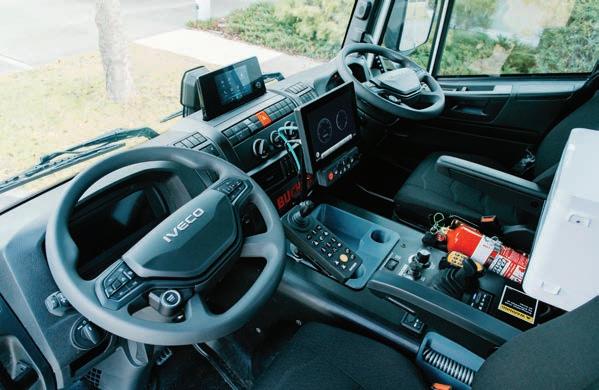
Clever design and ‘creature comforts’ have maximised the interior of the Iveco Eurocargo application.

Utility crews can’t a ord poor connectivity when responding to safety critical incidents, so when Hydro Ottawa’s in-vehicle connectivity solution became increasingly unreliable, the utility sought a new hardware that could survive the harsh environment.
Utilities operate where the weather, geography and urgency of the work leave no room for unreliable communications. Field crews depend on reliable connectivity to receive dispatches, access schematics and outage histories, record work and coordinate with control centres – o en while working in cold winters, blistering summers, or on rough roads.
For utilities, the network hardware that lives in service trucks and vans must be purpose-built for that reality: ruggedised, temperature-tolerant, and able to withstand
vibration, shock, dust and moisture while also being manageable remotely.
Hydro Ottawa Limited distributes electricity to more than 350,000 residential and commercial customers in Canada. e core businesses of the corporation are electricity distribution, renewable energy generation, and energy and utility services.
e utility’s initial consumer-grade in-vehicle connectivity solution became increasingly unreliable as the eet used it over several seasons. Hardware failures

and network downtime rose at a time when crews were relying on more devices and applications in the eld.
In a recent interview conducted by Ericsson for its customer case study, Hydro Ottawa said that it’s vital for their vehicles to have internet connectivity when sending employees to respond to outages and other problems during emergencies.
With seasonal extremes in Ottawa – big swings between summer heat and winter cold –were wreaking havoc on equipment not designed for those conditions, with Hydro Ottawa noting that 90 per cent of its network failure problems stemmed from the environment. e operational impact was compounded by the way issues were diagnosed and xed. With the previous solution, so ware updates and troubleshooting had to be performed manually, one vehicle at a time – an approach that is time-consuming and impractical as eets scale into the hundreds. Hydro Ottawa needed hardware that would survive harsh environments and a management model that allowed its lean IT team to monitor and remediate issues remotely.
e Hydro Ottawa case shows that combining ruggedised solutions like Ericsson Cradlepoint routers with remote cloud management delivers the reliability and operational e ciencies utilities need to keep crews connected, systems visible, and lights on “
Ericsson’s Cradlepoint line of ruggedised cellular routers provided the solution Hydro Ottawa required. Built speci cally for in-vehicle and eld deployments, the routers are engineered to operate across wide temperature ranges and to resist environmental stresses such as high humidity, dust ingress, and water splash. e designs also account for continual movement and physical shock, attributes that directly address the vibration and jostling encountered on utility service routes.
Beyond physical robustness, remote manageability is essential for utilities. Hydro Ottawa deployed Ericsson Cradlepoint routers together with high-performance external antennas across its eet of vans and trucks and adopted Ericsson’s cloud-based NetCloud Manager for centralised control. e cloud platform enabled the IT team to push rmware updates, monitor dashboards and generate reports remotely, and accelerate diagnosis and resolution of issues from anywhere with ease.
ey were able to determine whether an incident originated with Wi-Fi, a laptop, the carrier, the power supply or the router itself without sending a technician to every vehicle.
e results are instructive for other utilities. First, selecting industrial-grade, ruggedised routers reduces the frequency of hardware failures caused by climate and motion — the most common failure modes Hydro Ottawa experienced. Second, combining resilient hardware with cloud-based management reduces downtime and the operational burden on IT teams, allowing them to scale eet connectivity without linear growth in support costs. For utilities planning or refreshing mobile connectivity, several practical takeaways emerge from Hydro Ottawa’s experience:
• Specify ruggedisation and environmental ratings. Look for routers rated for wide operating temperatures, ingress protection against dust and water splash, and mechanical tolerance for vibration and shock.
• Use high-performance external antennas to maximise cellular signal quality in vehicles, where metal bodies and routing interference can otherwise degrade connectivity.
• Adopt centralised, cloud-based network management to push updates, view health dashboards, and troubleshoot remotely – turning what used to be a eld call-out into a few clicks from the operations centre.
• Consider lifecycle and total cost of ownership. Spending more on durable devices and remote management
typically reduces truck rolls, emergency replacements, and downtime during extreme weather events. Utilities cannot a ord intermittent connectivity when crews are restoring service or responding to safety-critical incidents. e Hydro Ottawa case shows that combining ruggedised solutions like Ericsson Cradlepoint routers with remote cloud management delivers the reliability and operational e ciencies utilities need to keep crews connected, systems visible, and lights on – even in the harshest conditions. U

The PL1500 is a gamechanger for pipeline construction. The unique, quick-hitch, vacuum lifter attaches to your existing excavator, reducing your machine hire cost and getting things moving fast. Capable of safely lifting 15,000kg, the heavy-duty, self-contained unit can handle all types and lengths of pipe. It integrates seamlessly with the host excavator, using the main controls and hydraulics to operate the vacuum lifter. Plus, built-in smart tech ensures it’ll only pick up or put down a pipe on a solid surface. That’s safer than many other vacuum lifters on the market. To find out more, speak to the Pipeline Plant Hire team today.

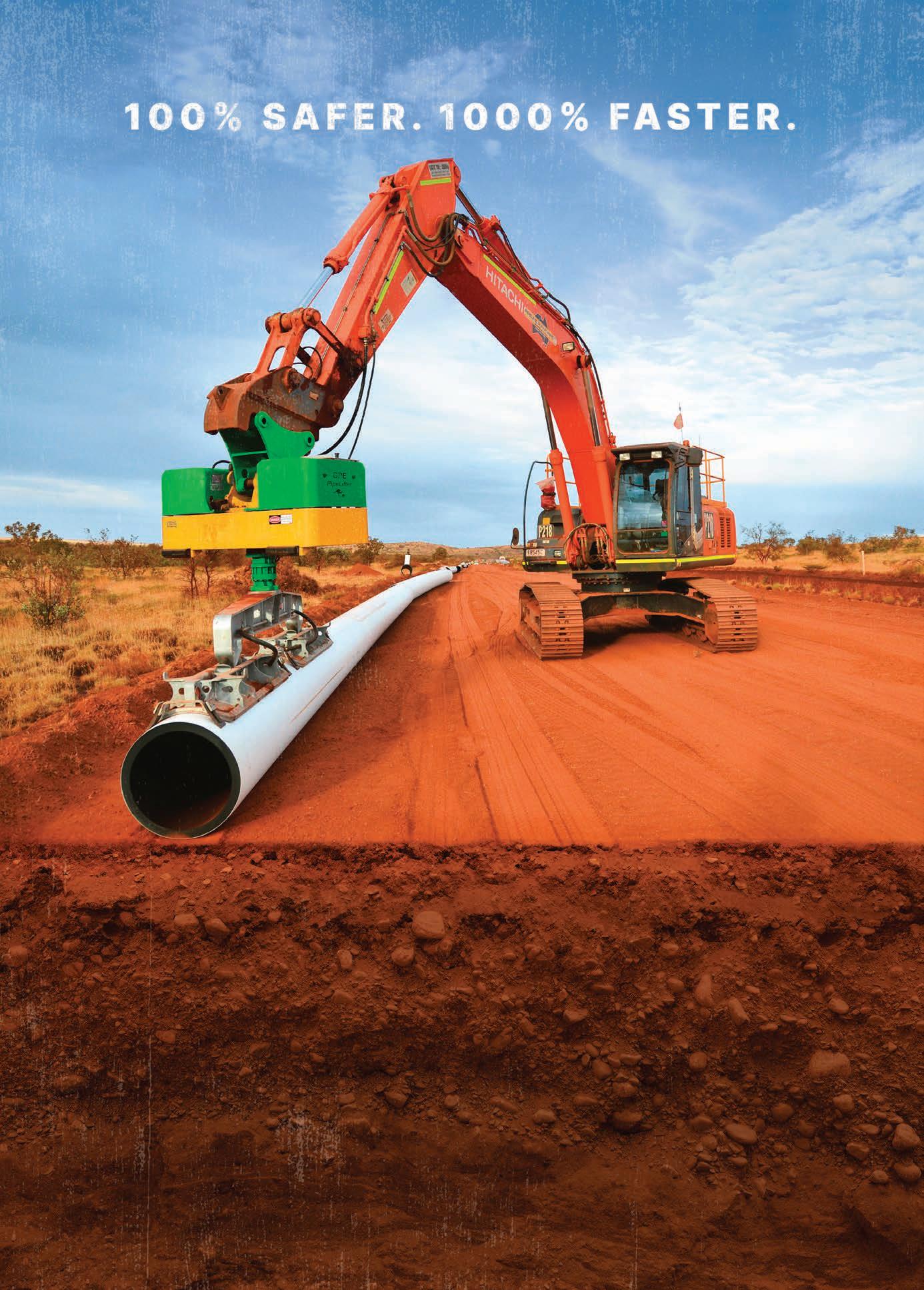

Australia’s second Bass Strait interconnector has reached decisive milestones. Here’s what’s being built, when it’s due, and why it changes the shape of our grid.
The project in one glance
Marinus Link is a high-voltage direct current (HVDC) electricity and data interconnector to be built under Bass Strait and underground in Victoria, delivered in two 750 MW stages for a total capacity of 1,500 MW. It will connect a converter station at Heybridge (near Burnie) to Hazelwood in the Latrobe Valley, via approximately 255 km of submarine HVDC cable and a further ~90 km of underground HVDC cable in Victoria. It also includes signi cant optical bre capacity, strengthening telecommunication connectivity between the states.
Stage 1 will use Hitachi Energy’s HVDC Light converter technology and Prysmian Powerlink cables, bringing advanced two-way power ows and grid-stabilising capability—an Australia- rst deployment of voltage-source converters at both ends to integrate large volumes of renewables.
Alongside the subsea interconnector, Tasmania’s North West Transmission Developments (NWTD) will upgrade the onshore AC network to support new interconnection and generation—together with Marinus Link, these works are o en referred to as Project Marinus.
Timeline: from planning into delivery
Early works & regulatory staging (2023–2024):
e Australian Energy Regulator (AER) approved early-works revenue for Stage 1, Part A in December 2023, nding planning costs “prudent and e cient” for design, environmental assessment, landowner engagement and procurement. is staged approach allows construction costs to be assessed separately under Part B.
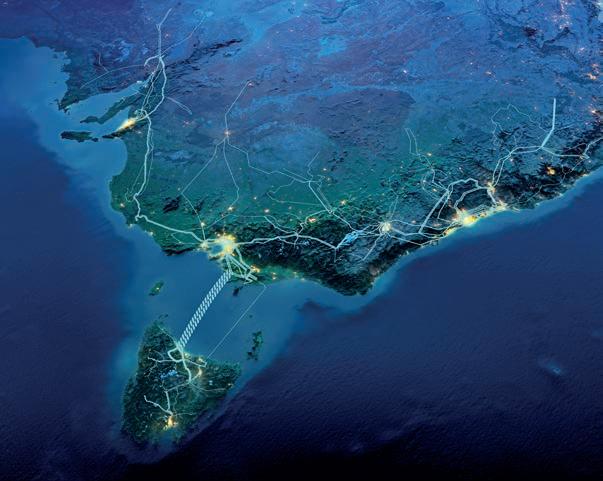
Tri-government ownership and major contracts (2024):
In 2024 Marinus Link transitioned to tri-government ownership (Commonwealth 49%, Victoria 33.3%, Tasmania 17.7%). e project then locked in Hitachi Energy for converter stations and Prysmian Powerlink for submarine and land HVDC cables—anchoring schedule certainty towards a 2030 completion.
Environmental approvals (2025):
In May 2025, the Victorian Minister’s assessment concluded the project could proceed with acceptable environmental e ects, subject to conditions. In August 2025, the Commonwealth granted approval under the EPBC Act, setting construction, operation and decommissioning conditions for protected matters; Tasmanian approvals are slated for late 2025.
Final Investment Decision (FID) & financing (August–September 2025):
On 1 August 2025, the Commonwealth, Victoria and Tasmania announced a positive FID for Stage 1, targeting construction in 2026 and completion in 2030. Shortly a er, nancial close was achieved with a record $3.8 billion concessional loan from the Clean Energy Finance Corporation (CEFC), enabling notices to proceed for Prysmian and Hitachi Energy and mobilising pre-construction activities.
AER cost assessment (2025–2026):
e AER took a two-step approach to Stage 1, Part B— an initial dra decision in May 2025 found cable and converter procurements prudent, with a supplementary dra decision now expected late-November 2025 and a nal decision due 6 February 2026, a er consultation on previously con dential elements (balance of works, support activities, risk allowance).
Construction & commissioning (2026–2030):
Marinus Link states Stage 1 construction will commence in 2026 and is scheduled to complete in 2030, aligning with the AEMO Integrated System Plan (ISP) call for urgent actionable transmission to replace retiring coal with renewables plus rming.
Recent updates you should know
• Final investment decision & EPBC approval (Aug 2025): FID con rmed Stage 1 delivery; EPBC approval imposes conditions for marine and ecological protection.
• Financing locked in (Sep 2025): CEFC’s concessional nance (expected $3.8 billion, nominal) completed Stage 1 funding; notices to proceed issued to technology suppliers.
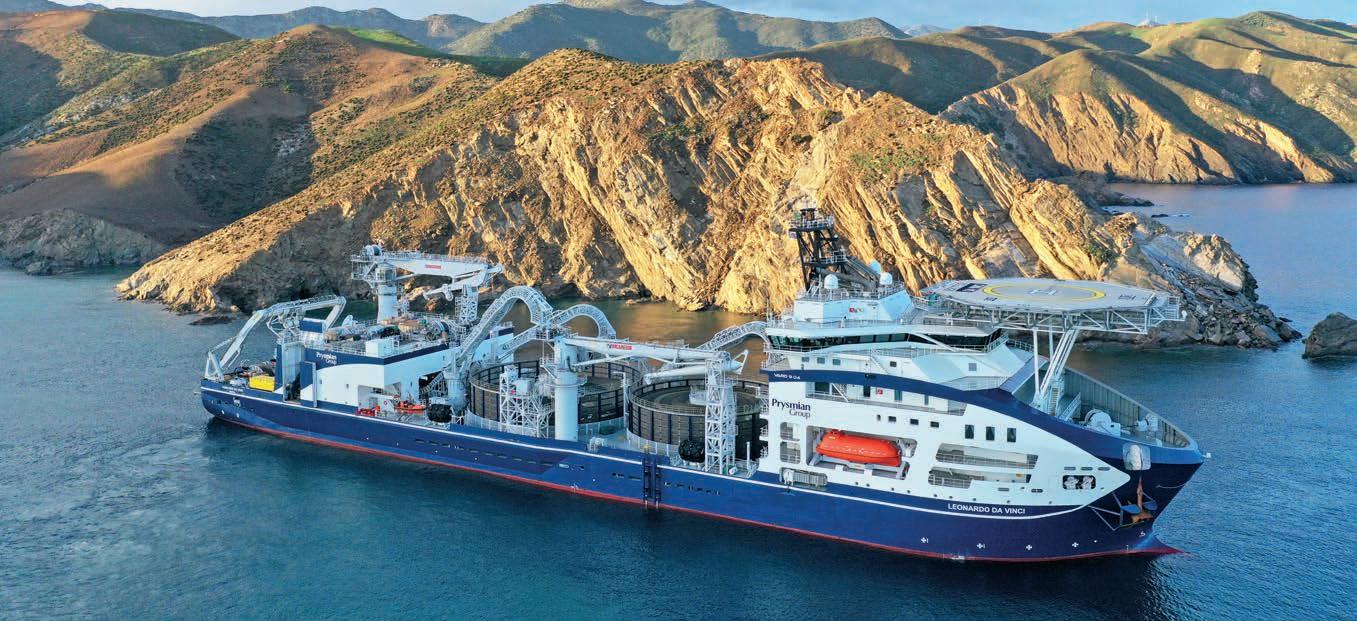


• Preferred onshore contractor (Sep 2025): Marinus Link announced a preferred joint venture for major works across North West Tasmania and Gippsland, narrowing balance-of-works delivery.
• AER process & transparency (Oct–Nov 2025): Updated revised proposals with unredacted gures are under consultation; supplementary dra decision now due late-November, with nal decision on 6 February 2026.
• Costs re ned (Oct 2025): An updated revenue proposal recorded a modest reduction (~$39 m) in Stage 1 forecast capex—small, but re ecting market-tested inputs and insurance adjustments.
What will be delivered— technically and geographically HVDC interconnector (Stage 1):
• Capacity: 750 MW (Stage 1), scaling to 1,500 MW with Stage 2.
• Route: ~255 km subsea HVDC cable to Waratah Bay and ~90 km underground to Hazelwood; converter stations in Heybridge and Hazelwood.
• Technology: HVDC Light (VSC) converters by Hitachi Energy; 320 kV single-core XLPE HVDC cables by Prysmian; permanent monitoring for interconnector integrity.
Telecommunications uplift: Marinus includes signi cant bre capacity, improving connectivity between Tasmania and Victoria—an ancillary bene t for communities and industry.
North West Transmission Developments (NWTD):
TasNetworks will deliver AC network reinforcements, ensuring Tasmania can integrate new wind and pumped-hydro schemes and export/import via Marinus. e Commonwealth announced $346 million support to protect Tasmanian consumers from network price impacts tied to NWTD delivery.
Governance, regulation and investment framework
Ownership and governance:
Marinus Link Pty Ltd (MLPL) is jointly owned by the Commonwealth, Victoria and Tasmania. is alignment
of jurisdictions supports disciplined delivery and a long-term approach to consumer bene ts.
AER determinations:
e AER approved early works (Part A) and is actively reviewing construction costs (Part B) via a transparent public process, including dra decisions and stakeholder submissions. is ensures consumers pay no more than necessary, while preserving delivery timelines for nationally signi cant transmission projects.
CEFC concessional finance:
Australia’s green bank has committed its largest-ever investment (expected $3.8 bn), structured to lower borrowing costs and reduce transmission-related consumer charges. MLPL estimates ~45% reduction in revenue requirements in the early regulatory period due to concessional nance and low-return equity, translating to bene ts for Tasmanian and Victorian bill-payers.
AEMO’s ‘actionable’ project for Net Zero In successive national plans, AEMO has identi ed Marinus Link as urgent and part of the lowest-cost pathway to decarbonisation—moving power between regions, rming variable generation, and unlocking deep storage. With coal retiring rapidly (up to 90% of NEM coal by 2035), interconnectors and storage are central to reliability and a ordability.
Battery of the Nation, unlocked
Hydro Tasmania’s Battery of the Nation vision pairs uprated hydro assets and pumped hydro (e.g., Lake Cethana 750 MW/20 h) with stronger interconnection. Marinus’ two-way HVDC enables Tasmania to import surplus solar during the day, reserve water and export green hydro at evening peaks—turning geographic diversity and long-duration storage into nationwide reliability.
Updated modelling by EY Parthenon and FTI Consulting (lodged with the AER) found market and consumer bene ts increased, including wholesale price reductions
across the NEM with Project Marinus in place. MLPL cites household bill savings of $25–$36 per year on average when accounting for network costs and concessional nance— gures consistent with submissions to AEMO’s 2025 IASR.
Economic development, jobs and regional uplift Governments and industry bodies point to multi-billion investment, thousands of jobs, and stimulus across Gippsland and North West Tasmania as Marinus moves into manufacturing and civil works. e Clean Energy Council speci cally welcomed CEFC’s funding as a key step to expedite wind development and two-way energy trade, while boosting bre capacity and digital connectivity.
Public debate and risk: what’s being managed
As with any nation-building transmission project, Marinus faces scrutiny around costs, environmental impacts, and delivery risks. AER processes have highlighted the split between market-tested contracts (cable and converters) and balance-of-works, with the latter subject to competitive tenders and updated forecasts before the supplementary dra decision.
Costs have evolved: a er sharp global in ation in cables and HVDC equipment, MLPL reported Stage 1 re ned costs of $3.89 bn for Marinus Link and $1.14 bn for NWTD (real $2023), with a subsequent ~$39 m capex reduction in October 2025 as insurance and hedging were updated. Media coverage has re ected community and political debate in Tasmania, but the regulatory and funding structures—EPBC conditions, AER determinations, and CEFC concessional debt—aim to balance risk and consumer outcomes.
With nancing, environmental approvals and major contracts now in place, MLPL is mobilising for construction in 2026, progressing detailed design and

early site works at Heybridge and along the Waratah Bay–Latrobe Valley land route, including shore-crossing HDDs and converter station civil packages. AEMO’s feedback-loop and AER’s February 2026 nal decision will close remaining regulatory steps, while TasNetworks advances NWTD enabling works to synchronise with HVDC commissioning.
Stage 1 delivery by 2030 positions Marinus to coincide with high-impact coal retirements, maximising the value of inter-regional transfer and long-duration storage.
Stage 2 remains in scope and subject to future market conditions, regulatory approvals and funding pathways; however, technology contracts and bre capacity are already framed with a two-stage build in mind.
1. AER’s supplementary dra decision (Nov 2025) and nal decision (Feb 2026). ese will lock in Stage 1 construction allowances and risk frameworks—key for understanding pass-throughs, consumer impacts and timelines. [aer.gov.au]
2. Tasmanian approvals and NWTD sequencing. Final primary approvals in Tasmania are expected late 2025; the Commonwealth’s $346 m support for TasNetworks indicates strong alignment to deliver local upgrades without undue bill pressure.
3. Supply-chain mobilisation. Notices to proceed have activated Prysmian’s manufacturing backlog and Hitachi Energy’s converter designs—watch factory slots, cable lay vessel scheduling and onshore civil procurement, especially in 2026–27 windows.
4. Integration with Battery of the Nation. e value of Marinus hinges on dispatchable hydro/pumped hydro capability and new wind in Tasmania—projects like Lake Cethana and Tarraleah upgrades are the system partners to convert energy diversity into reliability and price impacts.
Australia’s transition requires more transmission, more storage, and more interconnection. Marinus Link is a rare project that does all three: it moves renewable energy where and when it’s needed; rmed by deep hydro storage; and stabilised by HVDC converters designed for a renewable-heavy grid. AEMO’s ISP calls it urgent, and governments have now backed that urgency with approvals, funding and ownership.
By 2030, Stage 1 aims to provide the equivalent supply for 750,000 homes, strengthen the NEM’s resilience at dusk peaks and winter calm, and put downward pressure on wholesale prices—all while modernising a critical piece of national infrastructure. In short, Marinus Link connects Australia’s energy future across Bass Strait, making diversity a resource rather than a constraint. U




If you’re seeking a reliable, scalable solution for managing your trade fleet needs, Enviroline is your partner in delivery. We help fleet managers minimise complexity, improve rollout timelines, and ensure every vehicle meets your standards for performance and presentation.

Hydroelectricity has powered Australian industry, irrigated inland agriculture and—more recently—become the backbone of long-duration storage for a renewable grid. This feature traces hydro’s history, explains how it works, maps today’s projects and previews what’s coming next.
A brief history: from early stations to nation-building works
Hydroelectric generation in Australia dates back to the late 19th and early 20th centuries, with municipal and industrial plants such as Duck Reach (Launceston, 1895) and Lake Margaret (Mount Lyell, 1914) among the rst to harness river head for electricity. In 1914 the Tasmanian Government created the Hydro-Electric Department— later the Hydro-Electric Commission—building Waddamana (commissioned 1916) and setting foundations for Hydro Tasmania’s modern eet.
Post-war reconstruction brought Australia’s most ambitious energy and water project: the Snowy Mountains Hydro-Electric Scheme. Legislated by the Commonwealth in July 1949 via the Snowy Mountains Hydro-Electric Power Act, construction spanned 25 years and mobilised more than 100,000 workers from over 30 nations. e scheme delivered seven power stations, sixteen dams, a pumping station and 225 km of tunnels, pipelines and
aqueducts, diverting alpine ows west for irrigation while providing peak power for NSW, Victoria and the ACT. It quickly became a national milestone and remains a pillar of both electricity reliability and inland water security.
From the 1930s to the 1990s, Tasmania’s Hydro continued expanding dams and stations across rugged terrain—culminating in landmarks like the Gordon Dam (1974) and a 30-station network supplying clean power. Environmental debates, notably the Franklin River campaign (early 1980s), marked the shi towards balancing development with conservation; even so, Tasmania’s hydropower legacy endured and today forms Australia’s largest renewable generation portfolio
How hydro works—and how pumped storage turns water into a battery
Conventional hydro plants convert the potential energy of stored water into electricity: ow from an upper reservoir passes through penstocks to turbines and generators,
producing dispatchable power at short notice. Pumped hydro energy storage (PHES) adds a second (lower) reservoir and reversible pump-turbines. When demand and prices are low—o en when solar is abundant—electricity pumps water uphill; when demand peaks or wind and solar dip, the plant generates by releasing water downhill, delivering long-duration, high-capacity rming.
Government guidance emphasises PHES as the most mature bulk storage technology, capable of adding dispatchable capacity, reducing blackout risk and stabilising the grid with inertia and voltage support. Australia’s agship PHES project Snowy 2.0 will connect Tantangara and Talbingo reservoirs via a ~27 km tunnel, adding 2,200 MW and ~350,000 MWh of storage—long enough to run at-out for more than a week—on track for full commercial operation by December 2028.
e Integrated System Plan (ISP) by AEMO depicts storage—shallow, medium and deep—as central to retiring coal at least cost. By 2034–35, the ISP forecasts the NEM will need ~36 GW/522 GWh of storage, rising to ~56 GW/660 GWh by 2050; pumped hydro is highlighted as a key contributor to deep storage alongside batteries.
Hydroelectricity’s share of total generation varies with rainfall, dam levels and market dynamics, but long-term national datasets a rm hydro as a stable 5–7% of electricity. Recent reports and tables in the Australian Energy Statistics and ABS Energy Account track hydro’s role and rising renewable extraction: in 2022–23, renewable energy extraction (hydro, solar, wind) rose 12% to 325 PJ, re ecting stronger ows and capacity. For system-wide context, NEM demand and generation charts published by the AER provide annual pro les by state.
Tasmania remains Australia’s hydropower heartland. Hydro Tasmania owns ~54 major dams and ~30 hydro stations with >2,290 MW of capacity, producing roughly 8,800–9,000 GWh annually depending on in ows— supporting local demand and exports via Basslink, and ultimately via Marinus Link.
On the mainland, Snowy Hydro’s original scheme provides fast-start dispatchable capacity and irrigation releases; New South Wales also hosts Shoalhaven PHES (Origin Energy) with 240 MW combined generation/ pumping capability across Kangaroo Valley and Bendeela stations. While a proposed expansion of Shoalhaven was withdrawn in June 2025 due to market conditions, the existing assets continue to provide peak support.
Queensland’s operational Wivenhoe pumped hydro sits near Brisbane, and the state is assessing future long-duration storage amid policy adjustments: the Pioneer-Burdekin mega-scheme was scrapped in November 2024, with focus shi ing to smaller PHES and the Borumba project (proposed 2 GW/48 GWh near Imbil), which remains in the EIS process and early works planning.
Projects under construction and in the pipeline
Snowy 2.0 (NSW): deep storage cornerstone Despite challenges common to global megaprojects— geology, tunnelling logistics and cost resets—Snowy 2.0 has continued to make tunnelling progress, adding a fourth TBM to de-risk the Long Plain Fault Zone. As of late-2024/2025, Snowy reported 60–67% overall progress, with completion targeted for end-2028 and 2,200 MW/350 GWh performance. Independent reassessments of contractor costs are underway; the Australian National Audit O ce has commenced a performance audit of contract resets and value-for-money. e policy case remains: long-duration storage to rm renewables, displace gas peaking and stabilise the NEM.
Kidston Pumped Hydro (QLD): mine-site repurposing e Kidston PHES (Genex) is Australia’s rst to repurpose a former gold mine, delivering 250 MW/2 GWh of storage with strong grid services; it features in ARENA’s portfolio of supported storage projects and in industry snapshots of the PHES pipeline.
Borumba PHES (QLD): long-duration option e Borumba project proposes ~2,000 MW for up to 24 hours (48 GWh), requiring new upper reservoir, tunnels and underground powerhouse. It has coordinated project status in Queensland and active EPBC referral; a dra EIS is being prepared and early works activities are reported. Government oversight moved to QIC in June 2025, with a refreshed business case due mid-2026.
NSW WaterNSW program: multiple PHES sites e NSW Government’s Pumped Hydro Roadmap and WaterNSW Renewable Energy and Storage Program aim to unlock long-duration projects on dam estates. ACEN’s Phoenix PHES (Burrendong) won a landmark long-duration storage tender, securing an LTESA for 800 MW with up to 15 hours storage (11,900 MWh); WaterNSW has also shortlisted dams (Blowering, Burrendong, Hume) for private PHES development, and AGL has acquired Glenbawn and Glennies Creek projects (combined ~1,393 MW).
Hydro Tasmania: upgrades and new pumped hydro Hydro Tasmania’s Tarraleah redevelopment is scoped to double capacity and modernise assets for exible operation. e proposed Cethana pumped hydro would add ~750 MW and up to 20 hours deep storage to anchor Battery of the Nation, contingent on market and interconnection. ese projects align with AEMO’s ISP emphasis on deep storage and Tasmania’s export of rming via Marinus Link.

Shoalhaven (NSW): maintain and optimise
While Origin withdrew the EIS for a new ~235 MW unit expansion in 2025 given pricing and construction market headwinds, it continues to operate and maintain the Shoalhaven PHES, completing major overhauls in 2023–24 to sustain availability.
Why hydro still matters: reliability, water and regional development
Hydro’s dual role—electricity and water—has shaped Australian prosperity. e Snowy Scheme secured reliable peak power and about 2,100 GL/year inland water ows for irrigated agriculture; Tasmania’s hydro system catalysed industry, jobs and regional townships. As climate variability increases, managing storages for both energy and water is an ongoing operational and policy task.
In the modern grid, hydro provides fast ramping, system strength and black-start capabilities, while pumped hydro is the cost-e ective route to long-duration storage—meeting extended evening peaks, multi-day renewable droughts and seasonal shi s. AEMO’s ISP underlines that storage (including PHES) is the lowest-cost path to replace coal; Commonwealth guidance points to PHES (Snowy 2.0; Battery of the Nation) as central to reducing price volatility and keeping the lights on.
Economic co-bene ts follow construction: Snowy 2.0 employs about 3,000 workers across tunnelling and underground station builds; state programs (NSW WaterNSW; QLD Borumba) target regional jobs, procurement and training. Clean Energy Council reports track the investment wave in generation and storage, while emphasising that renewables backed by storage provide the lowest-cost reliable power.
Challenges and what to watch
No single technology is a panacea. Hydro depends on hydrology; PHES requires capital, careful environmental approvals and grid connections. Snowy 2.0 has faced resets and safety pauses, with cost reassessment underway; policymakers and regulators (AER, ANAO) scrutinise delivery and value-for-money. Queensland’s shelving of the Pioneer-Burdekin mega-scheme illustrates the need to match project scale to system needs, community licence and funding models; conversely, Borumba and NSW PHES show that targeted long-duration storage remains policy priority.

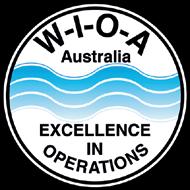
25 & 26 MARCH
BENDIGO, VICtoria



Utility rounds up the key appointments, resignations and other sta changes within the sector.
Barwon Water’s longstanding Chair Jo Plummer, has stepped down, and the utility has unveiled it’s new chair.
A er two years as Deputy Chair, Peta Maddy has been appointed to lead the new-look board. Ms Maddy has been on the Barwon Water board since 2021, serving as the Deputy Chair and the Chair of Barwon Asset Solutions since early 2024.
Sydney Water appointed new Managing Director Darren Cleary in September following the departure of former Managing Director, Roch Cheroux. e former Hunter Water Managing Director emerged as the clear candidate to lead Sydney Water. Mr Cleary will begin in the role from 17 November 2025, bringing with him a new era of strategic planning and delivery for Sydney Water.
Hunter Water has appointed a new Chair to its Board of Directors, following the departure of Geo Crowe in June 2025.
Elizabeth Crouch commenced in the role for a threeyear term from September 2025, and brings extensive experience across the public, private and not-for-pro t sectors, with a distinguished career in governance, infrastructure and public policy.
Ms Crouch currently chairs the boards of the Customer Owned Banking Association, the Sydney Children’s Hospital Network, Hearing Australia, Ochre Health and Catholic Schools Parramatta Diocese Ltd, and is the Emerita Deputy Chancellor of Macquarie University.
Barwon Water has welcomed three new directors to its board. Kate Gri ths, John Mitchell and Madeline Old eld joined the board, which comprises nine nonexecutive directors and Managing Director Shaun Cumming.
ey replace Ann Lansberry (eight years) and Nik Devidas (four years), who have completed their service.
Marie Jordan, Executive GM of Network, will retire at the end of 2025. She played a pivotal role in Australia’s renewable energy transition and grid reliability. Her departure marks the end of a 40-year career in energy systems.
David Feeney was appointed Executive GM, Transmission & Distribution Networks, and Michael Bradley as Acting Executive GM, Retail & Wholesale Markets.
Nicola Falcon has assumed the role EGM System Design. Kirsten Rose joins as EGM Western Australia & Strategy. Greg Medcra was appointed Chair of AEMO Services Limited.
CS Energy
Brian Gillespie has taken up the role of CEO. Gillespie previously led Orica’s Latin America operations.
Matthew Currie has taken up the role of Chief Operations & Construction O cer AGL. Other appointments include David Moretto (Chief Commercial O cer), and Ryan Warburton (Executive GM, Strategy & Sustainability).
Origin Energy
Fiona Hick and Stephen Mikkelsen were appointed as Independent Non-Executive Directors. Both bring extensive experience from Woodside, Fortescue, AGL, and Snowy Hydro.
Clean Energy Council
Jackie Trad has taken up the role as CEO of the Clean Energy Council.
Australian Energy Producers
Samantha McCulloch continues as CEO, actively engaging in national energy policy and advocating for investment in gas supply.
A new General Manager is leading Downer’s Water Operations aimed strengthening operational leadership in the water sector.
Energy Networks Australia
Dominic Adams was promoted to Chief Operations O cer. He was previously Head of Networks.
Smart Energy Council
Nigel Morris was appointed Chief Strategy O cer in September. David McElrea was appointed Chief Advocacy O cer. ese appointments re ect a strategic shi in leadership.
Greater Western Water
Craig Dixon was appointed Acting Managing Director, bringing extensive executive-level experience across utilities, industrial and FMCG sectors. U
Water shapes our lives and landscapes. However, extreme weather and rising demand pose challenges to both that must be answered. From storm and drought resilience to safe drinking water, whole ecosystems and communities rely on the effectiveness of infrastructure and the work of its designers, engineers, builders, and operators.
Water distribution: Maximise water quality and efficiency while minimising leaks with intelligent network design capabilities, accurate hydraulic modelling, and predictive network monitoring and analytics.
Storm and flood: Combine hydraulic simulations and predictive monitoring to forecast how your system will respond to varying conditions and inform decision-making around capacity fluctuations, system expansions, site-design, and emergency planning.
Treatment plants: Efficiently design treatment plants and create digital twins that streamline operational and compliance challenges at scale. Use sensor data to optimise plant performance and inform decision making.
Wastewater collection: Evaluate risk, improve precision in catchment design, and simulate hydraulic dynamics for urban planning—so you can justify capital spend in areas like capacity improvement.
Operation and maintenance: Extract actionable insights from SCADA and IoT data. Visualise them and disperse them to relevant stakeholders quickly and efficiently, enhancing efficiency and compliance outcomes for your water infrastructure.
At Autodesk, we equip the water industry with the solutions needed to make the best decisions possible at every stage of a water asset’s lifecycle.
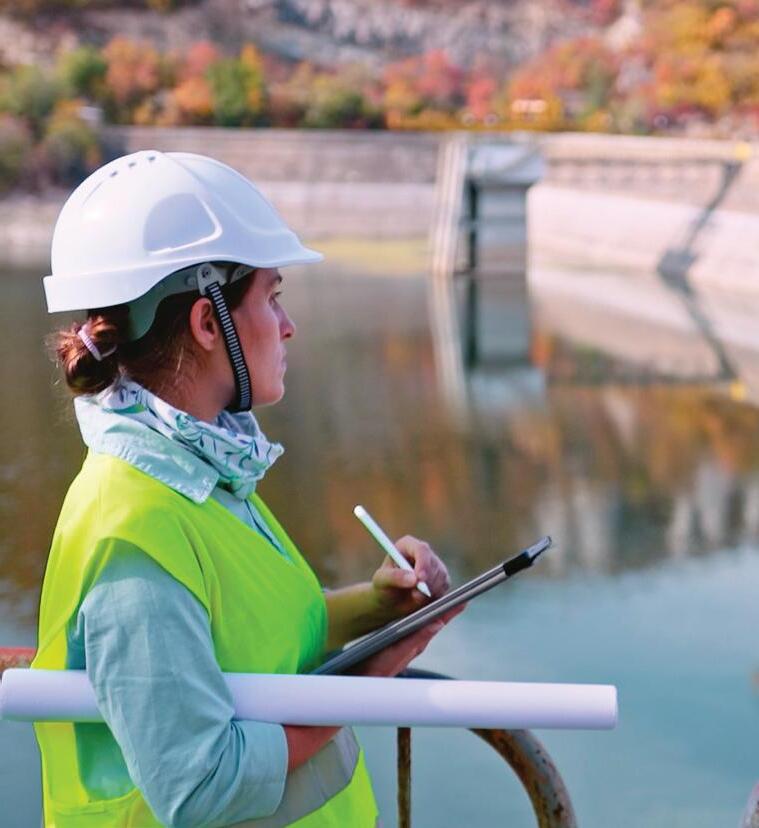

Discover how digital transformation is driving the water industry forward.

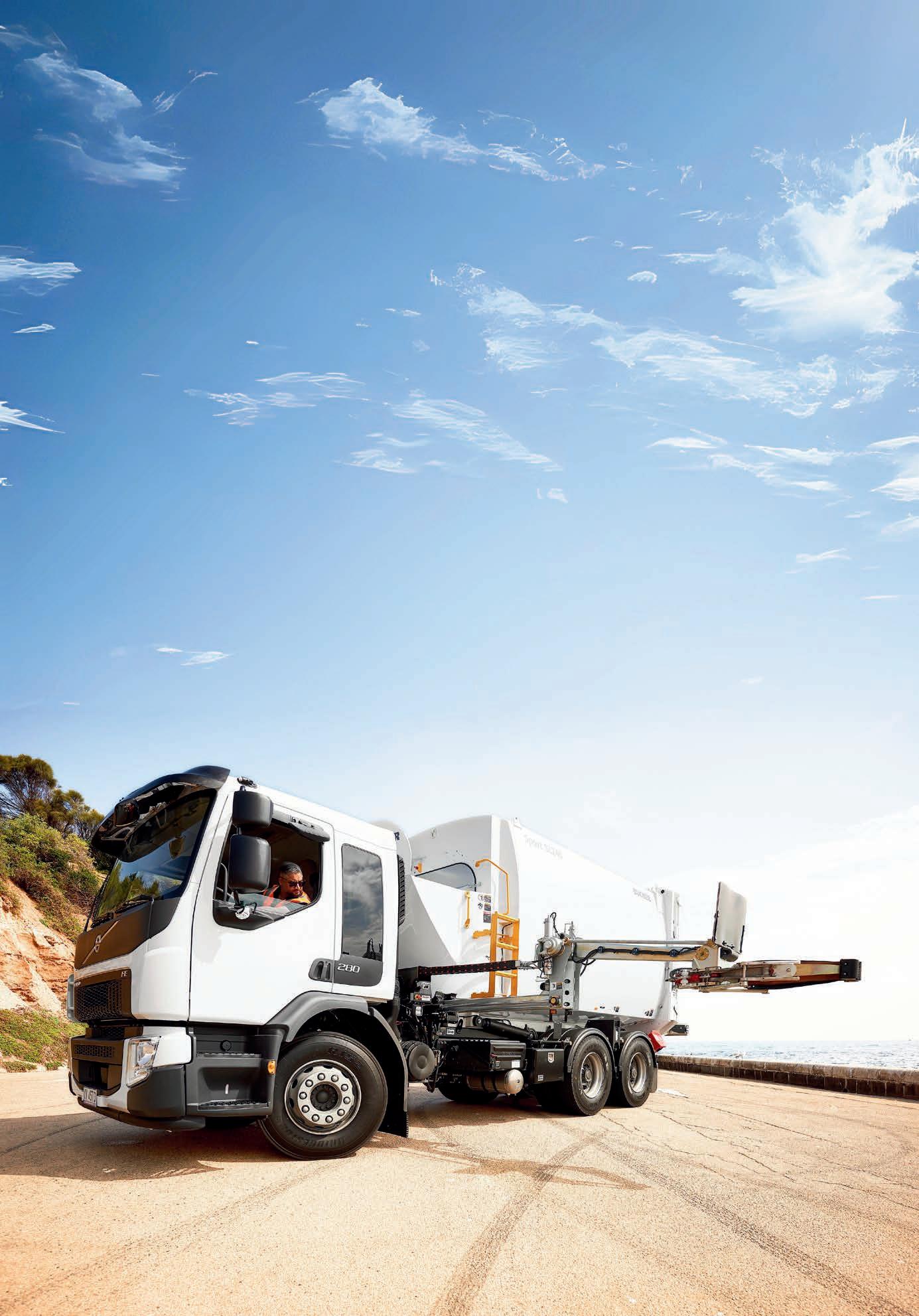
Faster hopper clearance with continuous packing.
Lighter and stronger body for increased payload capacity.
BucherIQ CANBus Control System with 12" touchscreen.
Fastest bin lifter in the market.
Load sensing hydraulics for less fuel consumption and noise levels.
Shortest wheelbase for areas with restricted access.
Visit us at Waste Expo Australia Stand G143
29-30 October MCEC, Melbourne
